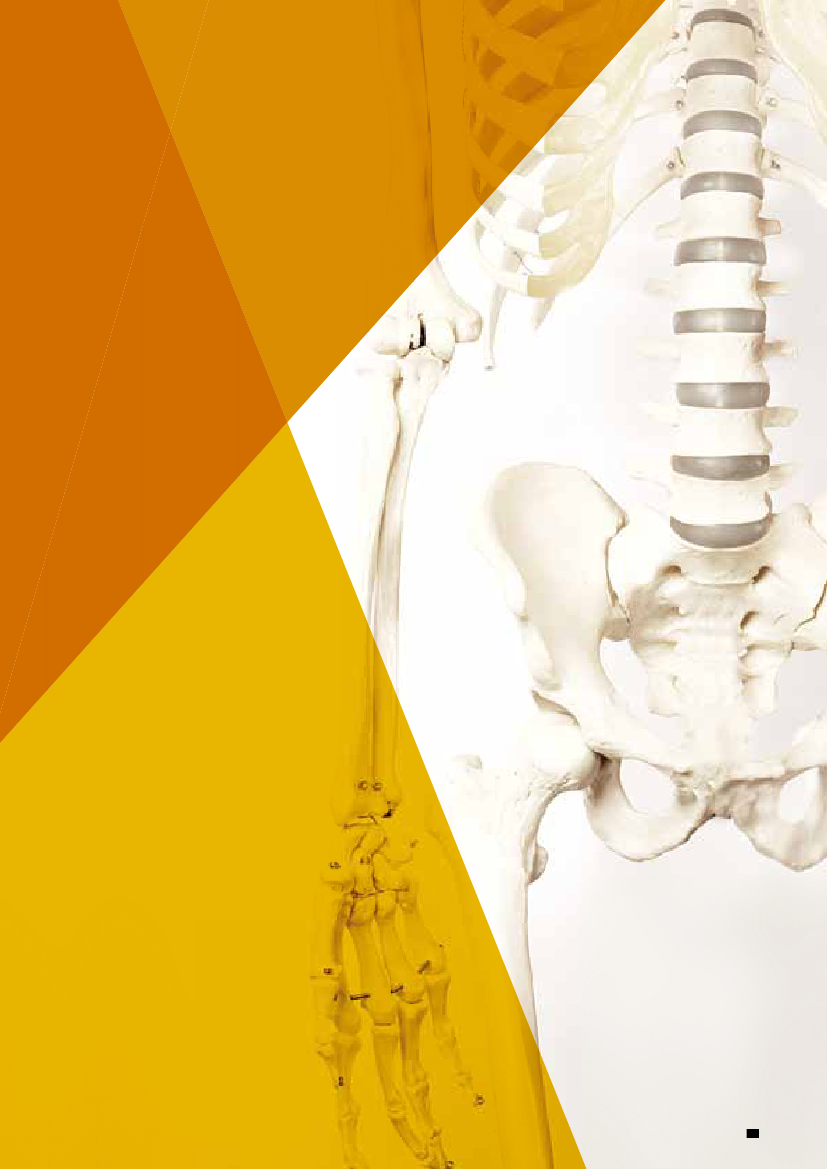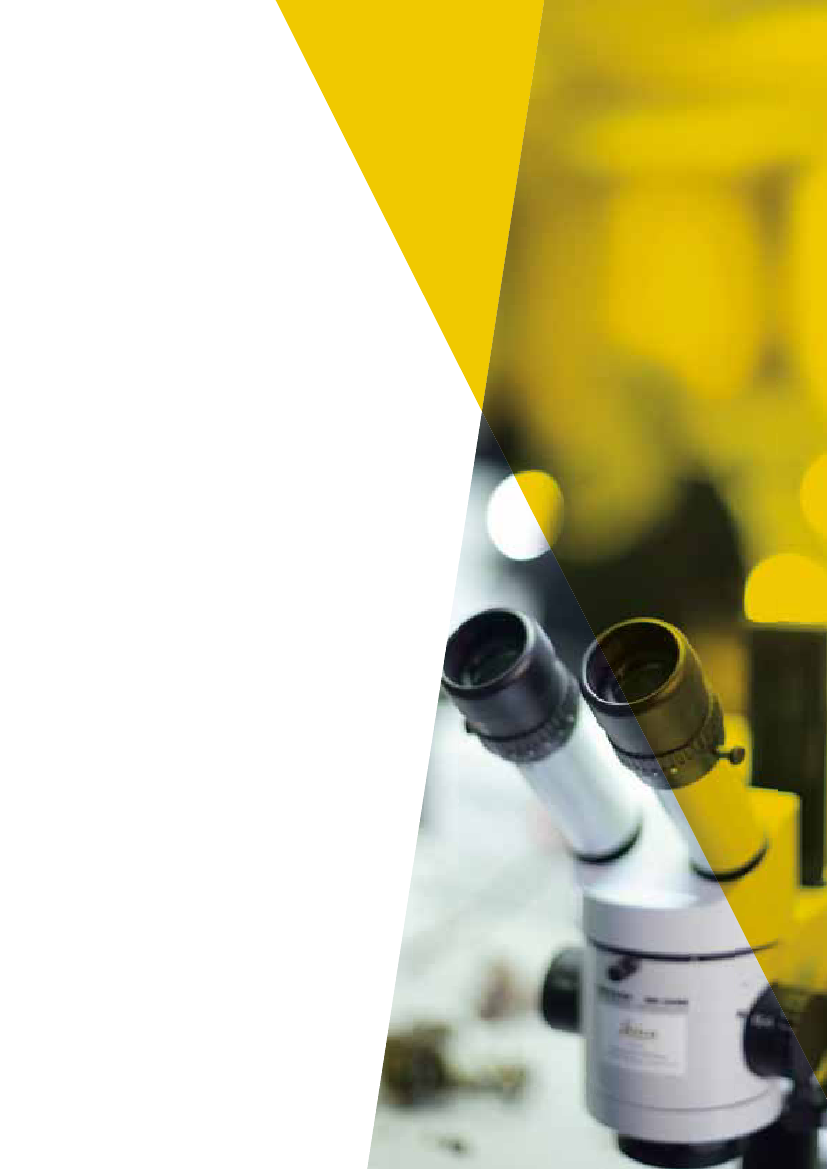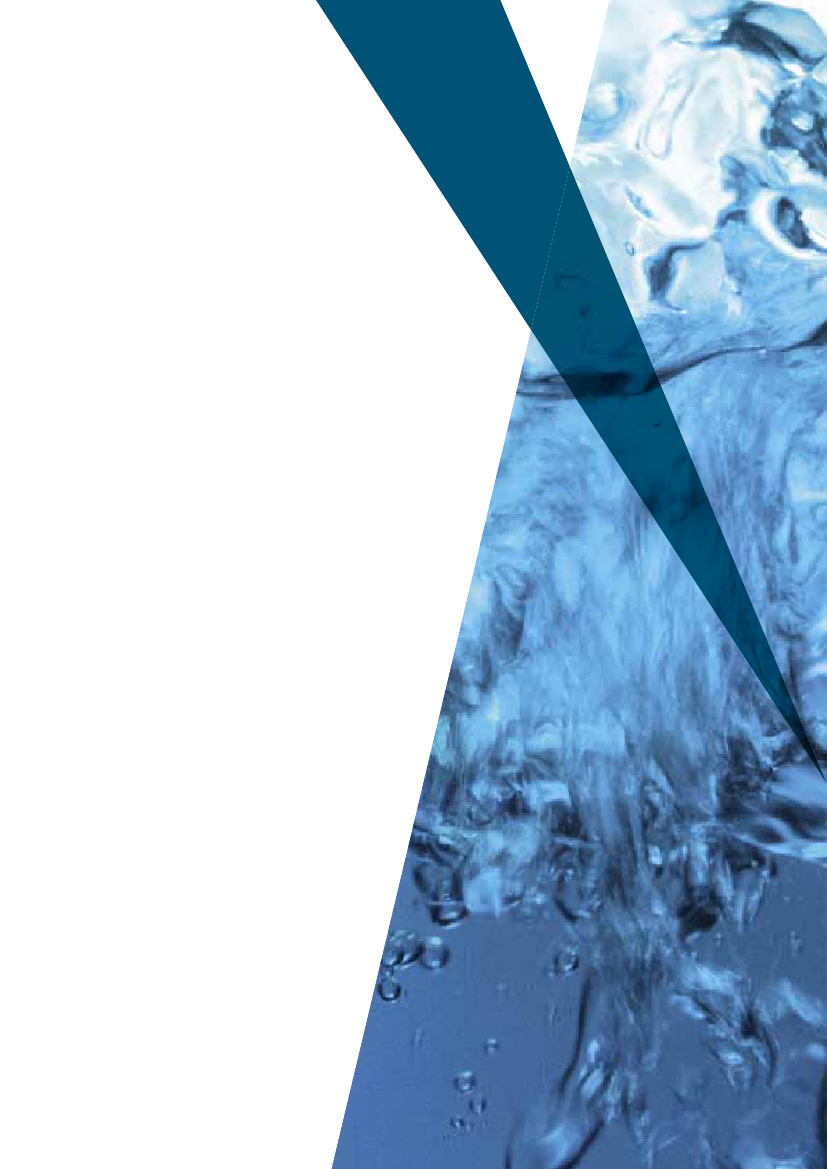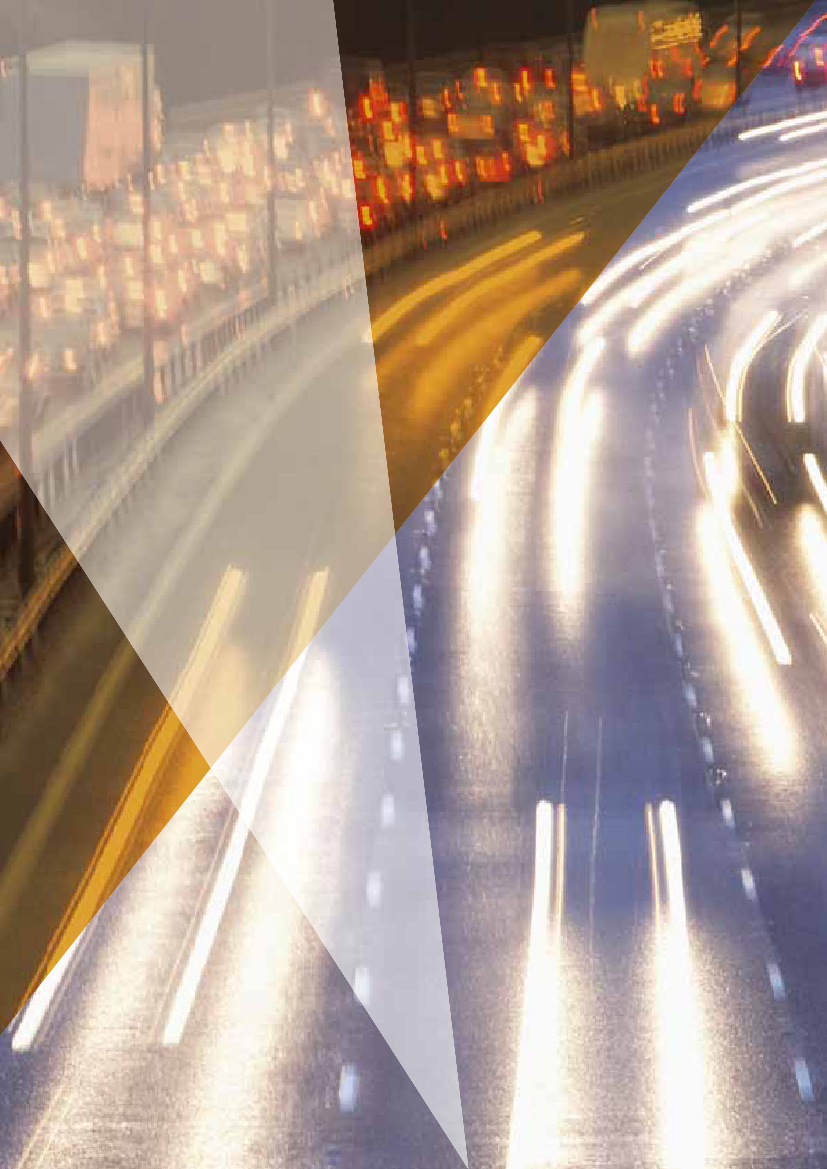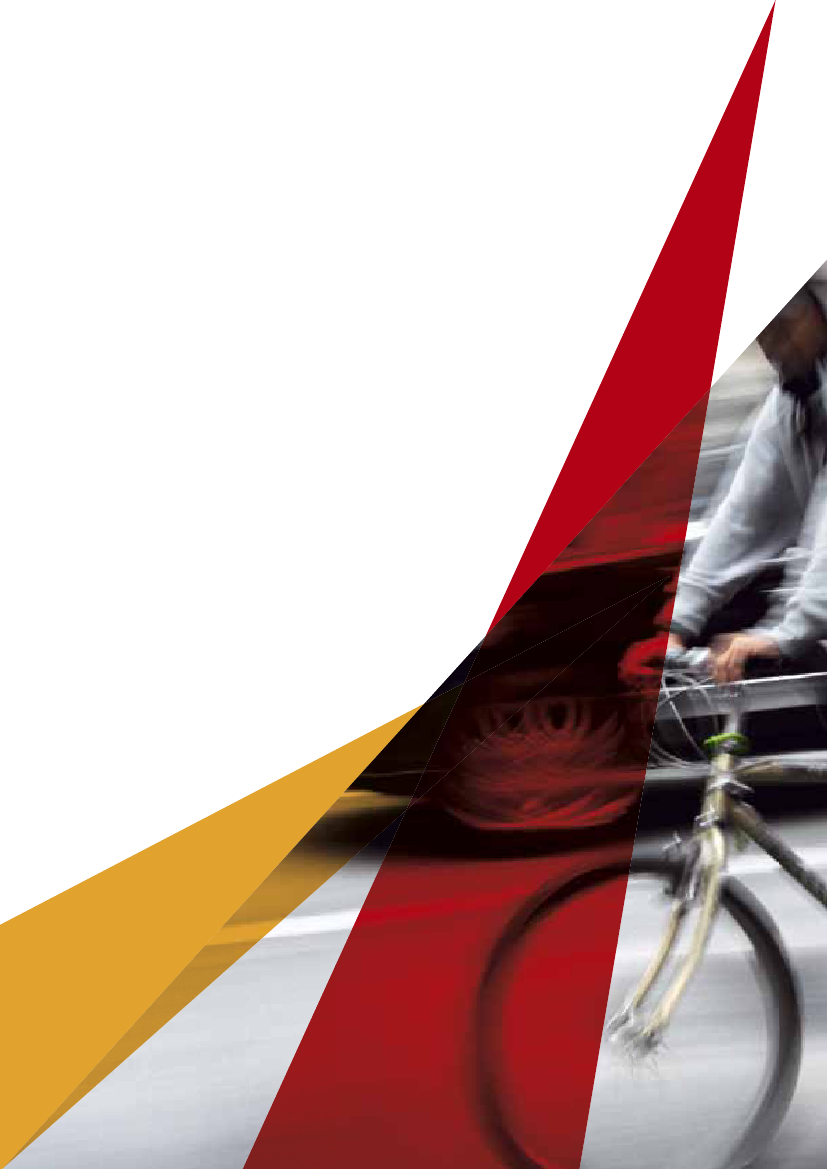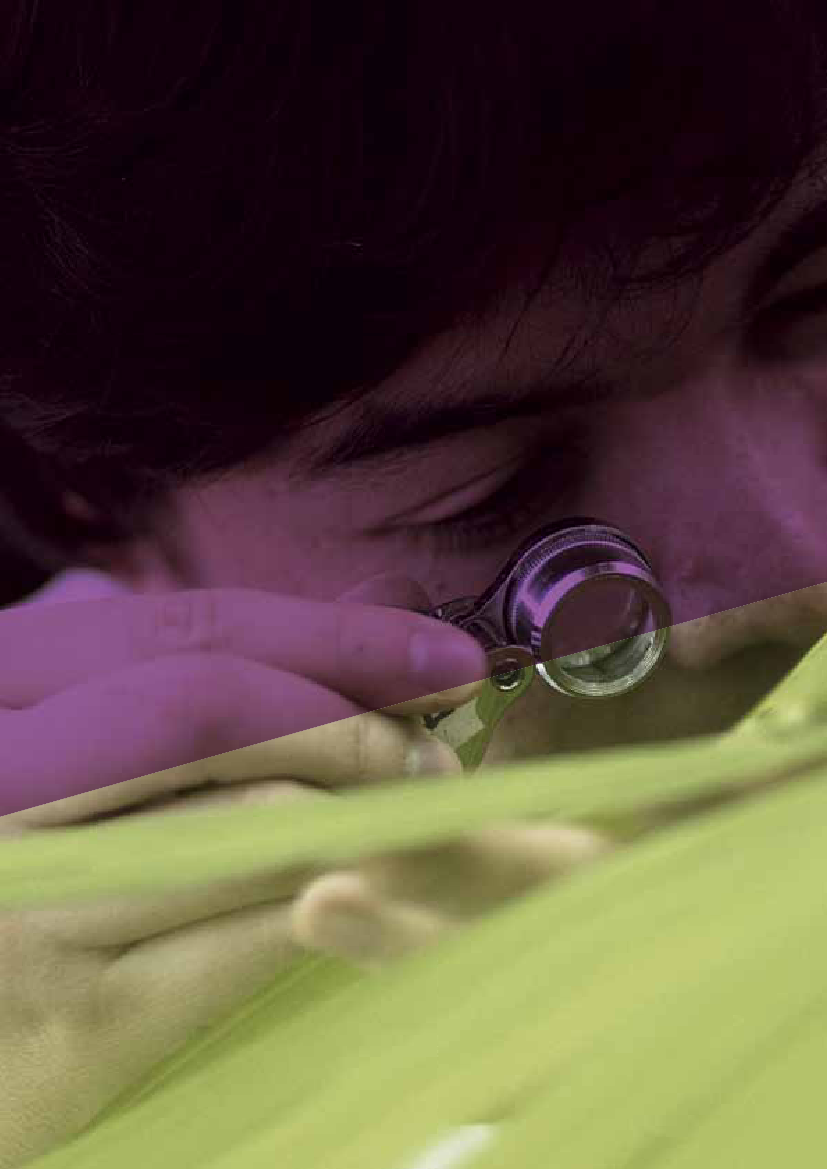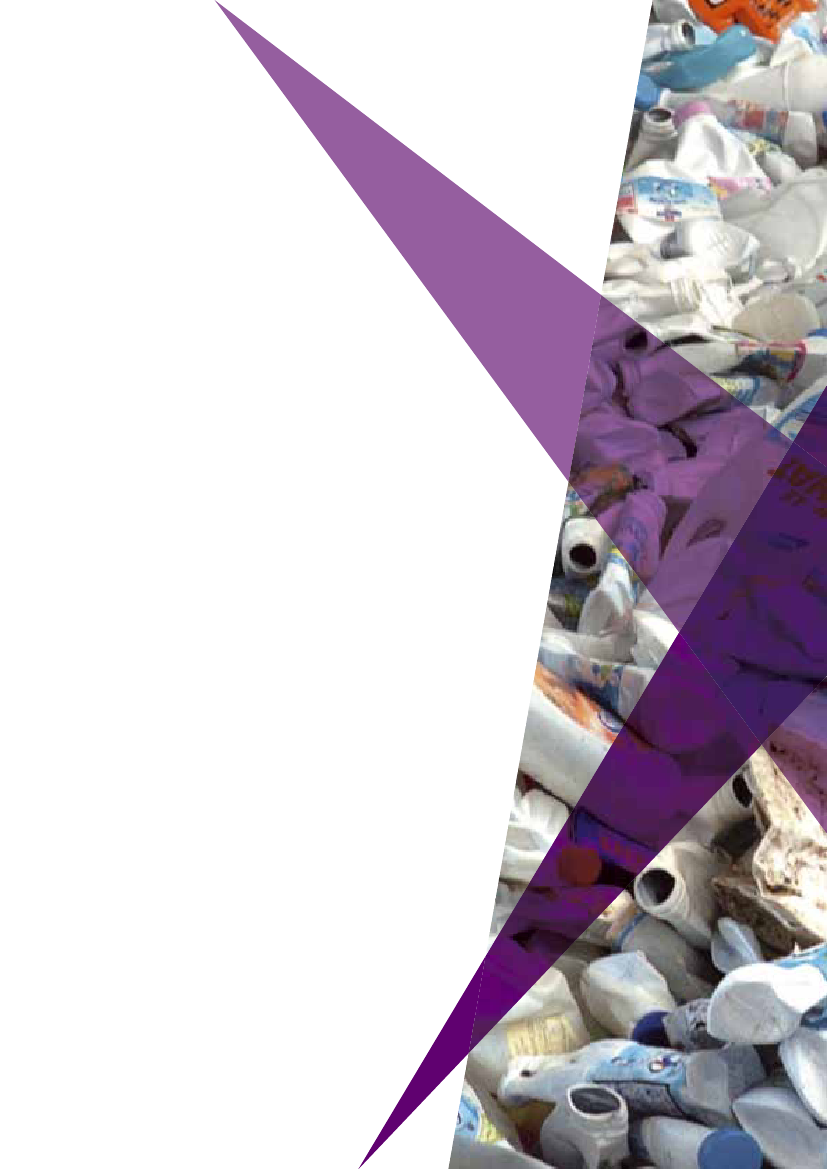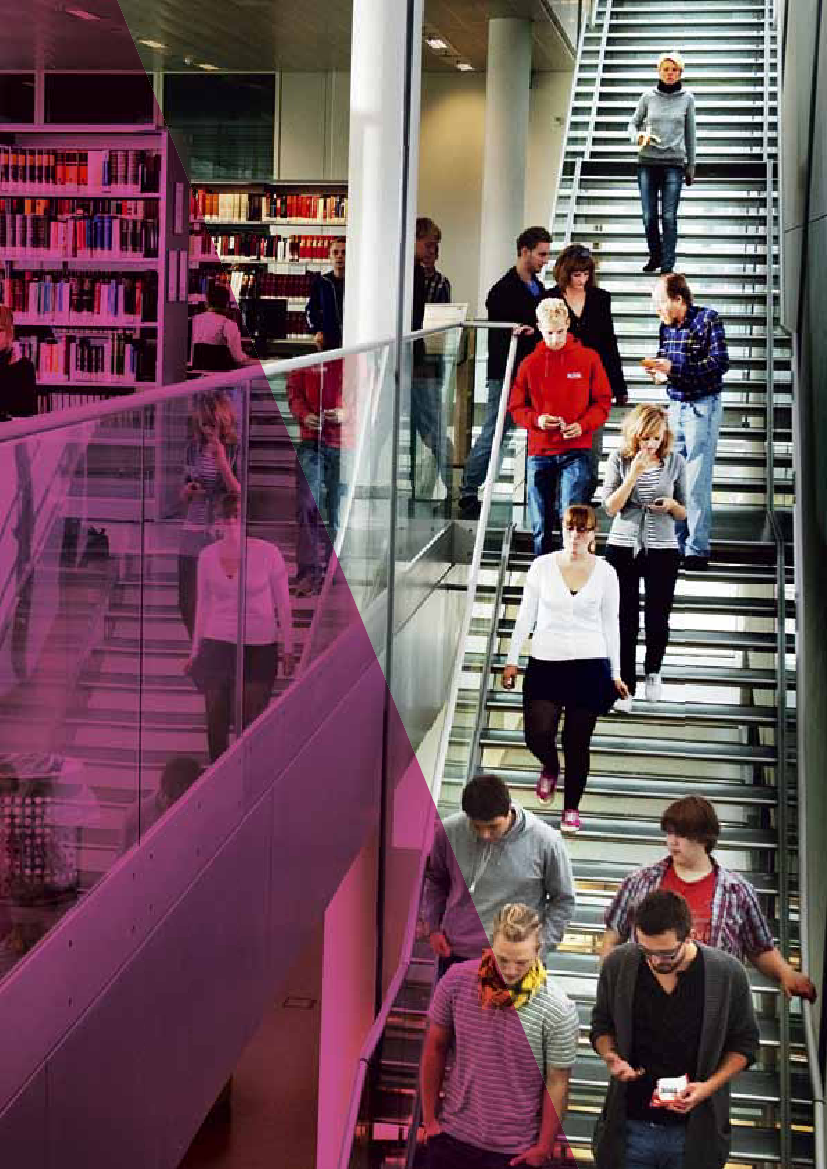Udvalget for Forskning, Innovation og Videregående Uddannelser 2011-12
FIV Alm.del Bilag 140
Offentligt
COPENHAGENVISIONS FOR HORIZON 2020- from Copenhagen Research Forum
Copenhagen 2012
Visions for Horizon 2020- from Copenhagen Research Forum2012Editorial Board:Professor Liselotte Højgaard MD, DMSc, Professor Deborah Smith,Tine Willum Hansen MD, DMScProfessor Peter Olesen, Director Kees de Gooijer, Anna Munck LaybournProfessor Katherine Richardson, Professor Johan Rockström, Mai WinstrupProfessor Ole Wæver, Professor Loet Leydesdorff, Kristoffer KroppHead of Department Niels Buus Kristensen, Programme Director Dr Christian Piehler,Claus Hedegaard SørensenDr Jørgen Kjems, Professor Kjell Hugo Bendiksen, Nicolaj Tofte BennecheAnne Line Mikkelsen, Torben Høøck Hansen, Jan AndersenThe report is made available by financial support from:University of Copenhagen, Technical University of Denmark and the Capital Region ofCopenha-genCopyright:Grapics and Layout:Publisher:Editorial office:All rights reservedWe Love PeopleCopenhagen Research Forum - 2012Technical University of Denmark, Anker Engelundsvej 1DK-2800 Kgs. Lyngby
PrefaceOn behalf of the Copenhagen Research Forum (CRF) I would like to thank the European Commission forits strong visionary proposal for the 2014-2020 Framework Programme for Research and Innovation:Horizon 2020.The CRF invited more than 600 researchers from across Europe to contribute their comments andexpand on ideas concerning the six societal challenges that form an important part of Horizon2020. Divided into six panels, one for each challenge, recognised experts from both old and newEU member states have made contributions. This is the rst time in the history of EU frameworkprogrammes that researchers, without the involvement of other stakeholders, have worked jointlyto formulate a research-based critical view of the European research agenda.The goal of Copenhagen Research Forum is to provide advice and input to Horizon 2020to strengthen research in Europe.The six societal challenges are not to be seen as silos wherein experts are isolated fromeach other in academic disciplines. One of the CRF’s major ndings is realizing howintensely the themes and solutions to societal challenges are interacting and interdependent.The CRF’s mission would not have turned out as successful without our positive andconstructive interaction with our research colleagues from all over Europe as well as ouropen, valuable communication with the European Commission and the Danish Ministryof Science, Innovation and Higher Education.Europe needs to nd solutions for growth, prosperity and safety for the next decadein the areas of health, food & agriculture, energy, transport, climate change &resources and societies. The Copenhagen Research Forum represents theEuropean research community’s commitment to contributing to a better,stronger Europe, through better, stronger research.Professor Liselotte Højgaard,President of Copenhagen Research ForumCopenhagen, January 2012
4
5
Content
Executive summaryAcknowledgementsCopenhagen Research ForumHorizon 2020 at a glanceCross-cutting research issuesHealth, demographic change and wellbeingFood security, sustainable agriculture, marineand maritime research and the bio-economySecure, clean and ef cient energySmart, green and integrated transportClimate action, resource ef ciency and raw materialsInclusive, innovative and secure societiesFramework conditions for researchCRF organisational structureReferencesParticipantsPanels
61011121420
28384860728284858688
ISBN:[978-87-985272-7-5] (electronic version) • ISBN: [978-87-985272-8-2] (printed version)
6
Executive summary
Solving the societal challenges of Europe demands the collabora-tion of the best researchers in Europe to provide sustainable solu-tions. The European Commission Proposal for Horizon 2020 is astrong platform and a good starting point.Copenhagen Research Forum gathered 80 European scientists inJanuary 2012 to discuss these societal challenges and depict howresearch can contribute with the best solutions. The outcome of theCRF is this report, which contains a set of recommendations to theEuropean ministers for research and innovation, the European Par-liament and the European Commission on how to solve the societalchallenges through research.For each of the social challenges the six abstracts below summarisethe key issues, but one of the strongest messages coming from theCRF was that the societal challenges can only be solved in a truemulti- and cross-disciplinary research context. Future research solu-tions need to transcend and expand our traditional view, and truecross-cutting research is the key word. The Horizon 2020 programshould, therefore stimulate and encourage collaboration betweenthe research communities associated with the 6 de ned chal-lenges. One possible organisational mechanism for achieving thisgoal could be that, in addition to programme elements dedicatedto each of the challenges, an element could be established thatcuts across all disciplines. In this manner, it could be ensured thatresources were speci cally dedicated to the issues that cut acrossthe individual challenges.The solutions to the societal challenges cannot be seen only in aEuropean perspective, as the nature of most of the problems isglobal. Research collaboration with the best teams in other partsof the world will bring better solutions, faster and cheaper, throughsharing and collaboration. Europe can provide the platform andframework and initiate the needed global research collaboration tosecure Europe as a prosperous, sustainable region.New challenges will arise prior to the year 2020, which is why adynamic approach with new research solutions that also use risk-taking approaches is needed and why emerging challenges must berecognised early. An end-user, problem-solving approach should betaken in order to strengthen the impact of the Framework Programmeand the utilisation and exploitation of outcomes and results.The open, transparent and simple approach to both calls andprogramme administration as proposed in Horizon 2020 is highlyappreciated and should be further developed to enhance theuserfriendliness of Horizon 2020.
With these solutions, the money spent for Horizon 2020 canprovide the optimal innovation as well as create new jobs, ideas,knowledge and education – for a wealthy, healthy Europe as aninclusive, innovative and secure society.HEALTHTo relieve the threat to human health and welfare imposed by anexpanding number of major health challenges, biomedical researchand its implementation in clinical practice must be supported andaccelerated. To achieve this in the next decade, a paradigm shifttoward personalised medicine will be of major importance, withthe overriding aim of improving every citizen’s lifelong health andwellbeing. Basic, translational, and clinical research of high qualityprovides the foundation for European health systems, offering theopportunity to link with social, cultural, and environmental expertiseto facilitate world-class multidisciplinary research. The global revo-lution in biomedicine is also providing access to new technologiesthat will require expansion and implementation to tackle the healthchallenges that Europe faces. A European platform engaging allkey stakeholders to ensure discovery and delivery of these technolo-gies will be crucial. Establishment of a European Strategic Actionfor Healthier Citizens is also recommended to assist in strategiclong-term healthcare research and planning, including preventivemeasures, and the delivery of best practice across Europe. In mostEuropean countries, healthcare is a driving factor for investment– in industry, in education and training, and in the European knowl-edge base for wealth creation. The proposals in this document willenhance investment and create jobs in research and innovation,improve the healthcare status of Europeans and at the same timedrive down integrated societal healthcare costs.FOODThe overriding challenges of increasing demand, competition forland use and other resource scarcities put massive pressure onagriculture and the food and feed industry to produce signi cantlymore per unit of a given resource. Food, agriculture and land usemust be seen in a much more complex and multi-directional valuechain, where research and innovation must encompass needs andopportunities from climate, available resources, environmentalsustainability, transport, energy and health perspectives, not tomention social and economic requirements. The processing offood, feed, bio-energy and bio-materials must also be seen, to amuch greater extent, from a holistic perspective that includes a fulllife-cycle approach to the use of raw materials, either for their freshuse or their conversion into shelf-stable and re ned products andtheir use in the associated supply chain. Here, key objectives arereductions in food waste and water consumption, valorisation of allbio-resources, including municipal bio-waste and agro- and bio-industrial side streams, as well as the recycling of suf cient amounts
7
of carbon and phosphor to maintain soil vitality. Valorisation frombiomass must be optimised by developing and utilising smart andenergy-ef cient processing chains, while maintaining the chemicalintegrity of valuable components and exploiting the highest valuefrom each biomass component (e.g. nutraceuticals for gut healthimprovement, food ingredients, proteins, optimised animal feed,biopolymers, bres, chemical feedstocks, car fuel, and, nally,converting any remaining residues to biogas, electricity and heat.Increasing prevalence of diet-related diseases and disorders callsfor a balanced health care concept more geared towards preven-tion. This calls for new knowledge for the development of afford-able and effective dietary adjustments for better health at individualand population levels, with special emphasis on children’s needsand the ageing population. There is an overall need to create aninnovation culture where researchers, companies (especially SMEs),university education, NGOs and governments (including regulatoryauthorities) work closely together to increase the speed and volumeof the exploitation of research and knowledge across this area.ENERGYSecure, clean, and ef cient energy is rightly chosen as a key focusarea in the Horizon 2020 agenda as it is essential to be able toprovide the EU with clean, reliable and affordable energy midwaythrough this century. Stronger national and transnational efforts,as well as better coherence and coordination are badly neededbetween national and joint European efforts, including public-private partnerships with all EU countries. This requires European-scale management and support in order to: (1) enable a decisivecontribution to climate protection; (2) achieve European technologyleadership; and to (3) give adequate support to European industry.Horizon 2020 priorities should build on: (1) a revised SET-Planbased on a thorough review at the beginning of Horizon 2020,including a critical update of the road maps based on ambitiousbut realistic scenarios for the development and deployment of tech-nologies, and (2) a complementary systemic approach to combinetechnological, economic, political, social and cultural research tofacilitate the transformation of the energy system as a whole. Col-laboration of social sciences and humanities with “hard sciences”must be recognised as necessary and organised and funded ac-cordingly to meet the challenges at system level.More ef cient innovation programmes and new instruments areneeded to couple educational efforts with research and innova-tion to ensure that enough trained talent is available to realise theambitious roll-out scenarios for the different energy technologies,and for the transformation of the energy system as a whole. Directmobilisation of universities in addressing systemic challenges shouldbe given high priority. Mobility of scientists and students among
research institutions and industry should be pursued through newtypes of exible grants. Transfer of knowledge from universities tostudents and companies must be made in a more ef cient way.Public technology procurement policies could be used to shortenthe time from research to market.Main criteria for selection of European projects in Horizon 2020are scienti c excellence, society needs and European competitive-ness combined with more focus on outcomes and impacts. Thecomposition of research consortia should give high priority to thequality of partners and their openness to new partners. Openness,dialogue, and competition are the proper values to ensure qualityand rate of progress.TRANSPORTEf cient and sustainable transport for people and goods is vital forEurope’s prosperity. The transport sector’s overall mission to providemobility is constrained by a complex set of multiple additionalconsiderations which can be summarised in the comprehensiveconcept of “environmental and societal sustainability”. The complex-ity of the transport (sub)-challenges urges for continuous researchand development and requires closer cooperation across scienti cdomains and integration across universities, research institutions andindustry than in the past. In addition, the multiple and to some extentcon icting aims for transport policy have to be taken into accountin the research strategy for every speci c research activity. Theradical transformations of the transport sector required to achieve thevision of ‘smart, green and integrated transport’ call for cross-cuttingresearch and research on feasible transition pathways.The range of highly relevant transport research topics is broad. How-ever, there are three overriding challenges facing the development ofa competitive and sustainable transport system which are absolutelycrucial and particularly hard to solve and where research thereforeshould be prioritised as an essential part of the solutions:Smart: Congestion due to overexploitation of system capacity;Green: Greenhouse gas emissions from transport’s oil dependency;Integrated:A modally divided and vulnerable transport system.Meeting the political challenge of both improving mobility bysmarter utilisation of a more integrated transport system and mak-ing it greener by radically reducing greenhouse gas emissions willrequire not only technological solutions but also better understand-ing of transport behaviour and the use of innovative and effectivepolicy instruments. This calls for a more pronounced role for socialsciences than in previous Framework Programmes. In many casesthe ef ciency of research can also be improved by strengtheningthe integration of scienti c domains.
8
Technological innovation will still be of paramount importanceas development of novel and more ef cient technologies will bepivotal for reaching the main European transport policy goals:•Cleaner and safer vehicles for all modes;•Cost-effective alternative fuels, (electric) drives, propulsiontechnologies, battery and chemical storage of energy and newmaterials for vehicle construction;•Advanced ICT for personalised real-time travel information withmodal integration, metropolitan traf c management and smart pay-ment systems;to highlight a few exceedingly important areas which will requiremassive investments in R&D&I towards 2020 and beyond.Apart from greenhouse gas (GHG) emissions the majority of thenegative impacts from transport occur in and around major urban ar-eas where the majority and an increasing share of Europe’s popula-tion live. This calls for intensi ed research in the challenges related tourban mobility. A signi cant change of modal split away from cars isnecessarily an essential part of the solution. This will also make citiesmore liveable, but it will require both sticks and carrots to achieve,e.g. urban road pricing schemes accompanied by more competitivepublic transport and facilities for cycling and walking.Expectations for increasingly scarce funding for infrastructureimprovements highlights the need for cross-modal integration as ameans to improve overall ef cient and sustainable mobility ratherthan effectiveness at modal level. Further development and imple-mentation of concepts such as door-to-door mobility, seamless con-nectivity, and global interoperability can contribute to more customer-oriented services. In the future, transport may be more vulnerable toextreme events, and this calls for research in resilient systems.Finally, traf c is still responsible for a death toll in the EU of about35,000 annually and many more serious injuries. Hence, in spite ofdramatic improvements in traf c safety over the last four decades,substantial research efforts are still indispensable. Reaching the‘close to zero’ vision will require a paradigm shift toward a holisticsystem approach.A substantial part of the chapter on transport is devoted to present-ing a number of highly important yet indicative research topicsorganised under the following three headings: Mobility – behaviourand modelling; Balancing demand and capacity; and Governance,nancing and organisation. The goal has been to also inspire thesubsequent work with implementing Horizon 2020 in future workprogrammes and calls.
CLIMATEWith the global population currently at 7 billion and projected tobe at least 9 billion by 2050, not to mention increasing per capitaconsumption, the human demand for the Earth’s natural resourceshas never been larger. With this human pressure on the Earth’sliving ecosystems (e.g. biodiversity) and abiotic resources (e.g. rareEarth metals), the establishment of mechanisms for intra- and inter-generational sharing of essential natural resources becomes thegreatest challenge to the continued development of all human socie-ties. The primary role of research in developing these mechanismsmust be to provide the knowledge necessary to underpin soundand responsible decision making. Input from all research disciplinesis necessary to provide this knowledge. While the ultimate goalof research relating to this challenge is to sustain societal develop-ment, at the heart of research focusing on developing more respon-sible use of natural resources must also be the development of anunderstanding of societal transformation processes. A large globalmarket is anticipated for technologies and processes that improvethe ef ciency of resource use and/or that can provide substitutes fornatural resources under pressure. However, transition to sustainableresource use will also require a change in values and thinking. Oneimportant contribution Horizon 2020 can make to these processesis to provide means whereby scientists from different academicelds are brought together to address possible transitions and howto achieve them.Climate change constitutes one of the most urgent global resourcechallenges facing society, where the resource in question is ourcommon atmospheric receptacle for the greenhouse gas wastesof society. Development of actions and strategies for dealing withthis challenge can, potentially, provide models for dealing withresource scarcity issues coming on line (biodiversity, ecosystemservices, water, phosphorous, ores and metals etc.). A generalparadigm for dealing with resource scarcity is reducing the needfor – and more ef cient use of – the resource, combined with theadaptation of human activities to changed conditions and/or therecognition of resource scarcity. In dealing with resource scarcity ingeneral, and climate in particular, a major challenge is to channelthe knowledge gained on the mechanisms of the Earth’s system intopolitical and societal action. This requires cross-disciplinary and in-terdisciplinary approaches that integrate the research conducted inmany elds within the natural sciences with that conducted in otherdisciplines (including engineering, statistics, social science, andhumanities) to provide solution-oriented results to decision makers.
9
Resource scarcity is a global issue, although it is not experienced tothe same extent everywhere and not all regions enjoy the researchinfrastructure necessary to support good decision-making. There-fore, regions such as the EU that rely strongly on resources from allparts of the world and have well-developed research capacities,should not limit their research activities to their own geographicalregions. Existing knowledge on the causes of climate change, forexample, provides a suf cient basis for society to act immediatelyon reducing potential human interference with the climate system.Such knowledge is also being further developed for other aspectsof the declining resource base. Therefore, the focus in Horizon2020 should be to underpin decisions designed to increase theef ciency and impact of the societal response. This will, however,include research on the climate and other resource systems in orderto better understand systemic interactions, the collection of baselineinformation, and the establishment of monitoring activities to assessthe ef cacy of different mitigation and adaptation approaches.SOCIETIESThe focus on ‘inclusive, innovative and secure societies’ providesa highly welcome challenge to the social sciences and humanities(SSH). This societal challenge is well justi ed not only becausethese qualities are particularly vital for future European society,but as importantly, because therelationshipbetween these threecharacteristics is crucial and hitherto understudied. Inclusion, in-novation and security are frequently studied by separate researchcommunities (and similarly politically addressed independent of oneanother), but already existing research in these various elds sup-port the premise that they are closely linked. Some links are basedon synergies, where, say, inclusion and security are importantconditions for innovation, or growth through innovation can enablefurther inclusion and security. At other points, tensions can be iden-ti ed, e.g. when some forms of innovation or security potentiallymarginalise certain groups and thus reduce inclusion.In response to the existing proposal of the Commission, the presentreport aims to show how it is possible to pursue a focused strategymore consistently and ambitiously. As currently presented, a consid-erable risk remains that this challenge of ‘inclusive, innovative andsecure societies’ will become at best the three sub-challenges of‘inclusion’, ‘innovation’ plus ‘security’, with the potential for furtherdisintegrating into separate topics (calls). Integrating them demands
carefully attending to the cross-cutting themes within this broadchallenge (which de facto covers most of the social sciences and agood deal of the humanities, plus some informatics, etc.) as well asformulating some currently still absent linkages to other challenges.The Horizon2020 proposal tries to achieve coherence and integra-tion on the research agenda by narrowing the focus towards “hard”technologies, especially statistics, assessments and measures ofef ciency (evidence-based lessons). It shows a correspondingtendency towards a somewhat technocratic de nition of the natureof challenges (e.g. in the security part, critical infrastructure protec-tion is prioritized over international politics). Indeed, inclusion-innovation-securitycanbe viewed from a technocratic angle andthe relevant form of knowledge be generated around data and ef -ciency assessments, but this represents a limited political and socialvision that underestimates the power of citizens and communities tocontribute to the realisation of inclusion, innovation and security.Corresponding to a vision comprising a broader mobilisation of so-cietal energies are forms of research that employ a wider selectionof methodologies and theories to study the dynamics of society asproductive and generative, rather than as the site of problems to besolved. Society must become the solution. Europe faces dramaticchallenges that cut across established elds: creating cultures andmentalities of openness and innovation, reinventing the welfare-state, recreating politics and handling new lines of inequality anddiversity within Europe. Research needs to go beyond technicalquestions to more controversial areas like global power shifts,sources of the economic crises and malaises affecting politicalparticipation, legitimation and self-steering. In such times of deepchange, not all statistical relationships will remain stable, and Euro-pean social knowledge therefore needs both improved databasesand theoretical work. The social sciences and humanities can playkey roles in relation to both the other ve grand challenges and thesigni cant ones, they have identi ed themselves. It is particularlyimportant that researchers in the SSH engage scholars in the hardsciences in a joint effort to cultivate research-based innovationregarding the way expertise and democracy interact.
10
Acknowledgements
Copenhagen Research Forum was established by the Universityof Copenhagen, Technical University of Denmark and the CapitalRegion of Denmark in autumn 2011. The aim was to create a forumwhere researchers in Europe, independently and without any otheragenda, could discuss and contribute to the European Commis-sion’s proposal for the next Framework Programme for Researchand Innovation: Horizon 2020.In the autumn of 2011 more than 600 researchers were invited toparticipate in a virtual discussion forum. I would like to thank every-one who contributed with ideas and suggestions.I would also like to take the opportunity to thank those who havecommitted time and effort to making the Copenhagen ResearchForum successful. The chairs of the six panels deserve specialthanks for their dedicated effort: Professor Deborah Smith, Profes-sor Peter Olesen, Director Kees de Gooijer, Professor KatherineRichardson, Professor Johan Rockström, Professor Ole Wæver, Pro-fessor Loet Leydesdorff, Head of Department Niels Buus Kristensen,Programme Director Dr Christian Piehler, Dr Jørgen Kjems andProfessor Kjell Hugo Bendiksen. Sincere thanks are also due therapporteurs for supporting the writing of this report: Tine WillumHansen, Anna Munck Laybourn, Mai Winstrup, Nicolaj Tofte Bren-neche, Kristoffer Kropp and Claus Hedegaard Sørensen.Acknowledgement is due the European Commission for lending anear to the conference and for providing positive feedback on theprocess and outcome. With CRF being an associated conferenceto the Danish EU presidency programme, I would also like to thank,on behalf of the organisers, the Danish Ministry of Science, Innova-tion and Higher Education for its support and collaboration.Without the steering committee of the University of Copenhagen,Technical University of Denmark, and the Capital Region ofDenmark, not to mention Anna Haldrup, Claus Henrik Andersenand Kristian Johnsen, together with CreoDK and Birgitte Wederking,the Copenhagen Research Forum would not have taken off.I would also like to give a special thanks to Anne Line Mikkelsen,Torben Høøck Hansen and Jan Andersen for handling the practi-calities of the CRF-process in a highly professional and dedicatedmanner.Finally, I am grateful to the organisers for having given me thehonour of chairing the Copenhagen Research Forum.Professor Liselotte Højgaard,President of Copenhagen Research Forum.
11
Copenhagen Research Forum
European research can contribute to solving the challenges facingsociety today and tomorrow in the best way possible by ndingsolutions, working across disciplines and involving stakeholders.European researchers are willing to participate by doing thenecessary research and setting the research agenda. CRF is oneof many responses to Horizon 2020, but this report is special asit was written independently by researchers from all over Europeand from many disciplines. CRF has provided an opportunitywith room for creativity and cross-disciplinary dialogue. Oneof the main messages is that cross-disciplinary research will beof utmost importance for research in Europe and the rest of theworld in the future. Tomorrow’s research issues are complexand the societal challenges vast. Only by collaboration, bothin planning and doing research, will we succeed. We needcollaboration and real dialogue between all areas of science,technology, life science, biomedicine, social science and hu-manities. The outcome of CRF is a report advising Europeanpoliticians and leaders on how to prioritise and how toutilise the research being carried out now and over the nexteight years. The six societal challenges form a framework,but research across those challenges as well as combiningand cross-fostering new ideas and solutions are vital to thesuccess of Horizon 2020.PROCESS BEHIND COPENHAGEN RESEARCH FORUMThe main idea behind CRF was to involve a broadspectrum of Europe’s top-level researchers in the makingof Horizon 2020, as part of its preparation would takeplace during the Danish EU presidency in the rst halfof 2012.The University of Copenhagen, Technical Universityof Denmark and the Capital Region of Denmarkwanted the scienti c community’s input to Horizon2020, unbiased and with the aim of making Hori-zon 2020 as attractive as possible to researchesworking in the areas covered by the six societalchallenges. In spring and early summer of 2011the concept was nalised. The key issue was thatCRF should convey ideas, visions and commentsfrom active, outstanding researchers, all of whomwere invited personally to join CRF.
The tools of CRF were designed to be as simple as possible andto take as little time as possible. Moreover, the idea was to putthe scienti c community in charge of the process and for the threeorganisations behind the project to only provide funding andmanpower for the:•Chairship – This involved contacting researchers for the sixgroups and establishing a chairship comprised of one Dane andone European researcher for each challenge. They were then askedto invite up to 100 researchers to offer their views in a virtual dis-cussion forum. Out of the invitees, 15 researchers from each groupwere also asked to meet at a workshop conference in Copenhagenon 16 January 2012 shortly after the Danish EU presidency began.•Virtual discussion forum – Divided equally between the six soci-etal challenges, the 600 researchers were invited to comment onthe draft text of Horizon 2020. The researchers were asked to con-tribute personal visions for the future as well as point out needs andpossible solutions. They were also asked to suggest and commenton the technologies and the priorities within the given challenge,as well as to consider the instruments and implementation neededto ensure success as seen from a scienti c perspective. Lastly, theywere asked to contribute their ideas on how to secure the link be-tween research and the innovation perspective stressed in Horizon2020. All of the input was collected in a draft report that formedthe basis of the aforementioned conference in Copenhagen.•Conference - On 16 January 2012 the six panels met and dis-cussed the draft report, offering comments and adding new ideasinspired by the input collected in the virtual discussion forum. Theaim was to reach agreement on: 1) the views and recommenda-tions in each of the six panels; 2) a joint statement during plenarysessions expressing the view on scienti c issues cutting across allsix challenges; and 3) recommendations for the implementationof the challenges so they become a basis for excellent researchand far-reaching solutions.•Outcome – A condensed report offering ideas and solu-tions that could help form Horizon 2020 from a scienti cpoint of view; presentation of the conclusions to the Euro-pean community in an open dialogue.
12
Horizon 2020 at a glance
Horizon 2020 is the nancial instrument implementing the Innova-tion Union, a Europe 2020 agship initiative aimed at securingEurope’s global competitiveness. Running from 2014 to 2020 withan € 80 billion budget, the EU’s new programme for research andinnovation is part of the drive to create new growth and jobs inEurope.Horizon 2020 provides major simpli cation through a single set ofrules. It will combine all research and innovation funding currentlyprovided through the Framework Programmes for Research andTechnical Development, the innovation related activities of theCompetitiveness and Innovation Framework Programme (CIP) andthe European Institute of Innovation and Technology (EIT).The proposed support for research and innovation under Horizon2020 will:• Strengthen the EU’s position in science with a dedicated budgetof € 24 598 million. This will provide a boost to top-level researchin Europe, including an increase in funding of 77% for the very suc-cessful European Research Council (ERC).• Strengthen industrial leadership in innovation with a budget of €17 938 million. This includes major investment in key technologies,greater access to capital and support for SMEs.
• Provide € 31 748 million to help address major concerns and so-cietal challenges shared by all Europeans, such as climate change,developing sustainable transport and mobility, making renewableenergy more affordable, ensuring food safety and security, andcoping with the challenge of an ageing population.SOCIETAL CHALLENGES:Horizon 2020 will tackle societal challenges by helping to bridgethe gap between research and the market by, for example, helpinginnovative enterprises to develop their technological breakthroughsinto viable products with real commercial potential. This market-driven approach will include creating partnerships with the privatesector and member states to bring together the resources needed.
13
FUNDING WILL BE FOCUSSED ON THEFOLLOWING CHALLENGES:• Health, demographic change and wellbeing;• Food security, sustainable agriculture, marine and maritimeresearch, and the bio-economy;• Secure, clean and ef cient energy;• Smart, green and integrated transport;• Climate action, resource ef ciency and raw materials;• Inclusive, innovative and secure societies.
TIMELINE:FROM 30/11/2011:Parliament and Council negotiationson the basis of the Commission proposalsONGOING:Parliament and Council negotiationson EU budget 2014-2020MID-2012:Final calls under 7th Framework Programme forResearch to bridge gap towards Horizon 2020BY END 2013:Adoption of legislative acts by Parliament andCouncil on Horizon 20201/1/2014:Horizon 2020 starts; launch of rst callshttp://ec.europa.eu/research/horizon2020
14
Cross-cutting research issuesCross-disciplinary research is the prerequisite for success. This was a strong message from the Copenhagen Research Forum. Future EuropeanResearch should be planned and performed in a context with a genuinely holistic approach with inter- and multidisciplinary research groupsworking in Europe jointly with the rest of the world. This will require structuring the programme to stimulate and encourage research cooperationbetween the research communities contributing to each of the individual societal challenges. One mechanism for doing so could be the establish-ment of a programme element with the speci c purpose of pursuing research on the interconnections between the challenges. The researchersmust be the very best, and they must work together across research areas and across boundaries. The transition to a sustainable, healthy andwealthy European society demands research between the identi ed six challenges and bridging across the different areas. A new conceptincluding viewing the whole area on a holistic basis must be developed and the programmes should be designed to meet these needs.HEALTH, DEMOGRAPHIC CHANGE AND WELLBEINGBasic, translational, and clinical research are the foundation ofEuropean health systems and services, and the social, cultural,and environmental factors that affect health need to be linked ina multidisciplinary approach. An important solution for the healthchallenges Europe faces involves rethinking conventional bio-medical practices and converting to personalised medicine. Thisparadigm shift is dependent upon obtaining a detailed descriptionof individual biological variation in connection with the environ-mental, societal, and lifestyle factors that in uence the develop-ment of disease. One speci c goal involves dealing with the hugehealth problems related to overweight and obesity. Preventionis of obvious importance and there is an urgent need for furtherresearch into how physical activity and training, in addition tonutrition, can prevent the steadily increasing average body massindex of Europeans. This proposal includes a vision that integrates alifestyle of healthy habits with an environment that promotes healthyliving by encouraging exercise and making healthy food affordable.This requires cross-disciplinary work not only with architects anddesigners but also with the food and beverage industry. Many of ourcurrent health problems stem from lifestyle factors greatly in uencedby marketing and industry. More work must be done with the foodindustry to help persuade them to make healthier food by reducingthe amount of saturated fat, trans fat, sugar, and salt. The escalatingincidence of chronic in ammatory conditions and allergy observed inindustrialised countries is clearly linked to environmental and lifestylefactors, though somewhat mediated through gene-environment inter-actions. Research in infectious diseases and vaccines are central dueto the changes in climate and the structure of society.
nglkiwa elsundao-fgbikin on,er,bitiow tioneplluorpo lear otec yMrgAiuc prerN dioenraveSa
ENE
GYR
Nan eurd osex cieer ncad cise e (ape Stru ditiv regu ppees la titecr)tioBo sona turan,lawe lisan led ndM d dieta all se fooge erg ase dno yMhe ami -alt kincsaf hy gfor fda ooble d
FOO
D
edrmindete lifestylerallyndlCultu abits aentahre - Mabusetuof fuugFear ders - Drrdisoationaniz ousUrb ecti- Inf asesdiseforCare rlyelde
SIETIEdietaryOC
HEALTH
More bikingand wSafealkincarsgfor eAir plderlolylution, noiseAlcohofor ab l lockusers
TR
ANSPORT
Risingsea levelMigration,malnutrition, fearClimate changeInfectious diseases,vaccines
S
CLIMATE15
re,spheatmotivear yposicessandy netivenaritcreaciplistic,terdihusia cts the in, entpinar ylire deiscipn heterdhowan in poster spe.d inptedscarksho arch lanCreaoRF w n resethe Coderemin th
FOOD SECURITY, SUSTAINABLE AGRICULTURE,MARINE AND MARITIME RESEARCH AND THE BIO-ECONOMYThe complexity of the challenges related to food, feed and biomassproduction and the associated multi-directional value chain fromprimary production to the needs and opportunities from climatechange and its mitigation, available resources, environment, newbiomaterials, energy, food, feed, health, transport, and new bio-materials perspectives calls for an interactive and multidisciplinarycross-cutting research and innovation approach that embraces theother ve de ned societal challenges. It is critical that research andinnovation in this area are addressed in a fully integrated manner,including social science and humanities perspectives at all pointsalong the food value chain in order to realise the huge potentialof challenge-driven and interactive innovations. Increases in theprevalence of diet-related diseases and disorders and the associ-ated steep growth in public health costs and the deterioration ofindividual quality of life emphasises the need to develop a morebalanced health care concept geared towards prevention. Thismust focus on a more personalised health and nutrition principle
(knowledge, products, and behaviour) that is closely associatedwith culturally determined dietary habits and lifestyle, clearly call-ing for cross-cutting approaches between the challenges of food,health and social science. Research from a broader food andbio-economy perspective must be strengthened by applying cutting-edge research results and technology platforms from other areas,such as molecular biology, nanotechnology and information andcommunications technology (ICT). This should be combined withthe application of mathematical and computer modelling in orderto meet the global challenge to produce signi cantly more per unitof a given resource. Processing of food, feed, and the biomass incascade must involve to a much greater extent multidisciplinaryapproaches to fully integrate requirements for minimal energy con-sumption, optimal process design and operation, the engineering ofdesired product attributes, and consumers’ preference, acceptance,and needs – not to mention include the latest results from researchin transport and logistics (food mileage), ICT and mathematicalmodelling, and the implementation of advanced managementpractices all the way from consumer to farm.
AHE
lth tioneatrihnuivetdyseenfet devalinsaPrnrso oods a ferPeFse /sano roo lthie edZ a efhe
LTH
ca
re
ENBuilding
ER
bloBickEle o-fuselsctrhe iciati t yng &
GY
lifey ofualitQonreatiob cJationEduc
FOODCarfuelsBiomaterials
TR
IECIETO
S
ANSPORT
FoodmileageMethaneemission &carbon footprintResource ef ciency
S
CLIMATE16
SECURE, CLEAN AND EFFICIENT ENERGYThe transition towards carbon-free energy solutions calls for amore integrated approach combining technological, economic,social and cultural aspects, and for better cooperation betweenpolicy and research. Sustainable energy solutions need twotypes of approaches: Highly innovative technology research plusa new approach to systemic research and innovation challenges.The rst type is already being pursued adequately as a resultof SET plan efforts to organise energy research on a Europeanscale. However concerning the second type, the SET plan lacksthe systemic approach and does not suf ciently mobilise universi-ties. Universities represent a major opportunity for expandingthe knowledge base and for addressing problems at system level
through new instruments using problem-oriented, cross-discipli-nary collaboration. The systemic approach should involve exper-tise from a variety of scienti c areas depending on the problemto be solved. Many of the key transition challenges in energytranscend the scope of individual technologies (wind, solar etc.)and individual disciplines. Combining advanced energy technol-ogy with innovative approaches to systemic problem solvingconstitutes a major challenge in Horizon 2020, but also a majoropportunity for European research and industry. The combina-tion of energy expertise with food and agriculture, transporta-tion, health, climate and societal expertise can further ensure thedevelopment of lasting solutions and balanced transformationsof energy systems.
HE
resuoxpingnatai on e d liv sstSuutian ng nmeollPkin oor nvirW ebleli
LTHA
tyfes
les
FOMuso-ene earrginyso e eur nece rgsyBiLand
O
D
otiontegra abilityIninsusta growthandfics onom stemsEco y sygenernsitioTran nancergove
ENERGY
Electric transpoGridrtationintegrationBio-fuels
TR
SIETIEfOC
ANSPORT
Globalimpact ofenergy useFull cost of energyLife-cycle analysis
S
CLIMATE17
SMART, GREEN AND INTEGRATED TRANSPORTPassenger and freight transport is derived from the spatial disper-sion of people’s activities and production of goods and as such anessential and integral element in our lifestyle and consumption pat-tern. Transport research therefore should be (and have been) usingmultidisciplinary approaches ranging from several branches of en-gineering to various disciplines in social sciences, such as econom-ics, sociology, psychology, geography and political science. Themajor transport (sub-)challenges also relates closely to the themesof the ve other societal challenges, and the relationship goes bothways, clearly calling for cross-cutting research cooperation:Health:Biking and walking helps prevent many conditions, such asobesity, type 2 diabetes, heart disease, hypertension, some cancers,depression, and osteoporosis. On the other hand, tail pipe emissionsof air pollutants, traf c noise and accidents all takes heavy deathtolls every year and causes severe impacts on human health andwell-being, which also entail substantial economic costs to society.The ageing population makes new mobility demands which are alsostrongly related to physical conditions of elder people.Food:Widespread use of rst generation biofuels for transport cancrowd out food production on arable land and drive up food priceswith signi cant global impacts on living conditions of poor people.
Energy:The transport sectors’ signi cant share of total consumptionmakes the link with energy obvious. Further, transport’s almost soledependency on oil places it at the core of energy security. Transi-tion to alternative energy sources, e.g. via electric vehicles will setnew requirements to the power distribution net but also potentials interms of smart grids.Climate:Transport is one of the main contributors to global GHGemissions and the share is rising. Hence, transport should be atthe centre of mitigation efforts, yet transport CO2emissions have
shown very dif cult reduce. Adaption to climate change is alsocalls for heavy investment to make transport infrastructure resilientto extreme weather events.Societies:An ef cient transport system is an essential framework con-dition for a competitive industry and the functioning of the internalmarket. Hence, further research in how direct effects of improvingthe transport system transform into industrial competitiveness andeconomic growth is crucial and of topical interest with a view to thecurrent economic crisis and the need to revitalize Europe’s competi-tiveness. Secure mobility is essential for a secure society as terroristactions has often focused on transport. Finally, cultural cohesion isfostered by high mobility and sustainable lifestyles are closely linkedto environmental impacts of our transport pattern.
.vsg sin salk tnewd unisean ndno esg a,lin tyon riyc esiuti inju fC oboll cyor p trafilit ingAi &ob e nM ag latioan pupo
HE
LTHA
FOBioCrow -fuelsdingFood out
O
D
senesetitiv growthpCom nomiccoeleinabSusta styleslifetyobiliure m lturalSec cuand esioncoh
SIETIEandOC
TRA
TPORNS
FossilfueldepeSmandencyrtEV c grids andinfr haastr rgingucture
ENERGY
S
Mitigation:MainCO2contributorAdaptation:Resilient infrastructure
CLIMATE18
CLIMATE ACTION, RESOURCE EFFICIENCY AND RAW MATERIALSClimate-related research, climate action and increasing resource-useef ciency are cross-cutting challenges which cannot be consideredon their own but need to be addressed as a part of the overallchallenge of developing a sustainable path for society. They must,therefore, be embedded in the remaining challenges, and cannotbe carried out independently from, for example, the energy chal-lenge, food security or the development of inclusive and equalsocieties. Ideally, all six challenges should be incorporated into theoverarching challenge of achieving sustainable development. Withthe global population at 7 billion and growing, a paradigm shift
in the way human societies approach the extensive use of naturalresources is inevitable. Such a shift will lead to changes in all sixsocietal challenges.Climate and resource-related research does not solely concernan understanding of the climate and Earth system. Research onthe best social models to be employed for sharing global natu-ral resources and research on how to use scarce resources mostef ciently are also needed. Interdisciplinary research, includingnatural sciences as well as the humanities and social sciences, musttherefore be encouraged.
LTHisingAfr ds o anHE
Inclusiosecu n andagei rity ofng societyHealth costsLife quality issues
ys-ngCha nomic s issionsoemecand ce GHGdredus anPrice bility oflaavai moditiesmcoenancoverg
SIETIEtyleSOCes in lifes tems to
CLIMATE
19
TRANSPORT
Reduof ced tpe goo ranres ople ds a sportoud ndan rce c ue tored d GH runchuct GQuionalistyiss of lues ife
Cost of GHGemissions, risks fortransport linesGHG emissions
danem ilityd bitybil vailaMo d aan
ENERGY
netitioomp nd andCil, lafor o ater usewssomate biWas
ct s s;pa ture ent h gim a ev ug inoct erre mp eme t thr ang rsDi te xtr ec ch toe dir n; vecghin atio ser eaou ndgthr ami disG les ingGH festy eas alli ncr ob tioni gl lapupo
Rising need forfoodIncreasing meatdietImag pacric ts oufsh lture CCGHerthr Gies and onou ean gh missd la ich die nd onsan ta uslosge r y esofG ssinks HG.
FO
O
D
Availaofrene bilitywablesGHGEmisCCS sions
INCLUSIVE, INNOVATIVE AND SECURE SOCIETIESThe focus on inclusive, innovative and secure societies is an originalconstruction of a cross-cutting problématique for many social sci-ences and the humanities. These three attributes are frequently stud-ied (and addressed politically) by separate communities, but stronglinks exist between them. This triad is therefore a visionary call fororiginal inter-disciplinary research, and many of the comments bythis panel aim at ensuring that the theme actually ful lls the promiseof this call and avoids disintegrating into ‘inclusion’, ‘innovation’plus ‘security’. The nexus must actually be explored in relation to theurgent challenges in European economics, politics and social life.Some of the many important cross-linkages to the ve other societalchallenges are: how health both supports and is furthered byinclusion and innovation (and by security, in the wide sense of theword); the centrality of transport and energy as infrastructures thatcondition the achievement of inclusive, innovative and secure socie-ties; and the importance of thoroughly thinking climate sustainability
into all technological developments in society. Furthermore, the veother challenges contain potential contributions to economic growththat will be important in achieving these three aims for societies.Yet some formats for growth can have negative effects, especiallyregarding inclusion, if particular groups are marginalised.This sixth challenge is strongly linked to the other ve, becausethe whole innovation theme is a meta-issue that reappears nu-merous times in the other challenges, as innovation in research,technologies and usage are rst discussed speci cally, sectorby sector, for the other challenges, and then generally as anundertaking of societal evolution in the present challenge. It willbe crucial to connect and contrast knowledge about innovationthat emerges ‘bottom up’ from speci c elds with more genericinnovation research in order to both optimise speci c proceduresin research and development and to adjust society in ways thatgenerally foster innovation. Ultimately, the challenge is how tobe innovative about innovation.
HE
icsphradoganemnt newdme falndob elop n o es alGv tio i sDe dop olog ticesa chn ractiete pali etyqu ciIne n soi
LTHA
Wincli nerma s ate ndalopo nd r serSulic eso s frso stayur omcie inacety’ biDemo s g lityd ro ofad veloop pm el wthte tiean chn on o nt aolo f n nddpr g ewac iePostro litic icesute acli s lmde ate toals
CL
IMATE
noptiod ad est an logimenelop w techno cesDev f netiopracfandlity onabi owthiSusta ty’s griesoc modelsgy aEner ritysecu eissu
Develof n opmentewandpra tectice chnolog adoptios foniertran s andspoRiskrtsoanc f newes in so imbal-cietyTrainfra nsportfor d structureynetwo namicrking
SOCIETIESFoodassecurityissueDevelopmentand adoption ofnew technologiesand practicesCohesion amongsociety’s sectorsand groups
TR
Y
ANSPORT
GNERE
FOOD20
ABSTRACTTo relieve the threat to human health and welfare imposed byan expanding number of major health challenges, biomedicalresearch and its implementation in clinical practice must besupported and accelerated. To achieve this in the next dec-ade, a paradigm shift toward personalised medicine will beof major importance, with the overriding aim of improvingevery citizen’s lifelong health and well-being. Basic, trans-lational, and clinical research of high quality providesthe foundation for European health systems, offering theopportunity to link with social, cultural, and environmen-tal expertise to facilitate world-class multidisciplinaryresearch. The global revolution in biomedicine is alsoproviding access to new technologies that will re-quire expansion and implementation to tackle thehealth challenges that Europe faces. A Europeanplatform engaging all key stakeholders to ensurediscovery and delivery of these technologieswill be crucial. Establishment of a EuropeanStrategic Action for Healthier Citizens is alsorecommended, to assist in strategic long-termhealthcare research, planning, includingpreventive measures, and delivery of bestpractice across Europe. In most Europeancountries, healthcare is a driving factorfor investment – in industry, in educa-tion and training, and in the Europeanknowledge base for wealth creation.The proposals in this document willenhance investment and create jobsin research and innovation, im-prove healthcare status of Europe-ans and at the same time drivedown integrated societal costsof healthcare.
21
HEA
ACHHICGRAPOG BEINDEM WELLDAN
LTH
NG
E
22
VISIONEurope faces an increasing number of major health challenges. Apositive message is that, thanks to improved health care, a drop insmoking rates and safer jobs, we live longer. In the coming decade,European health issues will focus on confronting an ageing popula-tion with an increasing number of people beyond retirement age.This change in demographics will result in complex disease patterns,with multimorbidity, which necessitate a change in therapeutic ap-proaches from treatment through isolated (and often organ speci c)specialities and subspecialities towards more comprehensive andholistic approaches. Furthermore, we will face a growth in theincidence of physical disability, cardiovascular and neurological dis-eases, including dementia, and cancer. Moreover, emerging sensoryimpairments, and especially hearing de ciency will reduce not onlyquality of life but also how individuals can interact with society.Poor dietary habits and a lack of physical activity also mean cop-ing with associated serious public health issues such as obesity.With about half of the population in Europe now consideredoverweight or obese, the occurrence of diabetes and metabolicsyndrome is on the rise. Reproductive health problems contribute toincreasing need of arti cial reproduction techniques and despiteadvanced technology, infertility is an increasing problem.Another challenge is the emergence or reemergence of infectiousdiseases and antimicrobial resistance in Europe and the rest ofthe world. The role of environmental factors on disease, and moregenerally the role of lifestyle, is also increasingly recognised for itsmajor impact on health. The escalating incidence of chronic in am-matory conditions and allergy observed in industrialised countriesis clearly linked to environmental and lifestyle factors, though some-what mediated through gene-environment interactions. Our abilityto treat more conditions combined with people’s rising expectationstoward the health care system means that health care expenditureswill continue to be under pressure, thus increasing the gap betweencost and economy. Consequently, these challenges require an evenmore ef cient and equitable healthcare system.The evidence is overwhelming that investment in biomedical re-search yields economic returns both through improved health gains,e.g. a healthy workforce and healthy aging, and through commer-cial exploitation of research outputs. Investment in medical researchhas been shown to continually yield an annual nancial return of39%. This means that appropriate funding and best practice formedical research are not only essential to securing health andwelfare in Europe and the rest of the world, but also make soundeconomic sense. Correspondingly, health economics is a centralinstrument to link costs and health gain and to prove that researchcosts should be viewed as an investment.
The major goals for health in Europe are to improve the lifelonghealth and wellbeing of all Europeans. The idea is not just “to addyears to your life”, but “life to your years”. Improvements of this naturewill also reduce overall healthcare costs. Consistent with this is amore holistic approach in evaluating the true cost of disease for soci-ety, including costs from the workplace (i.e. lost productivity) and thusalso the true value of investment in good and ef cient treatments.To relieve the future burden on European society we need tostrengthen bio-medical research and its implementation in clinicalpractice. We have to rethink healthcare in ways that make it possi-ble, for example, for the elderly and other patients to maintain theirquality of life and to stay in their own homes longer and hence outof hospitals and nursing homes.NEEDS AND SOLUTIONSHorizon 2020 will provide a positive and crucial instrument forstrengthening biomedical research in Europe. Biomedical researchis basic research in the laboratory. It is clinical patient oriented re-search using the results from basic research in patient studies. Trans-lational research is the bridge or link taking basic research resultsfrom the bench to the bedside and back. When clinical researchhas been established as new treatment, implementation of this newtreatment in clinical every day practice is needed.
BASIC RESEARCH
IMPLEMENTATIONTRANSLATIONALRESEARCH
CLINICALRESEARCH
HEALTH
23
Basic, translational, and clinical research are the foundation ofEuropean health systems and services, and the social, cultural,and environmental factors that affect health need to be linked in amultidisciplinary approach.An important solution for the health challenges Europe faces in-volves rethinking conventional biomedical practices and convertingto personalised medicine. Strati ed Medicine, the rst step towardspersonalised medicine is where an existing disease is classi edinto subsets of patients that respond to different therapies. Thesegroups are de ned either through different response to therapy ornew diagnostic methods. Personalised Medicine is where, throughthe use of advanced diagnostics, novel combinations of therapiesare identi ed where the combination is speci c for an individualpatient. Each speci c combination of two or more agents mayappropriate for only one in a thousand or one in ten thousand pa-tients. This is an emerging concept in investigator sponsored studiesthat will become more and more common in cancer as the numberof agents with companion diagnostics become available. Becauseour understanding of the molecular pathology of disease grows,this principle will be applied to many other disease using existingand new medicines.One speci c goal involves dealing with the huge health problemsrelated to overweight and obesity. Prevention is of obvious impor-tance and there is an urgent need for further research into howphysical activity and training, in addition to nutrition, can preventthe steadily increasing average body mass index of Europeans.This proposal includes a vision that integrates a lifestyle of healthyhabits with an environment that promotes healthy living by encour-aging exercise and making healthy food affordable. This requirescross-disciplinary work not only with architects and designers butalso with the food and beverage industry. Many of our currenthealth problems stem from lifestyle factors greatly in uenced bymarketing and industry. More work must be done with the foodindustry to help persuade them to make healthier food by reducingthe amount of saturated fat, trans fat, sugar, and salt.Empowerment and education of people with knowledge and skillsto make informed choices about their health and wellbeing andmotivate them to become better selfmanagers is a further key topic.TECHNOLOGIES AND PRIORITIESThere are technologies available to meet the above challengesand the development of new technologies will be a key factorin meeting the goals. A multi-disciplinary approach is necessarynow more than ever.TheEuropeanResearch Council(ERC) meets the require-ments of research excellence, butthe eld of biomedicine in the hithertogiven ERC grants has not been prominent.The ERC should be strengthened as proposed andbiomedicine should have a more prominent role. Also, thespend should be more commensurate with the scale of the disor-ders – currently brain disorders account for one third of Europeanhealth disability yet only receive one 6th the research spend.Europe needs a strong new generation of medical researchers whoare trained to deal with the various aspects of basic, translational,and clinical research. Critical to this training programme is a cross-disciplinary approach and international mobility. In this respect, theMarie Curie Actions are highly important and should be continuedand extended into the clinical arena.Research excellence needs excellent research infrastructures that notonly underpin research but also lead its development and create anattractive climate for world-class researchers. There is encouragingprogress in the area of research infrastructure in Europe and theEuropean Strategy Forum on Research Infrastructures (ESFRI) shouldbe implemented in biomedical research. The ESFRI Roadmap 2010contains the following nine research infrastructures for the biomedi-cal sciences: BBMRI (for biobanking and biomolecular resources);EATRIS (for translational research); ECRIN (for clinical research);ELIXIR (underpins biological information and data storage forbiomedical research); EUOPEN SCREEN (for screening platformsfor chemical biology); EuroBiolmaging (for biomedical imaginginfrastructure); MIRRI (for microbiological services); Infrafrontier (forphenotyping and archiving of model mammalian genomes); andERINHA (for high-safety laboratories). Securing further founding forthe ESFRI-project could be effectively linked to the Structural Funds.Data collection and input need to be harmonised and moreadvanced integrative IT tools are essential for connectingdatabases. Furthermore, novel research methodology, includingnew mathematical models and statistical tools, will be neededand relevant facilities for biostatistics and bioinformatics must beestablished. Mathematicians have developed extremely powerfulmodels with a wide spectrum of applications. Modelling can leadto groundbreaking innovations in many areas of utmost interest,for example from pharmacokinetics to cancer treatment; the inter-pretation of medical imaging to data mining in statistics; and fromthe design of prostheses to the use of electronic aids. The ESFRIproposals are relevant for this.
24
Promoting self-care and patient empowerment is a critical chal-lenge to be addressed in the near future if we are to succeed in re-lieving pressure on the healthcare sector. An increasing amount ofresearch activity focuses on mobile health (mHealth) solutions. Anemerging technology, mHealth (wireless healthcare) can changehow a person’s health may be monitored. Some examples arewireless Band-Aids, wireless sensors, remote health monitoring, pillcontainers that remind patients to take prescribed medicine, anddevices that measure tness. Smartphone’s with medical apps areuseful new tools that empower patients, physicians, and health careemployees to become more ef cient in their daily activities andcommunication. Further effort toward “digitizing” as much of thehealth care process as possible is warranted. This issue also callsfor the increased use of Information and Communication Technol-ogy (ICT) in people’s/patients’ homes, in clinical workplaces, in themanagement of institutions, and among healthcare professionalsacross disciplines and sectors. Insilico medicine is the modelling,simulation, and visualisation of biological and medical processeson computers and is the result of the advance of medical computerscience over the last 20 years. The largest impact of insilico medi-cine may come not just from simulation, but also from a broaderrange of computational efforts to improve disease managementand prediction.Nanomedicine and synthetic biology are emerging technologies,which are quickly establishing themselves as key enabling technolo-gies. These are promising approaches to realise the vision of abio-based European economy through research and innovation aswell as to delivering competitive and sustainable growth in Europe.Development and optimization of arti cial, bioarti cial and tissue-engineered organs are related to this.TASKS FOR CONSIDERATION IN HORIZON 2020:Europe should lead the establishment of a fundamental reinterpre-tation of how to approach healthcare by pursuingpersonalisedmedicine.This approach, when appropriately implemented willgive much better outcomes for a given health care spend. Thetransition from the long established one-size- ts-all approach to anew healthcare strategy based on individual biological phenotypes(genomic, proteomic and metabolomic pro les, including epigenet-ics), will provide an opportunity and a framework in which the cur-rent structure of healthcare will be transformed based on advancesin molecular understanding and rede nition of diseases. This para-digm shift is dependent upon obtaining a detailed description ofindividual biological variation in connection with the environmen-tal, societal, and lifestyle factors that in uence the development ofdisease. To achieve this, enormous wide range of biological sam-ples and patient-relevant data must be collected, catalogued, andstored in biobanks. The data must then be interpreted and linked
with new approaches for interpretation, such as the application ofmathematical models and statistics. Integrity of these biobanks andethics approval by relevant bodies is of outmost importance. Asa result of earlier signi cant investments, Europe currently boastssome of the most valuable population and patient cohorts avail-able, as well as some of the most extensive biobanks in existenceworldwide. The value of these tools, however, is rapidly lost if theyare not adequately maintained, updated, and expanded. Thereis an urgent need to integrate these advances in order to worktoward development of a new molecular rede nition of diseases(taxonomy)by 2020. Part of this topic is enhanced use of patientstrati cation. Although a considerable number of novel biomark-ers, including lab tests, imaging, genetic testing etc. are currentlyavailable, our understanding of them is incomplete at present andwe have yet to exploit their true potential for better prevention andpatient treatment. Animal models are important with appropriatequality and relevant research questions as prerequisite. These mod-els can re ne design to secure relevance to health and have theopportunity to back translate questions from clinical practice.Preventive medicineis of obvious importance. Knowledge to helpthe population to live a healthy life through education and behav-ioural science by in uencing the remedies will reduce the harm ofchronic diseases in all age and assure a healthier population andin uence economy in a signi cant positive way. This also entailsputting greater emphasis on applying do-it-yourself (DIY) medicalmonitoring and services recognising that they are an essentialpart of preventing and predicting personal health risks before theyevolve into real health problems in need of treatment. Scienti callyresponsible medical community aiming to pave the way for promo-tion of public health is central.Multidisciplinary research is essential for ahealthy agingfromconception to old age, including focus on developmental disorders.This face the challenge of improving access to active aging in orderfor senior citizens to live healthy and independent lives. Self-careand empowerment using mHealth are essential issues. Furthermoreit is important to translate the knowledge into sustainable commu-nity-based programmes to minimize physical disability and reducethe burden ofmusculoskeletal conditions.Neurosciencewill be of vital importance for the development ofmore effective treatments for age-related cognitive changes andneurological diseases, e.g. Alzheimer’s and Parkinson’s diseaseplus improving the woeful impact we currently have on life-longdisorders such as schizophrenia and depression. With the risingnumber of elderly in Europe, neurological diseases andsensoryimpairmentrepresent important challenges when it comes to reach-ing the overall vision for health laid out here.
HEALTH
25
Cancersaffect one in three Europeans at some stage in their lives.Rapid advances in the molecular understanding of these diseasesare already leading to a major shift in diagnosis and therapy. Theopportunities for creating technologies for earlier diagnosis andmuch more focused targeting of therapies are enormous. Thesenew approaches will bring much more ef cacious use of theresources currently devoted to cancer and will lead to increasinglikelihood of long term remissionCardiovascular diseasecontinues to be a leading cause of deathin Europe. More research is needed in areas ranging from geneticand molecular studies of the mechanisms of cardiovascular diseaseto studies of vascular properties, lifestyle interventions, and respon-siveness to preventive pharmacotherapy.The rising incidence of overweight andobesitymeans there isa need for even more research into how physical activity andtraining, in addition to nutrition, can prevent the steadily increas-ing average body mass index in Europe, not to mention the majorhealth problems e.g.diabetesassociated with overweight.Research ofhost defence mechanismsin disease – the innate andadaptive immune systems – are of importance, as well asimmuno-therapy. Stem cell researchis a related issue. Research ininfectiondiseasesand vaccines are central due to the changes in climateand society structure.Research to improve the prevention, diagnosis and managementofreproductive healthdisorders, including infertility in areas oflong standing low fertility rates below replacement level. There is astrong need to focus on fetal origin of adult reproductive diseasesin both sexes.It is important to develop the understanding ofrare diseasesandto optimise diagnosis, care, and treatment, including the clinicalevaluation of the long-term effects of new treatments. Patients suf-fering from rare diseases are scattered all over Europe, but somecountries could take charge of certain given diseases. Establish-ment of centres of expertise within speci c diseases. The role thatwhole genome sequencing is starting to play in nding therapieswill certainly accelerate.Medical imagingis central to improving diagnosis and treatmentin a non-invasive or minimally invasive setting. Molecular imag-ing might enable the characterisation of patients based on thebehaviour of certain tracer molecules or tissue characteristicsusing imaging modalities. Speci c actions towards mappingmolecular imaging technologies and other biomarkers wouldhelp foster the development of personalised medicine and
26
patient strati cation approaches to obtain clinically applicablestrategies. Radioprotection of patients and the environment willalso be an issue of great importance.A major threat toRelated to several of the areas above is research in palliative medicinedirected to improve care for seriously ill patients and their families.INSTRUMENTS AND IMPLEMENTATIONIn the research area the most important focus is to implement inclinical practice, we must however be careful when pushing for im-plementation and demand evidence and usefulness. When clinicalresearch has been successfully implemented in clinical practice itwill answer important questions relevant to clinicians and practition-ers and provide the evidence necessary to underpin practice.An important tool will be European cooperation schemes and theenhancement of student and researcher mobility. Among others, awidely understood taxonomy for research careers across Europewill improve scienti c cooperation. Ideally there should be norestrictions preventing researchers in the 27 member states fromcollaborating, so that the most excellent minds will have the possi-bility of working together. Based on an understanding of the valueof working in partnership with research communities around theworld, this collaboration should also be set in a global context.The bene ts of a common approach for classifying research portfo-lios applied across research organisations are clear. Classi cationhelps research organisations keep track and evaluate investmentsor programmes and, more generally, research policies. The bene tsof successful classi cation approaches also include improvedcommunication, the identi cation of opportunities, the ability tocompare activity with other research organisations, support forpartnership work, and the increased ef ciency of operationalprocesses. The proposal for the Horizon 2020 includes applicationof exante research classi cation of funding schemes and expostclassi cation of the outcome of research programmes. This is anexceedingly positive and important initiative.THE TRIANGLE:The Innovative Medicines Initiative (IMI) to remove bottlenecks ham-pering the ef ciency of the development of new medicines throughpublic-private partnerships (PPP) is increasingly relevant. Earlyinvolvement of the private sector can bring creativity, ef ciency,and capital to address complex research questions.The biomedical companies’ often face severe dif culties in commer-cialising their research, with the proliferation of excessively onerousand poorly conceived regulation acting as a major inhibitor toinnovation. Only few companies have the scale, resources, andcompetences to bring new treatments to market, and this lack ofdiversity leaves Europe vulnerable. More and more companies arending drug development in Europe economically challenging andare moving their operations from the region. This is an issue thatrequires a new dynamic between academia, clinical practitioners,industry, and the regulatory agencies and this has recently beenaddressed successfully via the IMI.Biomedical research of high quality should be conducted in anopen, honest, and transparent way and people and patientsshould be more greatly involved at all stages. For a more inclu-sive research we need further patient involvement. One way toachieve this is to include and educate members of organizationsas research project partners. In NIHs prioritizing and evaluationsit is now common practice to include patient advocates. Patientempowerment and advocacy will also be important for translationof new relevant research into clinical practice.European leadership in researchresides in the decreasing attractiveness of thiseld for students in several European countries. Europeshould improve its attractiveness by taking proactive decisions andpromote the training of students to experimental approaches andto data-based decisions very early at school, initiate a strong effortto propose attractive careers not only at the researcher positions,but also to create a career path in bio-engineering, and elaboratean intense communication program for researchers to present theirresults to the widest audience in all media. Training in the develop-ment of research policy and agendas is further important.
Research
Innovation
Education
is more important in the future than at present and interdisciplinar-ity and collaboration with other research areas and disciplines is ofoutmost importance for all three sides of the triangle.
HEALTH
27
Furthermore, healthcare professionals should be well equippedto communicate about biomedical research and funding agen-cies should require researchers to report their plans for involvingpatients and the public in their research projects. This also involvesa system of scienti c publications and information retrieval inwhich free access to all (published) information is guaranteed.Open access could be provided through institutional repositoriesby the authors or by directly publishing in open access journalswith publishing costs paid by the authors’ institutions, grants, orphilanthropic support.Another important issue is the creation and maintenance of anopen trial registry for trial protocols and results which can in turnbe linked to approval by relevant ethics committees, while alsoworking towards allowing conditional public access to full clinicaltrial data sets. Furthermore, investigator-led clinical trials have thepotential to contribute widely to the body of research but need tobe easier to undertake, much more widespread, and less burdenedby bureaucracy such as introduced by the European Clinical TrialsDirective, 2001.The proposal for Horizon 2020 will simplify the rules for participa-tion including abolition of time sheets for staff that work full-time.This is an important issue; however it should be extended to part-time workers. In health research a high proportion of researcherswork part time, as they are physicians and researchers at the sametime. The bureaucratic burden of the time sheets makes this fundingless attractive, and “best practice” for NIH, MRC, and WellcomeTrust should be consulted.Regulators and directives etc. at both EU and national levels mustkeep up with the rapidly developing technological advances inmedicine to facilitate research and optimize patients access to newtreatments. Moreover, the regulatory issues and the directive ofclinical and other types of research need to facilitate researcherand not the opposite.
INNOVATION IMPACTHealthcare is a driving factor for different industries in mostEuropean countries, which means investments in research andinnovation will pay off for Europe as new concepts in therapycan be exported worldwide. Biomedical research is necessaryfor providing jobs and growth in the European pharmaceuticalindustry, in biotech, and in the medical technology device industry.However, innovation in Europe faces important structural impedi-ments. Europe’s system of capital provision is not well adaptedto high-tech research, both in terms of its appetite for speculativeinvestment and its ability to operate across borders. Attempts to llthis gap with centralised funding programs, such as the IMI, whilehighly welcomed, can only go so far.To facilitate this coordination of European health research activi-ties, funding should include the entire chain of innovation, frombasic research to the technical and organisational implementationof a new innovation. Programmes such as EUROHORCs’ MoneyFollows Researcher scheme, the development of Money Follows Co-operation schemes, as well as further work on common administra-tive procedures would also greatly improve coordination.At present there is no European platform between stakeholdersthat covers a variety of elds, from bench to bedside, from clinic tocommunity, and no common overview on health and biomedicineresearch implementation in clinical practice and health-relatedindustry. Establishing a “European Strategic Action for HealthierEuropeans” designed to aid strategic long-term planning drivenby healthcare and optimising healthcare delivery across Europethrough high level treatment guidelines and a shared understand-ing of how health technology assessments can deliver value formoney will be an important instrument. An additional goal will beestablishing a virtual infrastructure that can provide “a one-stopshop” where front-line research groups and laboratories can ndinformation and people with the expertise they need.
28
29
ABSTRACTThe overriding challenges of increasingdemand, competition for land use and otherresource scarcities put massive pressure onagriculture and the food and feed industry toproduce signi cantly more per unit of resource.Food, agriculture and land use must be seen ina much more complex and multi-directional valuechain, where research and innovation must encom-pass needs and opportunities from climate, availableresources, environmental sustainability, transport, energyand health perspectives, not to mention social and eco-nomic requirements. The processing of food, feed, bio-ener-gy and bio-materials must also be seen to a much greater ex-tent in a holistic perspective including a full life-cycle approachto the use of raw materials, either for their fresh use or their con-version into shelf-stable and re ned products and the associatedsupply chain. Here, key objectives are reductions in food waste andwater consumption, valorisation of all bio-resources, including munici-pal bio-waste and agro- and bioindustrial side streams, as well as therecycling of suf cient amounts of carbon and phosphor to maintain soilvitality. Valorisation from biomass must be optimised by developing andutilising smart and energy-ef cient processing chains, while maintaining thechemical integrity of valuable components and exploiting the highest valuefrom each biomass component (e.g. nutraceuticals for gut health improvement,food ingredients, proteins, optimised animal feed, biopolymers, bres, chemicalfeedstocks, car fuel, and, nally, converting any remaining residues to biogas,electricity and heat. Increasing prevalence of diet-related diseases and disorderscalls for a balanced healthcare concept more geared towards prevention. This callsfor new knowledge for the development of affordable and effective dietary adjustmentsfor better health at individual and population levels, with special emphasis on children’sneeds and the ageing population. There is an overall need to create an innovation culturewhere researchers, companies (especially SMEs), university education, NGOs and gov-ernments (including regulatory authorities) work closely together to increase the speed andvolume of the exploitation of research and knowledge across this area.
SECAN URITD M Y, SAR USTITIM AINE R ABESE LE AARGCH RICAN ULTUD T REHE , MBIO ARIN-ECEONOM
FO
OD
Y
30
VISIONThe overall challenge to Europe in this area is to develop a newand much stronger knowledge and innovation platform to meet thedemand for high-quality affordable nutrition to a growing globalpopulation under the conditions of climate change, increasingscarcity of land, water and other resources, sustainable productionand protection of the environment. In Europe’s transition from an oileconomy to a future bioeconomy, there will be increasing competi-tion between crop production for food, animal feed and chemicalfeedstock, thus increasing the demand for agricultural outputs -Europe has to produce twice as much with half the inputs.REMARK ON TITLESince the overall vision is to support research and innovation inorder to increase and make best use of all available bio-resources,the inclusion of speci c research areas like ‘marine and maritimeresearch’ in the title of the chal-lenge is misleading. The panelrecommends: “Food security, sustainable agriculture, the marineenvironment, and the bio-economy”.RESOURCE USE EFFICIENCY THROUGHOUT THE ENTIREBIOMASS PRODUCTION AND PROCESSING CHAINSOne challenge of the European bioeconomy will be to build secureand sustainable agricultural, horticultural and aquaculture supplyand product processing chains to meet the increasing demandfor food, feed, bre, chemical feedstock and biomass for energy.Biological materials (from agriculture, forestry, sheries, andaquaculture as well as side products from agro-industrial productionchains and municipality biowaste) must be brought into use for food,feed and biomass valorisation in bioindustries. Land use must beoptimised while paying special attention to maintaining biodiversityand improving agricultural practices, e.g. by using crop rotationmethods (including catch crops, aftercrops etc.), mixed croppingsystems, perennials, reduced tillage etc. At the same time crop andforest production must increase resource-use ef ciency and reducechemical (fertilizer, pesticides, herbicides) and water input. Sea- andland-based animal production must similarly reduce the use of an-tibiotics for disease control and reduce phosphate in animal wasteproducts. This requires all available (including genetic modi cation)and new technologies for breeding and germplasm utilisation, andalso a systems-level understanding of plant and animal metabolismunder changing environmental conditions. Harvested plant productsand residues not used for food and feed must be developed intohigher value products while recycling suf cient amounts of carbonand phosphor to maintain soil vitality. Valorisation from biomassmust be optimised by developing and utilising smart and energy-ef cient processing chains, while maintaining the chemical integrityof valuable components and exploiting the highest value from eachbiomass component (e.g. nutraceuticals for gut health improvement,
food ingredients, proteins, optimised animal feed, biopolymers,bre, chemical feed-stocks, car fuel), and, nally, while convertingany remaining residues to biogas, electricity and heat.The rapidly increasing global demand for food of animal origin(meat, sh, milk proteins etc.) resulting in a huge growth in the needfor feed protein is another important aspect which will be dif cultto meet in an eco-sustainable way. Europe must nd an alternativesolution to the current practice of feed imports. Oceans and otheraquatic environments constitute a large and yet underutilised po-tential for growing and harvesting food and feed, but it is essentialthat they are not seen as more renewable than terrestrial resources– and aquatic production is facing similar environmental issues (e.g.antibiotics) as plant-based production.PREVENTIVE ROLE OF FOOD AND DIETIN HEALTH AND WELLBEINGDemographic changes (ageing population and urbanisation) andexpected increases in the prevalence of diet-related diseases anddisorders will accelerate the steep growth in public health costs inall European countries. This calls for a more balanced healthcareconcept further geared towards prevention, since the current cura-tive concept is socially and nancially unsustainable. Preventivehealthcare should focus more on personalised health, nutrition, andwellbeing supported by improved understanding of the link betweengenetic make-up and food and nutrition impacts on health at both in-dividual and group level. Such understanding requires research intointeractions between gut components, gut ora and food compo-nents at a molecular level. This will be instrumental in order to meetseveral of the challenges speci ed in the priorities under the healthchallenges, among others diabetes, obesity, ageing, cancers, andcardiovascular diseases. Therefore, food and diet should be seen asa more interactive component of the overall healthcare system whichmay help realise great potentials for value creation for European in-dustry to produce foods that meet these perspectives and to developtechnologies for export. An important overall objective is to developinexpensive and effective dietary adjustments for better health at in-dividual and population levels with special emphasis on early effectswithin the pre- and postnatal window, child nutrition and maintain-ing the quality of life of the ageing population.HOLISTIC PERSPECTIVE AND USE OF CROSS-CUTTINGAPPROACHES AND TECHNOLOGIESA pivotal issue for food- and agri-research in Europe is to addressthe complex matrix of both challenges and the huge opportunitieswith strong multidisciplinary and cross-cutting research and innova-tion programmes to support the development of excellent solutionsfor food security, health, climate change and sustainable agriculturalproduction (locally and globally), embracing the ve other societal
FOOD
31
challenges identi ed and de ned in Horizon 2020. This shouldincorporate technologies from other areas, like micro- and nanotech-nologies, biotechnology, genomics and systems biology, including thefull potential of social science and humanities’ perspectives, ratherthan relegating social science to consumer issues as so often happensin these kinds of multi- and inter-disciplinary programmes. The lattercan contribute both to the development of consumer demand-drivensustainability and behavioural changes necessary for healthy eating.RESEARCH COORDINATION AND ENHANCEMENTOF INNOVATIONTraditionally, Europe has been strong in the development of abio-based and more sustainable economy but must be prepared tomeet increased global competition. By 2020, Europe must be inthe forefront of biosciences, and – well before 2020 – Europe musthave created an innovation culture where companies, especiallySMEs, researchers, NGOs and governments work closely togetherto increase the speed and volume of the exploitation of Europe’svast and growing knowledge capital. Education strategies andprogrammes must include a focus on improved entrepreneurial skillsand the development thereof at both undergraduate and graduatelevels. An acceleration of the public-private-partnering (PPP) princi-ple is seen as a prerequisite for the development of new prod-ucts,processes and services at all levels and sectors. This is also true forindustry and startups, including the regulatory system and processesavailable to the authorities. The acceptance of existing technologies(such as irradiation and the use of genetically modi ed organisms(GMO) in conventional and organic agriculture) and the adop-tion of rapidly developing new technologies (such as systems andsynthetic biology) must be approached in a more pragmatic way,where identi cation and understanding of needs versus challengeswill require the choice of optimal technologies to be used, includingethical considerations.Due to the complexity of the topic combined with the need for ac-celerated innovation, new approaches to conducting research andinnovation have to be envisioned, not the least from a societal valuecreation point of view. A shift from the classical linear approach toa more interactive learning loop is needed to get new knowledgeimplemented at more practical levels (from farm management toindustrial food production), and to feed more practice-based knowl-edge inputs into research objectives and planning.NEEDS AND SOLUTIONSA fundamental principle of research in this area ought to be a focuson the development of a completely new knowledge and innovationplatform that supports a long-overdue paradigm shift in the agricul-ture and food industry value chain.
BUILDING INNOVATIVE VALUE CHAINSThe classical view of an agriculture-food valuechain (farm-to-fork) is largely asset-driven and oftencharacterised by a low degree of innovation andthe development of added-value products. The globalchallenge ahead is to start with consumer needs, andsubsequently align food production, agriculture and landuse in a much more complex and multi-directional value chain.Such an approach should encompass needs and opportunitiesfrom climate, available resources, environment, energy and healthperspectives. This requires a complexity of interactive and multidisci-plinary cross-cutting research and innovation approaches to realisethe huge potential for challenge-driven and interactive innovations,meeting consumer needs, and thus creating jobs.SUSTAINABILITY, RESOURCE UTILISATIONAND INCREASED OUTPUTThe pressure on agriculture, forestry, aquaculture and the food andbio-industries to produce signi cantly more per unit of resource andthe associated strong need for increased utilisation and valorisationof all bio-resources will probably be the most prominent driver forintroduction of new technologies across the entire challenge area.This requires relevant research and innovation investments into newtechnologies, methods, processes and management practises alongthe entire value chain. And this must be done with due considera-tion of all sustainability dimensions, i.e. meeting environmental,social, and economic requirements (sustainability and economiccompetitiveness must go hand in hand).Important mitigating options are to reduce competition among ani-mals and humans for land exploitation, improve plant and animalhealth, improve plant water and fertilizer-use ef ciency and reducepesticide inputs, optimise animal protein production with respect toenvironmental impact and ethics, develop plant-based alternativesto conventional animal protein containing products, and create achange in the eating habits (from both health and sustainabilityperspectives) of populations.Another urgent topic for integrated research is the interaction be-tween the soil microbial ora and plant materials (crops, processedraw materials and leftovers from food and biore nery productionprocesses). Apart from addressing the biomass resource ef ciency(yield and quality) and waste issues, this is important for biologicalproduction of e.g. single-cell protein and added-value biomaterialsby microorganisms utilising such bio-substrates. Linking green andwhite biotech systems (with or without GMOs) would be an interest-ing approach to exploit more synergies between food and biomassproduction and industrial biotechnology.
32
The consideration of sustainable production chains from plants andanimals to the nal product that reaches the consumer should alsofocus on increased production of high-quality protein, oils and add-ed-value ingredients in the aquatic environment relative to produc-tion on land. This will reduce the pressure on terrestrial productiontoday and unlock the potential for aquatic living resources. Further,as less than 1% of the microorganisms in the aquatic environmentcan be cultured today, the vision must be to understand the biologi-cal principles for life in the oceans with the purpose of exploiting“blue growth” through bio-prospecting to increase the competitive-ness of the European bio-economy. However, the production systemsfrom land-based operations and those from the aquatic environmentsshould not be considered separate or in parallel, but combined,such that principles hitherto undiscovered in the oceans can be ap-plied in land-based production and vice versa. In order to decreasethe volume of by-products and waste from one production system,by-products could be considered raw material in the other produc-tion system, which could include feed as well as food.Unravelling the life principles in extreme oceanic environmentsshould be a particular research target as life forms under highpressure, low temperatures or combinations thereof would be of par-ticular interest for application in processing technology (microbialsystems and novel enzymes) for food, feed and ingredients.In relation to the developing scarcity of water there is a strong needfor research and innovation in more ef cient use and recirculation ofwater, e.g. in irrigation and production processes including coolingand heating, growth and culture habitats/enclosures, sanitation anddecontamination. The development and implementation of a newgeneration of equipment sanitation and food product decontamina-tion technologies which are environment-friendly seen in a systemsperspective will help to avoid sub-optimisation along the supplychain, including a reduction in the use of water and chemicals. Allthe individual factors that contribute to microbial contamination andpersistence must be addressed in order to propose new alterna-tives for sanitation and decontamination strategies while proposinga new generation of food products, including organic foods andminimally processed foods.Emerging food processing technologies such as the use of highhydrostatic pressure, pulsed electric elds, low temperature plasma,ultrasound, subcritical water and smart/intelligent packaging needto be developed further and integrated into the food value chain.HEALTHY AND SAFE FOODS, DIET AND FEEDS FOR ALL PARTSWithin this scenario, research and innovation should not focus onlyon ageing and the development of chronic diseases, but, as impor-tantly, on the consequences of early nutrition (pre- and post-natal
and during infancy). We need to identify main deter-minants for the mother-to-foetus and mother-to-childimprinting on development of the gut ora and theimmune system, including epigenetic changes duringdevelopment. In addition, understanding how dietaryhealth and nutrition needs vary between individualsand population groups, not only across the whole lifes-pan but also as a consequence of their genetic make-up,is very important for the development of more healthyproducts and diets tailored to speci c health and nutritionneeds. Further research into nutrigenomics and epigenet-ics and the identi cation and documentation of nutritypeswill guide the individual towards improved eating habitsthrough informed food choices and help the food indus-try to develop a wider variety of added-value productscontributing not only to health and public budgets but also toindividual quality of life experiences. Therefore, food and dietshould be integrated into the Commission draft as one clear de-terminant for health and wellbeing under the health challenge.Economic and marketing research in this area should also devisesolutions for such products and services to be made available ac-cording to “affordable choice”, “informed choice”, “climate-friend-ly choice” and “healthy choice” principles for the public that takewide variation in individual and household incomes into account.And the consumption side of the equation should not be relegat-ed only to the provision of secure sustainable supplies of healthyfoods. In terms of the promotion of healthy diet, there shouldbe emphasis on the informed consumer choice. But this way ofthinking is typically individualistic in its approach and neglects theunderstanding and critical analysis of the social context of foodchoice. In many cases it has been demonstrated that simply provid-ing information does not lead to change, thus new (practice-based)ways of addressing these issues are needed.MORE HOLISTIC LIFE CYCLE APPROACHES.The different challenges in the context of food are related to eachother, and therefore solving too many in small, focused projectswill lead to sub-optimisation. Hence, a full chain approachshould be taken, ensuring overall optimisation and providingsolutions that truly link raw materials, the conversion processesand the needs of consumers and other actors in the food chain.It is important that true interdisciplinary work is promoted byproblem challenge or bene t-oriented call texts that encourageresearchers to nd new collaboration partners, especially SMEs.Priorities should re ect those of the European food industry asformulated, for example by the European Technology Platforms“Food for Life” and “Plants for the Future”. The instruments
FOOD
33
applied must facilitate and promote the active participation of SMEsas well as larger companies in research projects. Also, the SMEde nition for the agrifood sector should be adapted to 500 FTEinstead of 250.Processing of food and agricultural products should take a full lifecycle approach into use, integrating and utilising resources to thefullest, including:•Minimal energy consumption•Consumer preference, acceptance, and needs•Engineering of desired product attributes•Mathematical models for process design, selection of properprocess parameters and optimal operation of processesResearchers of this eld should work closely with technology develop-ers, environmentalists, industry, policymakers and growers to evaluatethe relevance and estimated impact of the proposed projects – andany new technologies and machineries developed should be scruti-nised for ef cacy, cost-ef ciency and environmental performance andimpacts, including effects on up- or downstream activities.Advances in consumer research, biotechnology, genomics andrelated elds of research, bioinformatics, systems biology andnanotechnology will provide the agricultural and food industry withpowerful information and tools to increase food security, improvethe nutritional value of foods (e.g. increase nutrients and bioavail-ability) and mitigate risks. It is important that Europe adopts andimplements these emerging technologies for suitable applications inthe agricultural and food industry, including the production of bio-energy and chemical feedstock. The same applies to applicationsin the feed industry, where the supply of more, healthier, safer andsustainable feed and animal nutrition products will be of increasingimportance – not only for yield and output purposes, but also forconsumer health and animal welfare.BUSINESS MODELSBy combining food and bioscience research disciplines withsocial, marketing, and economic sciences, the European food andagroindustry sector would also bene t from the understanding andimplementation of a more vertical strati cation (business model)rather than the prevailing horizontal model with minimal interactionbetween primary production and food processing actors. In a verti-cal approach, primary production using new agricultural systemsand crops, animals and microbes tailor-made for new value chainswill be integrated parts of the business structure, supporting the
34
commercialisation of the higher value products produced. Especiallyfor the realisation of the wider bio-economy strategy, there is a needfor developing economical and social feasibility concepts address-ing both single value streams and overall resource utilisation andoutput, including job creation aspects.TECHNOLOGIES AND PRIORITIESThe complexity within the challenge, as well as complex interactionswith the other ve challenges, opens a plethora of opportunitiesand huge potentials, but also problems and needs. The necessarymultidisciplinary, cross-cutting approach to research and innovationrequires the development, acceptance, and application of new tech-nologies where strategies and priorities from both natural and socialsciences should be combined – at programme and project levels.The adoption of well-established biotechnological methods (suchas food irradiation and the use of GMO crops in conventional andorganic agriculture) and the rapidly developing systems and syn-thetic biology tools must be approached in a pragmatic way whereidenti cation and understanding of needs versus challenges requiresthe choice of optimal technologies to be used, including ethical con-siderations. Apart from their important future role as key enablingtechnologies, they must also be considered as key research topicsenabling new fundamental discoveries. Within the comprehensivebio-economy perspective, much focus should be on new processesthat integrate both existing and new operations in terms of convert-ing raw materials into more exible output streams. Examples wouldbe new microbial production strains, novel enzyme activities, furtherdevelopment and application of multivariate statistics and math-ematical models (such as chemo-metrics and principle componentanalysis) and the bio-re nery concept for integrated production offood, feed, energy and new biomaterials.Systems biology is the overall term for the scienti c eld in which aholistic understanding of biological systems is being built by utilisingquantitative functional genomics and metagenomic technologiesin combination with mathematics, statistics, physics and modellingapproaches. Bioinformatics methods based on solid experimentaldata are essential for modelling the dynamics of cellular processesand metabolism in biological systems, including the human body.Design-oriented systems biology, utilising synergies betweennano-science, advanced bioinformatics (in silico biology) and bio-technological production machineries (also named synthetic biologyor technical systems biology) must be further developed. It is one ofthe most promising approaches to realising the vision of a bio-basedEuropean economy, offering promising approaches to enable a sus-tainable scale-up of the development of future crop plants, cell-basedchemical production, bio-fuels as well as novel nano-diagnostics andmedicinal compounds to an industrially viable level.
Taken together, the overall goals for development and applicationof new or improved technologies for microbial, plant and animalproduction systems must be:•The right system used under best conditions(soil type, geography)•Producing the optimal raw materials and ingredientswith highest yield for speci c needs and applications•In the most sustainable way (environment,climate, renewable resources)Since neither organic farming nor the use of GMOs will provide so-lutions to all needs, research should also seriously address potentialsynergies between such diverse technologies in order to utilise opti-mal exibility for combining key parameters in optimal productionsystems. One important example would be to design more robustand less resource-demanding agricultural crops and cultivating themunder practises allowing for much improved recycling and preserva-tion of minerals (phosphorous, nitrogen) and carbon content in thesoil. In this context priority setting should be derived from scenarioanalyses targeted to identify societal payoffs from proposed majorresearch investments. This approach should be evidence-based andbe seen as a research task itself, not just a matter for good debate.With the exception of traditional sheries and aquaculture, the oce-anic production environment for food and feed is largely untappedand increased consumption of seafood is expected to bring abouthealth bene ts. Exploiting marine bio-prospecting could lead todiscoveries that may nd applications in multiple pro table marketsegments. In order to strengthen the supply of European marinefoods, there is a need to sustainably harvest current resources, inves-tigate and utilise new marine resources, especially organisms lowerin the food chain, and to optimise both food production systems andfeed availability in aquaculture. A more coherent approach such asintegrated multitrophic aquaculture (IMTA) needs to be introducedfor a sustainable use of the aquatic environment for bio-production.The technologies for farming any species of n sh, crustaceans,bivalves and algae may be present, but the technology for combin-ing these individual production technologies has not been suf cientlydeveloped yet. By considering the principles of IMTA, the surplusfeed and excretion products, from e.g. n sh aquaculture, are takenup and used by other organisms such as crustaceans, algae andbivalves in a controlled and balanced ecological system.The strong need for a sustainable production of signi cantly morebiomass and a much improved utilisation of all bio-resources alsoaddresses important challenges and huge potentials within forestry,
FOOD
35
not the least in the climate change and competition for land useperspectives. Here, the development and choice of optimal technolo-gies and exploitation strategies should be targeted towards capture ofthe highest value from each biomass component. Further developmentand implementation of advanced bio-re nery strategies would help tosecure all economically viable value streams from forestry biomass.INSTRUMENTS AND IMPLEMENTATIONThree types of research and innovation work exist: basic science,applied science, and valorisation. All three should work around thegreat challenges ahead. For basic science, this should simply trans-late into the de nition of areas. For applied science (the trans-forma-tion of knowledge into new lead technologies), it should be criticallyassessed by multi-criteria decision methods, including both economicfeasibility and technical practicability. For valorisation (aimed at thedevelopment of rst-of-a-series), a new set of instruments should bedevised with special emphasis on SMEs. In the interface betweenscienti c risk assessment and research and innovation managementbetter tools and processes should be developed to connect riskassessments with risk/bene t analyses in order to improve commu-nication, transparency and intervention strategies with and towardsconcerned stakeholders.The complexity of this challenge and the associated multi-directionalvalue chain from primary production to the needs and opportuni-ties from climate, environment, energy and food/feed/healthperspectives calls for a multidisciplinary and cross-cutting researchand innovation approach. This would address and support themultidirectional value chain potentials from the interactions betweenagriculture sensu lato and health, climate, environment, energy andtransport perspectives. Such an approach would have the potentialto solve holistic problems much faster than is observed today – andwould require larger projects with more partners, more stakeholderinvolvement, and longer funding periods. Parallel to the holistic ap-proach, clusters of projects grouped around one societal need withmore modest numbers of partners and funding volume need to bede ned. This is especially true for valorisation, where projects withlarge numbers of participants are impossible. The applied researcharea can be a mix of both project types.Thus, this model combines longer-term projects including a largeproportion of fundamental research (and large stakeholders), withprojects aimed at translating knowledge and technology platformsinto innovation activities (including concept implementation andapplication development) with shorter time-to-market pro les. Suchprojects could help accelerate innovation activities in general andmore speci cally through higher participation of smaller stakehold-ers (SMEs, or better: companies up to 500 FTE). Here the possibilityof developing clusters of companies having complementary
(noncompeting) business models for utilisation of acommon knowledge/innovation platforms might be a socio-econom-ically valuable example of open innovation. One example couldbe the complementary utilisation of the different value streams frombio-re nery platforms.In order to balance the increased complexity (including managementissues) in multidisciplinary approaches with the need to focus theresearch and innovation activities to have timely outputs, a two-tierstrategy might be useful. Here, the interface between the two tiersshould be at the transition from mode-of-action (delivered primarilyfrom basic and applied research) and proof-of-concept (developmentvia innovation and demonstration activities). If implemented via twodifferent instruments they should be closely coordinated and allowfor both parallel and sequential projects while maintaining the con-nectivity between the two instruments.In the overall picture, the three dimensions of the Horizon 2020proposal (excellent science, industrial leadership, and societalchallenges) provide a relevant approach which, however, requiresdifferent instruments to secure optimal societal value creation fromresearch and innovation investments in each dimension. Especiallyfor the societal challenge, the pronounced need for multidisciplinaryand cross-cutting approaches emphasises the necessity for develop-ment of new and appropriate instruments without increasing theadministrative burden. For this purpose the Commission may nduseful models and concepts already implemented in member states,such as instruments for academia-industry collaboration includingboth research and innovation. Here, examples could be the TopInstitute model (the Netherlands), the CTI model (Switzerland) andthe recent SPIR model (Denmark) – and also concepts in the EIT/KICinitiative would be relevant.Ef ciency requires reduced bureaucracy both in the calls and inthe administration of projects. For basic research, larger and morelong-term programmes (e.g. centres of excellence) involving multiplepartners could be a more ef cient option – which however has notbeen realised until now. Regardless, there is a strong need to reformthe system in a way that would ease the funding process and at thesame time maintain suf cient quality control of granted projects.Procedures should be simpli ed and diversi ed over fundamentaland applied sciences, and valorisation. The ERC is known for muchslimmer administration processes and it is recommended that the Ho-rizon 2020 challenges programme strive to adopt a similar practice.Stakeholders need to be involved not only in terms of disseminationand impact but at all stages of the research. Stakeholders shouldinclude NGOs and the voluntary sector as well as representativesof government and food and agroindustry who could be involved
36
through participation to advisory boards. Industry involvementshould be mandatory but should not be a hindrance, from arisk-taking perspective, to go beyond the state of the art. Clusterstructures where more than one project is nanced on one researchtopic might have speci c bene ts from stakeholder involvement incoordination processes.As stated, PPPs are the new route, and different projects and instru-ments for basic science, applied science, and valorisation must bedeveloped. Networking programmes connecting scientists and stake-holders must be renewed and implemented to exchange knowledgeto and from EC projects, including research on national level. Overall,synergies and knowledge sharing between national programmes(like the intention behind the JPI programme) should be facilitated inHorizon 2020 and relevance and impact of the research should bestrengthened through stronger industry-academia partnerships. Forlarger research clusters the platform ef ciency should be strengthenedthrough an open and competitive organisation utilising public-privatepartnering including not only research performing institutions andcompanies but also civil society stakeholders. The PPP approachshould also be used to address the regulatory burden on research andinnovation. For example, at present it is nearly impossible in Europefor a public research institution to bring GMO crops into production.In order to increase research quality and impact, recruitment of thebest brains must be secured through special emphasis on instrumentsencouraging young people to attend educational programmes, pref-erably addressing cultural dimensions that might present obstaclesfor optimal dispersion of knowledge. Student exchange programmesshould be implemented at all relevant levels.In terms of infrastructure development, Europe needs to focus mas-sively on the development of data handling, longterm storage andaccessibility, and advanced data analysis, including validationof models developed for complex systems dynamics. In addition,strategic focus should be put on systems biology in a cross-cuttingapproach with the other de ned challenges within a number ofelds of application, e.g. development of agricultural productsof higher quality and value; prevention of antibiotics resistance;improvement of food safety (avoiding food-borne diseases, elimi-nating antibiotics remains); and improvement of feed, wastewatercontrol and waste management.Research and innovation activities addressing the complex challengeof “Food security, sustainable agriculture, marine and maritimeresearch and the bio-economy” should be linked to and coordinatedwith relevant existing initiatives at the European level, such as ERA-NET, ERA-NET+, Article 185, and JTIs. Furthermore, joint program-ming initiatives (JPIs), namely FACCE (agriculture, food security and
climate change) will play a leading role in the structuration and theef ciency of food and agriculture-related research during Horizon2020, and they have already begun to provide an interestingframework for better integration of the ERA. Another important JPI isHDHL (healthy diet for a healthy life), which will also contribute toreaching the objectives. For these programmes, the support of theCommission should exceed the funding of secretariat functions, atleast in their initial phase, in order to make the instrument ef cient.The European Institute of Innovation and Technology (EIT) would alsocontribute to reaching the goals of this challenge through Knowl-edge and Innovation Communities initiatives (KICs) on climate anda future KIC on food for the future. A food KIC would strongly con-tribute to a structuring of the research eld and to create synergy be-tween the three key components of the research triangle (research,education and business) to achieve the innovations necessary to pro-vide solutions to the challenges identi ed. Based on the mechanismof PPPs (including regulatory authorities), a food KIC would connectthe different stakeholders in order to get maximum ef ciency.It is essential to interconnect the various initiatives to avoid theduplication of efforts and to make sure that there are few omissions.Furthermore the visibility, transparency and coordination of theselarger EC programmes should be improved in order to reduce thebewilderment in the research community caused by the increasingcomplexity of the panorama of programmes – and to ensure thebest participation of excellent contributors to realise the EuropeanResearch Area objectives.INNOVATION IMPACTInnovation is a rather complex issue. It happens all the time and thosewho are able to maintain openness in the process usually will succeedthe best. Previously, innovation processes were rather closed in manycompanies and to some degree also in PPP projects. Now, openinnovation is becoming more and more the common mode of opera-tion. Even the food industry, historically very reluctant to share results,is adopting this mechanism and in Horizon 2020 openness betweenstakeholders should be encouraged and facilitated.Since companies normally will not invest in participation in publicresearch and innovation programmes unless there is some protec-tion of future income from innovations in that area, agreement onintellectual property rights (IPR) are generally a prerequisite andshould be prepared upfront. This would also lead to more relevantand ef cient projects with higher impact since early IPR settlementwould ease the communication and exchange of ideas in an openatmosphere before funding is achieved. This common EU practice iswelcomed and needs to be sustained.
FOOD
37
Traditionally, innovation is considered a linear process whereresearch results are developed into applicable principles such asproof of concept and further implementation in practical production.By considering innovation as an interactive circular process theoutput will be potentiated and the impact shortened in time as wellas expanded in volume, i.e. more will come out of a given researchresult at a given time. By introducing a dialogue with the end userwhere the end product, along one line of thinking, is considered thestarting point of a new development, a circular process is initiated.This concept is also called the learning loop or user-driven innovation,and is ideally performed by involving university researchers, technol-ogy transfer providers and industry. Involvement of innovative SMEs iscrucial for shortening the path from research to the bene t for citizens.This should include both knowledge intensive SMEs as well as SMEswith limited R&D, but with a need for being included in the knowl-edge loop for upgrading their business and innovation potential.In order to support innovation, research projects need to have bet-ter access to funding that bridges the gap between invention andindustrial uptake of new ideas, i.e. valorisation. Such gap fundingschemes should allow the most promising technologies to be testedin a business plan approach. Patenting must be further encouragedand the involved companies should have an obligation to use the IPgenerated in joint research. On the other hand research institutionsshould have an obligation to develop IP together with industrialpartners. However, the IP should be valorised by companies, notby research institutions. And, in general, patent policies should bereconsidered to motivate scientists to innovate rather than seeingthem as a hindrance.A great challenge is education at every level, rst of all, to provideinnovative industries in the sector with highly quali ed personnel tohelp them capitalise on the results, but also to help citizens becomeinformed about the new technologies and their acceptance of these.An effort in terms of education related to good, safe and sustainablefood should be made towards citizens of all ages and with specialfocus on opinion makers. Professional communicators must be edu-cated to transfer information and knowledge properly from researchand science communities to commercial stakeholders, consumersand the general public. Within the area of food and health, life-longlearning approaches should be developed for key professionals(e.g. doctors/physicians, teachers), on the most recent scienti c de-velopments and status, thus creating means to alter consumer foodchoices to the better. The European Federation for Food Science andTechnology, which consists of approx. 100,000 independent foodexperts, can play a vital role in improving European food educationand research qualities.
Innovation should indeed be a priority to ensure bene ts ofresearch results to citizens and society, optimally througheconomic impact, i.e. jobs. The agriculture and food sec-tor can make a quantum leap to reduce the Europeaninnovation paradox and, hence, make progress in thecompetitiveness of the food industry and in innovationin the food sector, which would be a prime bene tto everybody. The complementarity between theEuropean Innovation Partnership on Agricultureand a Food KIC should be enhanced throughclose cooperation, which will only be possibleif the Food KIC is launched not later than atthe very beginning of Horizon 2020. Finally,the involvement of companies and notablySMEs as well as unusual partners (venturecapital, farmers, traders, retail and out-ofhome partners as well as end users)should be facilitated – which would bewelcomed by the whole knowledgetriangle community.
38
ENERGLEAN
SECURE,C
ANDEFFICI
YABSTRACT
Secure, clean, and ef cientenergy is rightly chosen as a keyfocus area in the Horizon 2020agenda as it is essential to be ableto provide the EU with clean, reli-able and affordable energy midwaythrough this century. Stronger nationaland transnational efforts, as well as bet-ter coherence and coordination are badlyneeded between national and joint Euro-pean efforts, including public-private part-nerships with all EU countries. This requiresEuropean-scale management and support inorder to: (1) enable a decisive contribution toclimate protection; (2) achieve European technol-ogy leadership; and to (3) give adequate support toEuropean industry.
39
ENT
40
ABSTRACT CONTINUEDHorizon 2020 priorities should build on: (1) a revised SET-Planbased on a thorough review at the beginning of Horizon 2020,including a critical update of the road maps based on ambitiousbut realistic scenarios for the development and deployment of tech-nologies, and (2) a complementary systemic approach to combinetechnological, economic, political, social and cultural research tofacilitate the transformation of the energy system as a whole. Col-laboration of social sciences and humanities with “hard sciences”must be recognised as necessary and organised and funded ac-cordingly to meet the challenges at system level.More ef cient innovation programmes and new instruments areneeded to couple educational efforts with research and innova-tion to ensure that enough trained talent is available to realise theambitious roll-out scenarios for the different energy technologies,and for the transformation of the energy system as a whole. Directmobilisation of universities in addressing systemic challenges shouldbe given high priority. Mobility of scientists and students amongresearch institutions and industry should be pursued through newtypes of exible grants. Transfer of knowledge from universities tostudents and companies must be made in a more ef cient way.Public technology procurement policies could be used to shortenthe time from research to market.Main criteria for selection of European projects in Horizon 2020are scienti c excellence, society needs and European competitive-ness combined with more focus on outcomes and impacts. Thecomposition of research consortia should give high priority to thequality of partners and their openness to new partners. Openness,dialogue, and competition are the proper values to ensure qualityand rate of progress.VISIONSecure, clean, and ef cient energy is rightly chosen as a primarygoal in the EU research agenda for 2014-2020. Much dependson the success of the Horizon 2020 programme in ef ciently ad-dressing these challenges if the EU is to become self suf cient withsecure, clean, reliable and affordable energy midway throughthis century. People’s wellbeing, industrial competitiveness, andthe overall functioning of society are dependent on a safe, secure,and affordable energy supply. The transition towards a sustainableenergy era is recognised as a common goal of European nations,as climate and energy challenges indeed are common Europeanand global challenges.
Meeting the basic energy needs of the world population, as awhole, implies a signi cant, continued increase in energy demandover the coming decades. Achieving this and, in parallel, drasti-cally reducing greenhouse gas emissions to acceptable levels, arecontradictory challenges that require urgent and vigilant societalresponse. The efforts and changes toward a sustainable energysystem are enormous and require a series of aligned activities overa long period of time. The radical transition from fossil to renew-able energy needs new and much increased effort by many stake-holders, including suitable political frameworks and incentives.A paradigm change is required that moves from energy systemsbased on fossil fuels (coal, oil, natural gas) to more sustainable sys-tems based on renewable (or nuclear) energy sources. The changemust be sustainable with regard to ecology, security of supply,and economy – both locally and worldwide. The change driven byadoption of new policies and actions is urgent. According to therecent IEA World Energy Outlook 2011, the door is rapidly closing(by 2017) for limiting global temperature increase to 2�C, as fourfths of total energy-related CO2emissions are already “locked–in”by existing power plants and factories.
Europe has taken the rst steps to substantially reduce its ecologi-cal impact and create an environmental friendly and economicallysustainable economic basis for lasting growth. This is most recentlydocumented by the Energy 2050 Road Map, the Horizon 2020proposal and the SET-Plan. To ful l the ambitious 2020 and 2050greenhouse gas reduction targets set by the European Union,energy research plays a fundamental role as a source of neededinsight and new technologies. Energy research has to enable andunderpin a much more rapid transformation of European andglobal energy systems than is the case today. It should be givenhigher priority over the next decades, not least in the implementa-tion of Horizon 2020. Energy research should be a more integralpart of the green energy economy, i.e. combining innovation,know-how and technology to solve energy and climate issues.This will generate sustainable economic growth and create new,innovative workplaces and jobs. Countries need to focus on lowcarbon technologies speci c to their geographic location, climate,state of the economy, access to energy resources, and explorationabilities. The methods of the integration of national energy systemsin pan-European and global energy systems need to be developedin parallel.
ENERGY
41
The coming decade is in many ways both interesting and challeng-ing: different clean energy technologies are approaching break-through; Europe has set challenging targets for carbon emissionreductions, renewable energy use, and energy ef ciency; and EUsignals continued support along this line. Global markets for newenergy technologies are growing fast and global competition isincreasing. Europe has a good balance between a free marketeconomy, ef cient in driving new innovative technologies, andgovernments ef cient in pushing publically controlled areas likemajor parts of the infrastructure. Europe should strive for globalleadership in sustainable energy technology and increase itsfunding level of R&D in response to increasing global competition.European energy research should make clean energy technolo-gies more cost-competitive, but also address energy system issuesand other social issues arising from the large-scale exploitation ofrenewable energy sources. Energy services should still be availableto all income groups.New, large research efforts should be promoted across the EuropeanResearch Area (ERA) through networks of centres of excellence andef cient joint programming, leading to globally competitive joint pro-grammes and projects. This requires development of an advancedresearch structure throughout the region, such as strong scienti ccentres focusing on basic research related to a whole spectrum ofenvironmentally friendly and climate neutral technologies (includingssion and fusion). Research activity must also include political andeconomic aspects. The European Energy Research Alliance (EERA) ispioneering efforts in joint programming which can serve as a modelfor other types of consortia worthy of support. Such joint effortsshould be promoted to gain greater coherence in national researchefforts and public support schemes. This will enable Europe to be-come the leading region in energy transformational technologies, inclose association with a healthy and strong renewable energy sector.Realistically, the rate of transformation depends on ef cient policymeasures, such as an enlarged emission trading scheme, joint effortsto strengthen European energy infrastructures, and a more vigorouseffort in implementing the SET-Plan.
NEEDS AND SOLUTIONSEuropean energy research should support European political aims,including the preparation and setting-up of a stronger Europeanenergy infrastructure. In line with the subsidiary principle, big chal-lenges call for joint European efforts. Energy research conductedat the European level is the appropriate approach to match thechallenges and to achieve the critical mass required for big anddemanding projects, including research infrastructures and dem-onstration projects. Stronger national and transnational efforts areneeded and require European-scale management and support inorder to: (1) enable a decisive contribution to climate protection; (2)achieve European technology leadership; and to (3) give the high-est possible support to European industry.Scienti c excellence needs to be the dominant criterion for theselection of projects and partners. Research teams collaborate be-cause they need each other. Different teams may compete in gath-ering the best expertise as well as in developing a clear projectplan and related budget to solve a concrete problem. Stimulatingpersonal exchange of knowledge at a high level will pave the wayto new ideas accelerating innovation.The SET-Plan, including a whole spectrum of important technolo-gies, provides a good basis for reaching EU 20-20-20 energy andclimate objectives and it is an excellent strategy to guide Europeanefforts in the short to medium term. The SET-Plan should serve asthe starting point for the Horizon 2020 energy research agenda.Unfortunately, today it is under nanced and too weakly integratedwithin the Framework Program. Current research budgets are by farnot suf cient, considering the magnitude of the challenges. The SET-Plan has helped to identify common research goals and to developand implement coordinated energy research strategies leading toa more optimised sharing of work in Europe. Most but not all of theimportant energy technologies are included in the SET-Plan.
42
Technologies such as energy storage, innovative thermal (heatingand cooling) energy technologies, polygeneration, geothermal en-ergy (including heat pumps), and materials for energy applicationsshould also be developed and supported. If enough resources aremade available, the full spectrum of technologies can be pursued.Otherwise, prioritisation is in place to ensure critical mass in theselected areas. The EC efforts to engage other nancial resourceslike the EIB and the cohesion funds, as well as national and privatefunding, should be encouraged.It is vital that the SET-Plan strategy is kept live through a thoroughreview at the beginning of Horizon 2020, including a criticalupdate of road maps based on ambitious but realistic scenarios forthe development and deployment of technologies. Nuclear energy( ssion and fusion) should be included in such a critical review. Sofar, the SET-Plan has focused on ten important energy technologies.In Horizon 2020 this needs to be supplemented with crosscuttingefforts with systemic and sometimes holistic points of departure.The focus of European energy research programmes should supportresearch at the pre-competitive phase, as well as the integrationof research with higher education and industry. By focusing onpre-competitive research, European energy research funding willsupport the weakest part of the innovation chain, so the societaland economic return on investment should be correspondinglyhigh. European energy research can be of high value in the eldof standardisation and other crosscutting issues, where commonprocedures simplify the boundary conditions for European industry.With early standards European companies will be better preparedfor global competition.There is huge potential for energy savings in the industry, includingthe construction industry as well as in the built environment andhouseholds. Research is called for on technical solutions, as wellas on the socio-economic aspects of how the energy market shouldbe changed so that it would be in the interest of the big electricitygenerating companies to save primary energy. Combined heat,power, and cooling production is, in the overall poly-generationperspective, one effective way for primary energy saving. This pri-mary energy saving is not used widely enough in Europe and hasuntapped potential. It is not so much a question of having the righttechnologies but applying the technologies right.The importance of energy transformation technologies has tobe stressed throughout the Horizon 2020 actions. It would beworthwhile to add cross-disciplinary horizontal elements that arenot technology speci c, but could cover also, e.g. environment,business, socio-economic, and user aspects. In line with this, moreemphasis could be given to social, system, and user-driven innova-tions, in contrast to the main focus on technology-driven innovation.
This would also mean leaning more towards the end-use side of theenergy chain than the energy production side.SET-Plan Energy Industry Initiatives (EIIs) are targeted to realise sever-al new large low-carbon demonstrations and full-scale power plantsbefore 2020, including CCS demonstrators. A main objective is toidentify and verify low-carbon technologies suited for commercialmass production, moving European industry towards the technologyfront and strengthening its global competitiveness. Though it is im-portant to develop products together with industry, this seldom solvesthe real problems, such as nding new electro-catalysts cheaperthan platinum, and many other fundamental obstacles to cost reduc-tion. It would be excellent if this could be done in cooperation withindustry, but such research is too risky to expect industry to fund it. Todeliver the technological progress required, appropriate frameworkconditions, e.g. a strong basic and applied research foundation,close links between industry and research, and strong incentives forresearch and market introduction, are needed.The role of basic energy science and of university research forEurope needs clari cation in the SET-Plan. There is also a needto follow up on higher education. Linking university excellence tothe SET-Plan through e.g. the European Platform of Universitiesengaged in Energy Research (EPUE) and EERA Joint Programmescould provide major additional value in both addressing work-force talent needs and research excellence aspects, in particulareducation of the energy scientist and engineer of tomorrow. Moreemphasis should be devoted to generic technologies like energymaterials and energy storage. It is important to emphasise that en-ergy research is a “no regret” option of energy policy – all scienti cand technological advances are helpful as they are target-orientedtowards a sustainable future.Technological research needs to be accompanied by technologyassessment and systems analysis, keeping an eye on the overallsystem and on societal aspects, like public acceptance. Systemsanalysis also helps to investigate and optimise different paths forthe future and may thus provide valuable advice to the political sys-tem. More interdisciplinary work is needed on energy supply anddemand to link technical, natural, social, and economic sciences.Problems should be identi ed through close collaboration withindustry and in coherence with European energy policies. Appliedand industrial research has to be linked more tightly to basic sci-ence and to academic teaching to ensure future European industrialcompetitiveness. Universities have untapped potential for advance-ments in both energy science and innovation by an enhancedengagement of both professors and students.
ENERGY
43
Several types of barriers hinder our progress. Some technolo-gies remain expensive (photovoltaic / PV), not reliable enough,or based on rare and expensive materials. Improvement of theirlife cycle depends on the ef cient collaboration of basic science(for new materials, new catalytic reactions, and understanding ofphysical loss processes) with engineering science. Some technolo-gies are already mature, such as wind; however, their full-scaledeployment is slowed by high costs and the dif culties of energystorage. Large-scale energy storage should receive more attentionand more funding. Priority areas should be restricted to the R&Dof technologies that enable the inclusion of renewable sources inthe energy system.The transport sector has not yet lowered CO2emissions, which
poses quite a challenge to the overall EU decarbonisation objec-tive. Accordingly, more research and innovation needs to addressenergy in transportation. There is a strong need for enforcement ofclean transportation policy (switching of fuel sources), then strongsupport for research. For both power generation and transporta-tion, biomass constitutes an underutilised decarbonisation resourcethat should be better exploited through research and innovation inbio-re nery concepts.TECHNOLOGIES AND PRIORITIESHorizon 2020 should underpin the competitiveness of new tech-nologies now close to breakeven, making them competitive energyoptions, e.g. wind power, PV, second-generation bio-fuels, and atthe same time prepare for next-generation technologies. All lowcarbon technologies will be needed, including renewable energy,but realistically also natural gas (with CCS) and nuclear power, inaddition to more ef cient use of energy in all sectors underpinnedby smart grid technologies. The share of electricity in a global,low-carbon energy mix will increase, with a trend of signi cantgrid access of intermittent renewable energy. This will pose seriouschallenges to the ef ciency and stability of existing power grids.Largescale energy storage and distributed energy systems aredesired, but are not yet available solutions. A particular systemicchallenge will be the design and implementation of a transfor-mation of the European electricity system to a smart two-waysystem on many scales (temporal, power, transmission grids,distribution grids, load levelling). As the role of electricity growsin all demand areas, stability and security of supply becomekey issues for system operators. Network islanding, as wellas decentralised emergency back-up systems, needs to bepart of system solutions. This calls for new standardised ITCsolutions to be designed and tested on many scales. A bigchallenge is grid security and reliability and more researchis necessary in this area connected to ICT.
44
more as the only realistic replacement option forcoal and for securing energy supply in many countries.How to deal with energyef ciency may need more sociological andpolicy research efforts. Energy ef ciency is the most importantoption for future greenhouse gas reductions, but has remainedin the shadow when dealing with energy research needs. Urbanareas display a huge potential for increased energy ef ciency dueto their morphology (building density and distribution) and couldbecome centres for innovation with signi cant impact in severalinfrastructure layers. By 2030 cities will house 60% of the world’spopulation and roughly two-thirds of the world’s energy is con-sumed in cities. Cities are also responsible for about 70% of globalCO2emissions. Environmental problems in cities are also exception-ally challenging and such issues as de nition and measurement ofthe energy ef ciency of a city with a relevant set of KPIs requirefurther analytic research. Research is also needed to nd optimalsolutions and transformative paths as well as to avoid lock-in effectsdue to inappropriate technology implementation.The framework of smart cities provides adequate solutions forfuture urban challenges through radical innovations and new urbanconcepts. Integrated planning, design, and management of anentire energy system at city-level are the key for massive CO2andlocal pollutant reduction in urban areas. Furthermore, this particu-lar integrative aspect has to be tackled on two distinctive scales:integrated, process-level, multiple stakeholder participation andsystems approaches that embrace different infrastructural layersand technologies. State-of-the-art methods and concepts in urbanplanning merely focus on the implementation of single technologiesand lack the necessary multi-disciplinary aspect for understandingthe entire complexity of integrated urban energy systems and relatedprocesses. Hence, a strong demand for innovation and researchfocusing on distinctive areas combining urban energy technology in-tegration and integrated implementation processes can be identi ed.Energy systems research needs to be increased considerably for tworeasons. First, present energy systems are not able to deploy largevolumes of, e.g. variable renewable electricity sources; and second,this is a eld where major innovations can still take place. Large-scale bio-fuel schemes also need more research, in particular to ndsustainable ways of producing these fuels. Focus should not be onenergy technologies alone, but also on the socio-technical systems,including organisational, social, cultural, and behavioural aspects.Natural gas demand is expected to rise in the foreseeable future,as the only major balance power in large-scale grids where a highcontribution from renewable energy sources is present, but evenEnergy from renewable sources and energy ef ciency will be themajor pillars to achieve the European 2020 and 2050 targets.It is important for Europe to continue and enhance research andinnovation related to these technologies in order to maintain Euro-pean positions in the global commercial market. The availabilityof renewable energy sources differs widely within Europe, and it isimportant to begin the process of change by thinking from nationalperspectives towards a European approach. New super gridswill probably be needed to balance variations in regional energyproduction and needs.From a university perspective, it is important to continue giving highpriority to basic and long-term research, such as material sciences.Public acceptance of new infrastructures (plants, power grids,and land area), ef cient carbon pricing, and robust low-carbonenergy markets are other critical challenges. Making low-carbontechnologies competitive in emerging low-carbon energy marketswill require radical improvements in ef ciency and production cost.There is an urgent need for accelerating European research effortsin all these elds. Renewable energy sources have to become morecost-effective in the short and medium term through a combinationof science and market-driven advances in technology, manufactur-ing, and implementation.An exceptionally important area for new research is energy stor-age, especially in connection with electricity grids. Biogas andgasi cation of biomass should be emphasised and complemen-tary to bio-ethanol production by fermentation. Combinations oftechnologies, e.g. gasi cation and electrolysis for production ofsynthetic fuels for transport sector, and energy storage may behighly important for the most ef cient use and conversion or stor-age of renewable energy.The role of capture and storage of CO2(CCS) has to be rethought,and the approach to CCS in the SET-Plan should be reviewed.At this point in time the demonstrators have suffered delays andacceptance by the population is fading in several countries. Thereis strong public debate, especially in countries that have alreadystarted investing in this technology. However, CCS may be animportant and necessary transition-technology on our way from ahigh-carbon to a low-carbon society. Investments in new demon-stration projects should gain from experiences and lessons learnedfrom existing systems in operation or under construction. The resultsshould give indications and recommendations for further develop-ment and scope of this technology.
ENERGY
45
For example, new and better materials for solar PV, better batteries,more affordable fuel cells and new membranes for natural gas con-version, new thermal energy storage materials like PCM, and mate-rials-mediums for long-term storage. Nuclear-related research will stillbe needed and, in the long run, nuclear power may represent one ofthe most important and climate-neutral energy sources. Grid security,in particular super grids or smart grids involving a complex energymix, represent important research and innovation areas.Agricultural residues constitute a rich and untapped resource forenergy production, but remain under-prioritised in the currentEuropean research and innovation agenda. This must be corrected.Focus should be given to processing of biomass in bio-re neriesthat allow for transformation of biomass to foodstuff, chemicals,feedstock, materials, electricity, heat, and bio-fuels.The SET-Plan contains or can be expanded to contain all of the need-ed technologies, but is weak on the systemic integration of technolo-gies. Compared with FP7 higher priority should be put on generictechnologies, in particular energy materials and energy storage, butalso on interdisciplinary research, for instance public acceptance,energy futures, technology innovation, and market penetration.IMPLEMENTATION AND INSTRUMENTSThe SET-Plan provides a well-balanced technology roadmapincorporating relevant technologies needed to steer Europe towardsa sustainable energy future. The SET-Plan has so far succeeded inpromotion of more focused energy technology research and stimu-lated new modes of collaboration between energy research centresand industry. The main concerns of Horizon 2020 should re ectthe SET-Plan priorities. However, SET-Plan technology roadmapsand performance should be reviewed in the early phase of Horizon2020, in particular with respect to the implementation of the EIIs,factual deployment of large-scale demonstration projects, and moresystemic research should be added.Horizon 2020 energy programmes needs to stand on two legs.One leg is the revised SET-Plan that creates critical mass for theadvancement and deployment of speci c energy technologies, andthe other leg is a complementary systemic approach
to interdisciplinary solutions that combine technologies in newways for optimal energy solutions, providing constructive linkagesto other challenges like transport, climate, and resources and asafe and secure society. The systemic approach can potentiallydraw on a much larger knowledge base. Engaging the best talentsand teams requires new instruments and procedures to identifyresearch goals and hence the calls in the selection of consortia andthe monitoring of results. Openness, dialogue, and output-orientedcompetition should be the guiding principles to ensure quality andimpact.The potential of university-based research and education has notyet been fully mobilised in support of the plan. New instrumentsare needed to couple educational effort more strongly to researchefforts, innovation, and technology transfer to ensure that trainedtalents are available for the ambitious rollout scenarios for the dif-ferent energy technologies and to transform the energy system asa whole. University students going into society (teaching, industryetc.) are probably the best links and bridge-builders betweenuniversities and surrounding society.A key objective of the Horizon 2020 energy program should beto promote and support basic research on generic and emergingradically new concepts as well as game-changing technologiesand systems, which should have larger shares of the budget than inFP7. Better cooperation is called for between the natural, technical,and social sciences, integrating systemic research projects andbetter cooperation between analysts and policymakers. Ef cientunited efforts can be achieved through joint programming as isbeing developed by e.g. EERA and EIT. The trend of EU researchtowards large projects (IP) and demonstration projects may result inresearch money being directed to industrial development.
46
This couldreduceinnovationpotential andmay not yieldthe best return onresearch funding.Ef cient manage-ment and controlof large integratedprojects is demanding,and midsize collabora-tive research projects (EUcontribution up to e.g. € 5m) have often proven far moreef cient and innovative. Thetrend in management should bea move toward joint programs inpursuit of clearly-de ned strategicgoals, combined with more emphasison results and impact.The success of the EIIs also dependscritically on new research and tech-nology input. There is, however, arisk that the large EII demonstrationprojects (of several hundred millioneuro each) may be locked-in onexisting technologies, largely de-coupled from relevant advancesin science and technologytowards 2020. Avoiding thisand meeting EII needs willrequire new mechanisms forimplementing Horizon 2020R&D results and innovativeconcepts for ongoing EIIprojects. This should be ad-dressed in Horizon 2020and the activities shouldbe focused more on themost promising and mostcost ef cient renewableenergy sources. Largesize projects and dem-onstration projectsshould be limited to afew cases only.
They are usually expensive and less innovative. Demonstration pro-jects should be developed and supported by fundamental researchstudies, including simulation of expected system operation. Everydemonstration project should be accompanied by detailed funda-mental and applied research studies.Ideally, industry should pose the questions, while universities andresearch centres should try to answer them, keeping close contactwith industry, but not necessarily always working in projects togetherwith industry partners. Ef cient research has clear objectives, es-sential partnership, and a demanding nal customer: someone whoneeds the results that the research may provide. Europe has manyrenowned scientists working in physics, physical or biological chem-istry, and electrical engineering elds. They could form powerful newcross-disciplinary teams. The dialogue should also include energyproviders, regulators, energy users and those affected by energyconsumption and generation. We need to employ a novel procedureof inclusive governance, i.e. forms of cooperation that link the mainactors in science, politics, economics, and civil society.Demonstrator projects and living labs for medium-scale testing ofsmart grids and smart cities offer excellent crossing points for the dia-logue between industry and academia as well as other stakeholders.From a research / university perspective, exchange of knowledgeand experience across nations and research disciplines is highlyneeded. Improved mobility among European scientists may bea critical element in successful implementation of the SET-Plan.Europe should also take an international lead in physics/chemistry,economics, and in selected parts of energy related research, in par-ticular material sciences and performance/economic modelling ofsustainable energy systems. University consortia could take on thechallenge to lead large-scale problem-oriented modelling efforts.Top-priority criteria for selection of European projects in Horizon2020 are scienti c excellence, society needs, and Europeancompetitiveness, combined with criteria for European cooperation,exchange of knowledge, know-how, and expertise and matchingproject partners. Coordination of research efforts can be achievedby alignment of European research strategies by all relevant stake-holders like the European Commission, member states, industry,research organisations, universities, regulators, and users. Thiscould lead to a more harmonised European as well as national andindustry implementation of these research strategies.The urgent need for progress in energy technology should berecognised, and available public resources should be increased.Big societal issues need big research programmes and researchinfrastructures to address and provide the needed answers.
ENERGY
47
INNOVATION IMPACTThere is an obvious, urgent need for more innovative low-carbontechnologies, in particular for radical innovations that lead tostep improvements in energy ef ciency, reduced greenhouse gasemissions, and production costs. This requires technological, butincreasingly also scienti c innovation. Emphasis should be on theentire innovation chain and on turning basic scienti c results intotechnological concepts, products, and systems. More ef cient in-novation programmes / systems, in particular at universities, shouldbe encouraged to achieve this. Mobility of scientists and studentsamong research institutions and industry should be achievedthrough new types of more exible grants. The SET-Plan provides apotentially solid platform for a dialogue between industry and R&Dorganisations and universities, which indirectly will speed up theinnovation processes. High-quality, curiosity-driven, free researchattracts the best young minds and guarantees that truly new ideascontinue to be generated.The transition toward sustainable energy will also require profoundchanges in the everyday life of European citizens and in the organi-sation of cities. Collaboration of social sciences and humanitieswith the “hard sciences” must be recognised as necessary andorganised and funded accordingly. Social sciences can followand analyse public reactions and provide guidance and a visionof possible scenarios toward energy transition. History, economy,and policy studies should be considered in European-wide deploy-ment of new technologies. There is an urgent need for innovation,including economic, political, and legal aspects to enhance thetransformation of our presentday society to a society based on low-carbon energy. The full potential of renewable energy technologiescannot be achieved if the markets do not express the real cost offossil energies. Whether by application of environmental taxes orby other means, this “renormalisation” of price tags is a necessity.An important task for economists is to establish a socially accept-able and morally just way of including environmental concerns inthe price of coal, oil, gas, and nuclear energy. This is certainly across-disciplinary task for social sciences and natural sciences totackle together.To reach the ambitious targets of the EU energy policy, we need tointensify and accelerate technological progress, reducing innova-tion bottlenecks. In order to achieve this goal, the whole chain ofinnovation must be considered when revising old programmes orsetting up new endeavours. Viewing the commercialisation or inno-vation chain as a whole and its elements more concurrently (i.e. notlinearly) will speed up the pace from research to use. Users needto be more involved in the innovation processes. Innovation andtechnology development should not be pursued in isolation, without
links to users and their needs. Living lab environments may be inter-esting to develop further in this respect. In addition to technology,push mechanisms that are typical for research and a stronger linkto market pull instruments may be necessary to speed the commer-cialisation path. Technology procurement would be an interestingapproach to shorten the time from research to market.Better coordination between national efforts and joint Europeanefforts with all EU countries included is badly needed. Couplingbetween innovation and industrial implementation has to take placeat all levels. Industrial partners operating on the European scaleshould team up with strong consortia of centres of excellence. SMEscan bene t from European efforts through strong coupling to localcentres of excellence, thus gaining access to networks of pertinentexpertise. Public administration should encourage new entrepre-neurial approaches at universities and foster connections betweenresearch centres and universities with problem-solving approaches.Hence, a much stronger interplay between university research andeducation and development in industry should be encouraged.Issues of IPR (Intellectual Property Rights) and success paymentshould be addressed on a European scale. More innovationand diffusion of research results can be achieved through betternetworking and stronger links between demand and supply. Thecomposition of research consortia should give higher priority to thequality of partners and less to political priorities, and also be moreopen to new partners. Innovations are necessary along the wholevalue chain, from fundamental science and new technologies tonew services and policy tools. The rst two require a substantial re-search budget, while the latter two require completely new thinkingand new approaches to energy innovations. Assuring high scienti cquali cations of the coordinator and the PIs of all partners, is alsoimportant in this context.The nal point to emphasise is that Horizon 2020 should bedesigned to match the challenges of globalisation. The goals andexpected achievements of each programme should be reviewedin a global context, combined with regular and comprehensiveoverviews of the actual state of the art and needed progress. Thisshould be done in an open process to enable stakeholders to seeefforts and plans from a global perspective and help avoid wastingscarce resources on parallel and less effective efforts. This could becombined with new mechanisms to monitor and stimulate the intro-duction of European low-carbon technologies to the global market.
48
ABSTRACTEf cient and sustainable transportfor people and goods is vital forEurope’s prosperity. The transport sec-tor’s overall mission to provide mobilityis constrained by a complex set of multi-ple additional considerations which can besummarised in the comprehensive concept of“environmental and societal sustainability”. Thecomplexity of the transport (sub)-challenges urgesfor continuous research and development and re-quires closer cooperation across scienti c domainsand integration across universities, research institutionsand industry than in the past. In addition, the multipleand to some extent con icting aims for transport policyhave to be taken into account in the research strategy forevery speci c research activity. The radical transformationsof the transport sector required to achieve the vision of ‘smart,green and integrated transport’ call for cross-cutting research andresearch on feasible transition pathways.
49
EDINTEGRATANDT, GREENSMAR
ORTNSPTRA
50
ABSTRACT CONTINUEDThe range of highly relevant transport research topics is broad. How-ever, there are three overriding challenges facing the development ofa competitive and sustainable transport system which are absolutelycrucial and particularly hard to solve and where research thereforeshould be prioritised as an essential part of the solutions:Smart:Congestion due to overexploitation of system capacity;Green:Greenhouse gas emissions from transport’s oil dependency;Integrated:A modally divided and vulnerable transport system.Meeting the political challenge of both improving mobility bysmarter utilisation of a more integrated transport system and mak-ing it greener by radically reducing greenhouse gas emissions willrequire not only technological solutions but also better understand-ing of transport behaviour and the use of innovative and effectivepolicy instruments. This calls for a more pronounced role for socialsciences than in previous Framework Programmes. In many casesthe ef ciency of research can also be improved by strengtheningthe integration of scienti c domains.Technological innovation will still be of paramount importanceas development of novel and more ef cient technologies will bepivotal for reaching the main European transport policy goals:•Cleaner and safer vehicles for all modes;•Cost-effective alternative fuels, (electric) drives, propulsiontechnologies, battery and chemical storage of energy and newmaterials for vehicle construction;•Advanced ICT for personalised real-time travel information withmodal integration, metropolitan traf c management and smartpayment systems;to highlight a few exceedingly important areas which will requiremassive investments in R&D&I towards 2020 and beyond.Apart from greenhouse gas (GHG) emissions the majority of thenegative impacts from transport occur in and around major urban ar-eas where the majority and an increasing share of Europe’s popula-tion live. This calls for intensi ed research in the challenges related tourban mobility. A signi cant change of modal split away from cars isnecessarily an essential part of the solution. This will also make citiesmore liveable, but it will require both sticks and carrots to achieve,e.g. urban road pricing schemes accompanied by more competitivepublic transport and facilities for cycling and walking.Expectations for increasingly scarce funding for infrastructureimprovements highlights the need for cross-modal integration as ameans to improve overall ef cient and sustainable mobility ratherthan effectiveness at modal level. Further development and imple-
mentation of concepts such as door-to-door mobility, seamless con-nectivity, and global interoperability can contribute to more customer-oriented services. In the future, transport may be more vulnerable toextreme events, and this calls for research in resilient systems.Finally, traf c is still responsible for a death toll in the EU of about35,000 annually and many more serious injuries. Hence, in spite ofdramatic improvements in traf c safety over the last four decades,substantial research efforts are still indispensable. Reaching the‘close to zero’ vision will require a paradigm shift toward a holisticsystem approach.A substantial part of the chapter on transport is devoted to present-ing a number of highly important yet indicative research topicsorganised under the following three headings: Mobility – behaviourand modelling; Balancing demand and capacity; and Governance,nancing and organisation. The goal has been to also inspire thesubsequent work with implementing Horizon 2020 in future workprogrammes and calls.VISIONSmart, green and integrated transport is vital for a sustainable andprosperous Europe of the future and strategic transport research willbe crucial for its achievement.Transport innovations have, along with scienti c achievements,technological developments and institution-building, been amongthe fundamental drivers of the economic development of Europethroughout history.From exploration of other continents over the industrial revolution tothe ongoing globalisation and urbanisation of the world, transportimprovements have been a prerequisite for the gains made from inter-continental trade, the economies of scale of industrial production, andagglomeration bene ts of mega-cities and conurbations.But the need for transport innovations has not outplayed its role.A radical transformation of the transport sector over the comingdecades will be an essential part of the strategy, when economicrecovery after the current downturn and scal debt crisis mustevolve into sustainable growth to meet the double challenge ofaddressing the global environmental imbalances and at the sametime providing high welfare to an ageing European society. Aneven more ef cient, as well as dramatically more environmentallyfriendly, transport system will be crucial for the European competi-tiveness in a globalised world.The 7th Framework Programme (as well as previous FPs) hasbrought signi cant technological advances and substantially better
TRANSPORT
51
scienti c understanding of the complex functioning of the transportsystem. A hugely important role for EU’s research strategy is tolook at the medium and long term (10-40 years), as this is usuallybeyond the horizon of transport industry and national govern-ments. Therefore, a new joint European, strategic transport researchprogramme cutting across themes and national priorities and fullyaligned with the European transport policy for the period 2013-2020 is both justi able and necessary. Hence, it is welcomedand fully justi ed that smart, green and integrated transport is putforward as one of the prioritised six societal challenges in Horizon2020. In addition, sustainable solutions to the transport challengewill also have a positive in uence on every one of the other vegrand societal challenges.NEEDS AND SOLUTIONSMain challenges for a smart, green and integrated transport sector andelds where R&D&I is needed as an essential part of the solutions.THE CHALLENGES FOR TRANSPORT RESEARCHIn general, the smart, green and integrated transport section in thecurrent proposal for Horizon 2020 re ects well the main aspects of thechallenges of the transport sector. The set out objectives for the trans-port system are ambitious and clearly consider the goals of the 2011White Paper on Transport as well as the policy goals of the Europe2020 strategy. Substantial research is necessary to ful l the objectivesand it will require that the transport challenge has a particularly centralposition in the actual implementation of Horizon 2020.In the past, con icts between policy goals, e.g. between mobilityneeds and environmental concerns, have been a main barrier fortaking strong and outreaching political decisions. The majority ofspeci c research activities highlighted under each of the four sub-headings (ef cient and green transport; better and safer mobility;global leadership[1]; and policymaking) has a crosscutting naturein the sense that they can contribute to several policy goals. Theresearch strategy for each speci c activity has to recognise andaddress such potentially con icting goals and the resulting‘implementation gap’ rather than focusing on one or the other.[1] “Global leadership for the European transport industry”,strictly speaking, does not address the societal challengefor transport, but relates to the other speci c programmeon “Industrial leadership and competitive frameworks”.
52
Discrepancies will also exist between the research priorities forachieving political goals and the immediate interests of industrydriven by customer demand. Hence, it is equally important to in u-ence private sector R&D&I by communicating clear long-termedpolitical commitments and by rmly implementing incentives thatwill steer the transport industry’s R&D&I in directions underpinningthe goals and priorities in Horizon 2020 and accelerate marketimplementation of new, innovative solutions.In addition, the complexity of the transport challenge calls for inten-si ed and improved inter-disciplinary cooperation across naturalscience, engineering and social sciences, but still based on thestrongest single-disciplinary foundation.THREE OVERRIDING CHALLENGESTThe range of highly relevant topics for new and further transportresearch is remarkably broad as re ected in the Horizon 2020documents. With a view to transport’s important role in revitalisingEurope’s competitiveness in the globalised world on the one handand the seriousness of the global warming problem on the other,there are three absolutely crucial challenges facing the develop-ment of a competitive and sustainable transport system which areparticularly hard to solve and where research therefore is an es-sential part of the solutions:Smart:Congestion due to overexploitation of system capacity;Green:Greenhouse gas emissions from transport’s oil dependency;Integrated:A modally divided and vulnerable transport system.The three challenges are interrelated in the sense that the solu-tions to improving mobility by reducing congestion and achievingexible modal integration are constrained by the concern for theclimate change problem and vice versa.REDUCING CONGESTION BY BETTER UTILISATION OFEXISTING CAPACITY AND CHANGED MODAL SPLIT (SMART)The desirable economic recovery and revitalisation of the Europeaneconomy as set out in the Europe 2020 strategy can be expected torevive the demand pressure on the transport system which withoutdemand management and economic incentives will intensify con-gestion and eventually severely restrict our mobility and increaseunreliability. This is of course not a new situation; economic pro-gress and transport demand have been closely linked for more thana century. However, projected structural constraints on governmentbudgets, reinforced by the current debt crisis, as well as limitedavailability of land and environmental constraints, will probablyconstrain infrastructure development in the coming decades. Hence,mainstream transport policy of the past, where growing transportdemand has simply been accommodated by extending capacity,
will not be suf cient to tackle congestion in the future. Demandmanagement and optimising the utilisation of existing networkcapacity by widespread use of pricing and ICT will have to playa key role along with improving public transport and cross-modalintegration. If not, we can end up in the paradoxical situation thattoo much transport will hamper our mobility, in particular in andaround major urban areas.TARGETS FOR GHG REDUCTION REQUIRE RADICALTECHNOLOGICAL CHANGES AND FACILITATION OF THEIRMARKET UPTAKE (GREEN)Transport is responsible for about a quarter of Europe’s GHGemissions; and its share of GHG emissions as well as the absoluteamount are rising. The fact that transport depends on (primarilyimported from abroad) oil products for 96% of its energy needs,only adds to the problem with a view to the world’s shrinking oilreserves. The GHG reduction target of 60% in 2050 (with respectto 1990) is ambitious, but the impact assessment of the 2011 WhitePaper on Transport concluded that it is feasible and at limitedadditional costs. However, reaching the goal depends on intensiveinvestments in technological research over a broad range so as toachieve the breakthroughs as well as the necessary cost reductionsof the required radically new solutions, and this applies both tovehicle technologies and to fuel standards.Developing new technological solutions, like electric vehicles, willhave to be closely linked to a better understanding of user behav-iour, car buyers’ risk aversion and preferences as well as mobilitypatterns in general in order to target and accelerate innovation byensuring that the novel solutions match the needs and hence cangain a foothold on the market. Designing and implementing cleverregulatory frameworks, including taxation and pricing schemes andlevel playing elds, are crucial to pave the way by creating theright incentives for the industry’s R&D&I as well as the decisions ofend users of vehicles of all modes and transport services.CUSTOMER-ORIENTED CROSS-MODAL INTEGRATIONAND RESILIENCE (INTEGRATED)The earlier mentioned expectations for increasingly scarce fundingfor infrastructure improvements highlight the need for cross-modalintegration as a means to improve overall ef cient and sustainablemobility rather than effectiveness at modal level. This applies toboth freight and passenger transport as well as for urban, interur-ban and intercontinental transport. Concepts such as door-to-doormobility, seamless connectivity, and global interoperability can con-tribute to developing more customer-oriented services. Deploymentof robust co-modal systems calls for more advanced transport opti-mization methods which have become increasingly more vigorousas modern ICT such as Global Navigation Satellite System (GNSS),
TRANSPORT
53
Radio Frequency Identi cation (RFID), smartphones etc. further im-proves the quality of real-time tracking of goods and generate vastamounts of relevant data from real-life transport operations. Suchdata can be processed and made readily available for planningand optimisation at low costs. Implementation will require revision oforganisational structures, advances in deployment of ICT for systemicdata handling, innovative apps for personalised travel informationas well as novel business models and innovative products. However,although integration and cross-modality are necessary, extensivesystem integration might also pose a risk. Extensively integrated in-formation ows, management systems, infrastructure networks andmobility services increase dependencies and might be more vulner-able. It is necessary to address and to study risks and vulnerabilitiesnot only as some add-on concern with regard to e.g. extremistactions, extreme weather or other exceptional circumstances, but asphenomena that resilient transport systems should be able to copewith as standard events.A MORE PRONOUNCED ROLE OF SOCIALAND BEHAVIOURAL SCIENCESMeeting the political challenge of both improving mobility by smart-er utilisation of a more integrated transport system and making itgreener by radically reducing GHG emissions will require not onlytechnological solutions but also better understanding of transportbehaviour and the effect of policy instruments. Therefore, socialand behavioural sciences have to play a more important role in thetransport research strategy than in the past, both in relation to suc-cessful implementation of new technologies and optimal utilisationof the transport system, including the balance across modes. Con-sequently, these elds of research should have signi cantly moreweight in Horizon 2020 than in previous Framework Programmeswhere by far the dominant share of the effort was devoted totechnological R&D&I. It is welcomed that social and behaviouralsciences will be fully integrated within each of the main pillars ofHorizon 2020. Yet, one should be cautiously aware of the risk thatthe above-mentioned important social science aspects will not getdue attention in the research priorities of the calls when comparedwith the obviously important, technology-oriented projects whichare sine qua non, but also much more costly.
TECHNOLOGICAL INNOVATION WILL STILLBE OF PARAMOUNT IMPORTANCEHaving said this it is important to maintain that development ofnovel and more ef cient technologies will be pivotal for reachingthe main European transport policy goals:•Cleaner and safer vehicles of all modes;•Cost-effective alternative fuels, (electric) drives, propulsiontechnologies, battery and chemical storage of energy and newmaterials for vehicle construction;•Advanced ICT for personalised real-time travel information,modal integration, metropolitan traf c management and smart pay-ment systems;to highlight a few exceedingly important areas which will requiremassive investments in R&D&I towards 2020 and beyond. In fact, ICTwill in the years to come have to be a key component in practicallyall new innovate solutions in transport. Hence, intelligent transportsystems must shift from being considered as a separate researchtopic to be an integral part of most elds of transport R&D&I.EFFICIENT RESEARCH BY STRENGTHENINGINTEGRATION OF SCIENTIFIC DOMAINSResearch aimed to tackle the challenges of smart, green, and inte-grated transport requires a strengthened integration of technologyand social sciences as a pre-requisite for undertaking an effective,ef cient and timesaving approach. As an example, the greening ofmaritime transport presupposes input from a range of disciplines,and so does a holistic Safe System approach to road safety. Integrat-ing social sciences in earlier stages of technological developmentis deemed necessary to minimise the risks of investing in what turnsout as dead ends. Research strategies should in a timely fashionassess and predict impacts of new technologies and measures onthe transport system as a whole. The impact assessment should takeinto account end-user behaviour and preferences and be evaluatedagainst the societal needs and goals. Here, we need to strengthenthe scienti c understanding and our ability to quantify how the directbene ts of a well-functioning transport system, in terms of high mobil-ity and accessibility, enable economic growth and make a city orregion attractive for settlement of people and business.PATHWAYS OF TRANSFORMATION
Therefore, the approach chosen here is to put emphasis on researchpriorities focusing in particular on behavioural, organisational andregulatory topics with a planning and policy-oriented perspective.This is done in con dence that synergies with other fora, e.g. theEuropean Technology Platforms in Transport (and Energy), willprovide the required visionary, and competent input on developingthe next generation of innovative transport technologies.
In addition to strengthened integration of research domains, theradical changes needed in the transport sector will require innova-tion in methodologies of studying dynamics, as social sciencesare traditionally geared towards supporting gradual and stepwisechanges rather than to transformations. Consequently, a Europeanprogramme for research and innovation at the doorstep of a radicaltransformation of the transport sector should be open-minded, creative and allow for new questions.
54
Major technological shifts will typically take place over decadesdue to the lifetime of vehicles and infrastructure. For exampleelectric or fuel cell vehicles could very well be pivotal to achieve a60% cut in GHG emissions from transport but may take 20 yearsfor them to obtain a major market share. Meanwhile efforts to makeconventional cars gradually more energy ef cient will postpone thepoint in time where radically alternative technology may becomecompetitive and gain a foothold in the market. Furthermore, thereare transition costs, e.g. for fuel infrastructure and gaining customercon dence, involved in moving away from a well-established,mature technology.URBAN MOBILITYApart from GHG emissions the majority of the negative impactsfrom transport occur in and around major urban areas where themajority, and an increasing share, of Europe’s population live.Yet, high mobility and easy access to a variety of activities areessential features in the attractiveness of cities. Hence, reachingthe goal of the 2011 Transport White Paper to halve the use ofconventionally-fuelled cars in urban transport by 2030 and con-tribute to more liveable cities will require sticks and carrots, i.e.an urban road pricing scheme accompanied by more competitivepublic transport and facilities for cycling and walking. As a partof this ICT and real-time traf c data will have to be deployed inadvanced systems which are not yet mature enough for smart pric-ing and personalised travel information.Optimal long-term solutions also call for integration of research andinnovation in the interaction between infrastructure development andspatial planning, where travel behaviour andpricing are at the core, also taking intoaccount the future demographicstructure of Europe.
GLOBAL FREIGHT TRANSPORTAll three above-mentioned overriding challenges also relates tolong-distance freight transport which call for further R&D&I. Mari-time transport is an essential pre-requisite for the globalised worldas international shipping caries some 90% of world trade volumes.Still, the vast majority of the goods are transported over land asthe last and/or rst part of the door-to-door shipment. Improvedef ciency requires a highly exible and reliable multimodal integra-tion, also in order to reduce congestion in the hinterland to theharbours. Further, although sea transport is very energy ef cientthe big volumes imply that international shipping accounts for 3%of global CO2-emission and the alternatives to the current oildependency is far from ready.A ZERO VISION ON ROAD FATALITIES REQUIRESA PARADIGM SHIFT TO A ’SAFE SYSTEM’ APPROACHThe 2011 Transport White Paper aims for halving roadcasualties by 2020 and moving close to zero fatalities inroad transport by 2050. Due to the impact on society itwould be of interest to include (serious) injuries in furtherpolicies and research as well, and thus link road safetywith health policies. Although we have observed adramatic decline in fatalities and mortality rates in EUmember states, it cannot be expected that traditionalsafety measures are likely to reach a zero level.Reaching ambitious targets such as ‘move close tozero’ requires a paradigm shift and a Safe Systemapproach is considered to be a very promisingsuch transformation. The road system should beredesigned taking into account the fallible andvulnerable human being.
TRANSPORT
55
This approach should holistically integrate all components of the roadtransport system (roads and traf c, human behaviour, smart and safevehicles) and should align safety management decisions with broadertransport and planning decisions using technological innovation op-portunities. Further and multi-disciplinary research is needed to designsuch a system approach and explore how to get it implemented.TECHNOLOGIES AND PRIORITIESIndicative topics to be prioritised in European transport researchtowards 2020The main aim of this section is to provide constructive inputs with aview to bringing the current version of Horizon 2020 one step furtherby identifying and describing a set of highly important research topics.The suggested topics can in most cases easily be interpreted asprioritised elds of research, but without claiming that other topicscould not also have found their way onto the list. In particular, asexplained above, emphasis has deliberately been put on behav-ioural, organisational, and regulatory topics with a more planningand policy-oriented perspective. The goal is to provide highlyrelevant, important, and innovative topics which can inspire theCommission when providing work programmes and calls withinthe framework of Horizon 2020. The topics are organised withinthree levels of abstraction: research in the actual understanding andmeasuring of mobility and travel; the regulation of travel by balanc-ing demand and capacity; and nally the governance, nancing,and organisation of transport service provision.The research topics mentioned below include references to sectionsin the chapter on “Smart, green and integrated transport” in theHorizon 2020 speci c programme proposal. As a result, eachtopic lists the sections it relates to in the programme.MOBILITY – BEHAVIOUR AND MODELLINGMobility as a potential to move is assumed to be essential for thedevelopment of social activities, economic performance, techno-logical capability and the societal dynamics of Europe, and alsounderpins the draft on “Smart, green and integrated transport” inthe Horizon 2020 programme proposal. Many disciplines havedealt with understanding and measuring mobility. Too little is stillunderstood today, however about this latent variable and its associ-ated value to society. Mobility is a potential for movement that isdetermined not only by infrastructure capacity, but by the interplayof a number of environmental, technological, economic, socialand cultural factors which need to be better understood in orderto guide investments and regulatory changes in an optimalway. This goes for goods as well as persons. Improvingour understanding of mobility and our ability to
measure and manage it ought to be at the core of European trans-port research in order to handle the climate challenge and providebetter mobility and welfare to European society. Some examples ofimportant research topics in this eld are:•Improved understanding of travel and travel demand.Trips, asused in much transport analysis, have always provided a limitedand limiting view of travel, as only the main part of the journey isincluded. A recon guration of our understanding of travel wouldlook at total door-to-door travel as a combination of modes, thusalso including slow modes, which are currently under-recorded.Such a recon guration would allow for decisions taken in terms ofthe weakest part of the journey. Reconsideration of travel demandought also to include trends, which could allow for better expla-nations. Hence, a megatrend affecting transport demand is therapidly ageing population in all industrialised countries. However,other demographic changes are the process of individualisationvisible in e.g. changing household types (more single-person house-holds) and living arrangements (multi-local forms of living, such asliving-apart-together) and the process of internationalisation, i.e. agrowing share of people with a migration background in the Euro-pean population. Furthermore, a trend in new forms of car owner-ship like leasing and sharing should allow for new thinking aboutthe decisions to buy a car. Such decisions are often a compromisebetween different priorities – whether it is to be used for local trips,long distance trips, or with one person or many people travelling.In order to establish a more comprehensive view of travel, advanceestimation of transport demand and improve mobility for the entireEuropean society such issues should be studied in more detail.(H2020: 4.1.3; 4.2; 4.4)•Microscopic European travel and transport data.There is a lackof microscopic travel, transport and infrastructure data to support thedevelopment of European transport models for decision making. Pro-vision and availability of detailed data can contribute to analysingimpacts of taxation, changed demography, and to do cost-bene tanalysis of new infrastructure projects. It is therefore necessarythat national and European data for passenger and, in particular,freight movements are maintained and improved where necessary. Acontinuous effort should secure that national survey data are madeavailable and comparable at European level. Surveys should prefer-ably be continuously ongoing in order to identify dynamic trends inthe European transport patterns. Widespread application of modernICT for registration of traf c, payments, and operations control etc.opens up for new, affordable possibilities for detailed data collectionwhich should be utilised for research purposes. Exchange of experi-ence and development of standards through European projects willbe necessary to pave the way for this. (H2020: 4.1.2; 4.4)
56
•Integrated transport, land use and energy models at Europeanlevel.There is a huge need to develop further a new class ofintegrated transport, land use, and energy models at the Europeanlevel. Such models exist already in energy systems research but areless common in transport systems research. The European energysystem and the European transport system are massively parallel astechnological systems and fundamentally strategic infrastructures. Ifproperly developed, such models can be used to support negotia-tions on investment priorities to mitigate climate change withoutsacri cing economic growth. Models are needed for freight as wellas passenger transport. (H2020: 4.1; 4.4)BALANCING DEMAND AND CAPACITYIn the coming decades building and enlarging transport infra-structure are likely to be constrained, due to limited governmentbudgets, limited availability of land and environmental constraints.Hence, managing transport demand through land use planningand economic incentives are likely to be pronounced issues on thepolitical agenda. Furthermore, demand management and obtaininga modal shift in favour of less polluting modes is a preconditionfor achieving GHG reduction goals and reducing local air pollu-tion and noise. Within and across all modes research is neededto tackle these challenges. Though already many EU researchprojects have dealt with economic incentives and issues of land useplanning, additional research is needed addressing speci c issues,which also include maritime and air transport. More accurateaccounting methods of the wider impacts of European transportinfrastructure will also be increasingly important with scare fundingfor transport infrastructure. Examples of relevant research topicswithin this eld are:•Linking land use and transport planning.Short distances betweenand higher densities of housing, of ces, schools, shopping, andrecreation centres contribute to solving a range of environmental,climate and spatial problems, because they make it easier topromote public transport, bicycling and walking. Such a develop-ment is necessary to achieve the 2011 Transport White Paper goalon urban transport, but is not given much attention in the proposalsfor Horizon 2020. To assist in such a development we need betterintegration of land use planning and transport planning, and asan input to this, better integration in transport models of householdand company localisation decisions and transport behaviour. Thecore questions for research are how to control land use develop-ment and retro t existing urban areas to sustainable transportation;how to develop attractive mobility solutions bridging between ac-cess, choice, and resource ef ciency, and how to manage transportinfrastructures, traf c, and environmental qualities in dense, urbansettings? (H2020: 4.1.3; 4.2.1; 4.4)
•Getting the prices right by smart pricing.Over the last decadeseveral cities and countries around Europe have implemented anICT-based pricing system for road traf c to reduce congestion andpollution. However, although a full national road pricing schemewith charges varying with when, where and what you drive is gen-erally believed to be the solution of the future, it has not been imple-mented anywhere yet, among other things due to the technologicaluncertainties and political risks involved. The obvious economiesof scale and user bene ts of a European-wide compatible systemcall for EU leadership in a strategy for research, innovation, anddeployment of a system which is of course more precise and robust.The principal technological challenges have probably now movedbeyond research and into the innovation phase, where EU stand-ards are important to speed up development. But optimal exploita-tion of a road charging system by the member states is dependenton intelligently designed, dynamic pricing schemes for freight andpassenger transport, including pricing in public transport. For thispurpose substantial research is needed to achieve in-depth knowl-edge and quantitative explanations in several elds ranging frome.g. dynamics of network congestion, impacts on supply chainsand distribution systems, wider impacts on land use and the urbaneconomy, to implementation paths including incidence, use of rev-enue, communication and political acceptability in the population.(H2020: 4.1.3; 4.2.1; 4.4)•Wider economic impacts of major transport infrastructureinvestments.In society, there is a general understanding of theimportance of transport infrastructure as a precondition for anef cient and dynamic economy. Classical cost bene t analysishas developed in recent decades into more advanced appraisalmethods that more adequately value time savings (though to a lessextent for business travel) and encompass environmental and safetyimpacts and other derived effects. However, our understanding ofhow direct bene ts in terms of high mobility and transport cost sav-ings transform into industrial competitiveness and economic growthis still poor. In particular, how wider economic bene ts, in termsof complex and diffuse impacts such as agglomeration bene ts,regional development, and dynamic effects in labour and housingmarkets can be measured and included without double countingshould be analysed in a European context. (H2020: 4.1.2; 4.4)GOVERNANCE, FINANCING AND ORGANISATIONDuring the past 25 years, so-called new public management (NPM)reforms have marked the organisational shaping of the public sec-tor, and not least the transport sector. Important features of thesereforms are the unbundling of public sector organisations into cor-poratised units, competition, performance measures, output controlsand private sector styles of management. Within transport, thesereforms in particular are visible within railways and public trans-
TRANSPORT
57
port, where previous governance structures, organisational formsand ownership in many countries have changed radically. Recently,post-NPM reforms have been launched characterised among otherthings by increased awareness of political steering and coordina-tion. Both types of reforms are co-existing. An ex-post evaluation ofthese changes in governance, nancing, and organisation relatedto the sector’s performance is needed in order to consider if thecurrent structures are the most suitable for the challenges of thetwenty- rst century. The question is what works and what does notwork? Furthermore the institutional structure should be evaluatedin the light of the implementation gap between political objectivesand actual implemented measures. Inherent to this research is thequestion of transferability of lessons from one context to another.Adequate institutional structures are pivotal to achieve the 2011Transport White Paper goals. More speci cally the followingresearch topics could be suggested:•Public-private partnerships.A growing number of transportinfrastructure projects cannot be funded solely by public budgetsdue to the shortage of tax revenues, high public debt, and therecent economic and nancial crises. Private capital investments inthe construction, operation, and maintenance of public transportinfrastructure are attracted more frequently in contractual modelslike design-build-operate- nance-maintain (DBOFM) in order tostimulate innovative design and use of modern technology, shortendesign and construction times, reduce life-cycle costs and achievemore ef cient project management. The sharing of risks betweenthe public party remaining responsible for legal acts, concessions,speci cation of public and user requirements, supervision, accept-ance and payment on the one hand, and the private party ful llingthe contractual obligations and getting remunerated is changingfrom project to project and country to country. A comprehensiveand independent analysis of the impact of contractual models,input and output delivered for existing PPP projects in differenttransport sectors with regard to e.g. robustness, ef ciency, value forpublic money, user bene ts, and environmental impact is necessaryto evaluate the long-term viability of mixed public-private transportbusiness arrangements. (H2020: 4.1.2; 4.4)•A customer-oriented European railway system.Railways haveplayed an important strategic role in the European transportpolicy from the start and signi cant initiatives have been takenand implemented in several EU directives. In spite of this, Euro-pean railways have not developed the necessary intermodalcompetitiveness to turn around generally declining marketsshares and weak productivity increases. Speeding up theharmonisation of the railway sector is necessary to optimisecapacity, interoperability, operation, and management tomake railway services more integrated, and by that ensure
58
that the railway systems can provide a dependable, green alterna-tive to other modes. The slow progress of transforming the railwaysector despite strongly stated political commitment calls for moreresearch on how to organise, regulate, and incentivise the sector soas to set off its full potential as a leading actor in making transportsustainable in a still more urbanised Europe. Radical changes arerequired to achieve the political ambitions for railways. However, theresearch in new solutions has to be conducted taking into accountthe political and institutional barriers in individual countries forcreating radically different, harmonised framework conditions andin recognition of the inherent complexity of operating on the samerailway tracks local, regional, and international services as well as ofbalancing passenger and freight. (H2020: 4.1.2; 4.2.2; 4.4)•Urban public transport.Radical improvements in the quality andcost effectiveness of urban public transport are required to achievethe 2011 Transport White Paper’s goals. At the same time, the inte-gration of transport and land-use planning must be improved. Theseobjectives raise important questions about the organisation andgovernance of urban public transport. At present there is a varietyof approaches in Europe, ranging from comprehensive public provi-sion through private provision under contract with public authoritiesto a completely free market approach. The completely free marketapproach may offer the best approach in terms of innovation andcost reduction, but by itself is unlikely to achieve a seamless publictransport system or integration with land-use planning. These objec-tives inevitably require a degree of public intervention in the formof regulation or contracts. How to achieve this whilst maintainingthe maximum potential for innovation and cost reduction is a keyresearch question, and answers will bene t urban mobility and theenvironment. (H2020: 4.1.3; 4.2.2; 4.4)•A learning-oriented governance architecture.The governance oftransport policy needs to enhance its capacity to better distinguishpast accomplishments as well as failures, and to integrate suchexperience in the identi cation, implementation, and monitoringof future measures. This is indispensable in providing for a newdirection and in meeting the ten goals put forward in the recent2011 Transport White Paper. This approach requires the develop-ment of enhanced capacity for ex post evaluations, application ofdiagnostic indicators, identi cation of contextual versus generaldeterminants of outcomes, and the creation of strategic frameworksfor joint knowledge exchange, deliberation, veri cation, and ap-plication. The cultural, political and economic underpinnings forlearning architectures connecting transport governance effectivelyto surrounding societal needs and developments are to be studied.The real role and in uence of components such as strategic trans-port planning, performance measurement, and decision support
systems as mechanisms for application of evidence and knowledgeand subsequent implementation in speci c transport enhancementsneed to be critically examined. (H2020: 4.4)INSTRUMENTS AND IMPLEMENTATIONIssues of importance to strengthen ef ciency and effectivenessof European transport research.To allow for the best minds to participate in EU-funded transportresearch simplifying the nancial and administrative rules is adecisive factor: shorter time to contract and reduced administrativeburdens as well as quicker acceptance of the external auditors’approved methods of accountability are important. Reduced sizeof consortia might also be a possible recommendation, so as toreduce costs and the administrative burden.Often the exchange of disciplinary and cultural perspectivesamong the researchers in large research consortium is too limited,which implies that research projects are too fragmented and fail tofully exploit the learning potential. To help enhance the bene t ofdifferent perspectives a new criterion could be applied when theCommission assesses research applications, namely the establish-ment of research stays of various lengths among the consortiumpartners according to the needs of the project. If researchersrepresenting other institutions and countries stay for some weeksor longer at a partner, this will contribute to interdisciplinary andintercultural learning, and bene t the research carried out.Moreover, different research institutions and a number of stakehold-ers are often involved in transport research projects in one wayor another, however sometimes at a late stage of the researchprocess, thus implying limited value added. For transport researchwhere extensive stakeholder involvement is particularly important,e.g. because stakeholders possess particularly important knowl-edge, an assessment criterion could be that representatives from so-ciety, public administration, business and/or NGOs are involved inthe research application from the very beginning and consequentlycontribute to formulate research questions etc. Further dialoguethroughout the research process in some cases is indispensable.However, not all transport research applications shouldbe evaluated against such a criterion. Someresearch may be opposed by stakeholders ifit does not serve their interests.
TRANSPORT
59
INNOVATIVE IMPACTImproving the link between research and end users and therebyincreasing application of research.Transport research and innovation can signi cantly contributeto solving the challenges of the transport sector, however only ifresearch results are applied in politics, by industry, and by citizens.Basic and applied transport research is an important part of theinnovation chain. However, they usually cover only the rst stepsin the innovation chain, whereas higher levels are treated by theindustry or government. Therefore, in order to foster the imple-mentation and deployment of innovative research outcomes, andin order to monitor their impact, close cooperation of transportresearch with industry, policy, and administration throughout thewhole innovation chain is highly important and should be re ectedin Horizon 2020. Shortening the path from research to end users isessential, though all transport research can and should not producedirectly for either politics or the market.Demonstration projects and eld operation tests are necessary andimportant in transport. However, the way funding is set up oftenputs up an arti cial divide between research and demonstrationprojects. A lot more is to be learned from demonstrations if simpleexperimental design is introduced to them but this requires schemesof integration between the research and practitioner commu-nity, which needs to be adequately resourced.New funding tools for start-ups andinnovation-oriented companiesshould be speci cally aimedat research and in-novation “prod-ucts” of
precompetitive research. The help of theEuropean Investment Bank and otherbanks must be solicited here as part ofa “mechanism” to be designed spe-ci cally for the task of transferringresearch results to both marketand society.
60
AbstractWith the global population currently at 7 billion and projected to beat least 9 billion by 2050, and an increasing per capita consump-tion, the human demand for the Earth’s natural resources has neverbeen larger. With this human pressure on the Earth’s living eco-systems (e.g. biodiversity) and abiotic resources (e.g. rare Earthmetals), the estab-lishment of mechanisms for intra- and inter-generational sharing of essential natural re-sources becomesthe greatest challenge to the continued development of allhuman societies. The primary role of research in developingthese mechanisms must be to provide the knowledge neces-sary to underpin sound and responsible decision making.Input from all research disciplines is necessary to providethis knowledge. While the ul-timate goal of researchrelating to this challenge is to sustain societal develop-ment, at the heart of research focusing on developingmore responsible use of natural resources must alsobe the development of an understanding of societaltransformation process-es. A large global marketis anticipated for technologies and processes thatimprove the ef ciency of resource use and/or thatcan provide substitutes for natural resources un-der pressure. However, transition to sustainableresource use will also require a change in val-ues and thinking. One important contributionHorizon 2020 can make to these processesis to provide means whereby scientists fromdifferent academic elds are brought to-gether to address possible transitions andhow to achieve them.
61
ACTIAN ON, RDRAW ESOURCMATER E EFFICIALSIENCY
CLIM
ATE
62
ABSTRACT CONTINUEDClimate change constitutes one of the most urgent global resourcechallenges facing society, where the resource in question is ourcommon atmospheric receptacle for the greenhouse gas wastesof society. Development of actions and strategies for dealing withthis challenge can, potentially, provide models for dealing withresource scarcity issues coming on line (biodiversity, ecosystemservices, water, phosphorous, ores and metals etc.).A general paradigm for dealing with resource scarcity is reducingthe need for – and more ef cient use of – the resource, combinedwith the adaptation of human activities to changed conditions and/or the recognition of resource scarcity. In dealing with resourcescarcity in general, and climate in particular, a major challenge isto channel the knowledge gained on the mechanisms of the Earthsystem into political and societal actions. This requires cross-disciplinary and interdisciplinary approaches that integrate theresearch conducted in many elds within the natural sciences withthat conducted in other disciplines (including engineering, statistics,social science, and hu-manities) to provide solution-oriented resultsto decision makers.Resource scarcity is a global issue, although it is not experienced tothe same extent everywhere and not all regions enjoy the researchinfrastructure necessary to support good decision-making. Therefore,regions such as the EU that rely strongly on re-sources from all partsof the world and have well-developed research capacities, shouldnot limit their research activities to their own geographical regions.Existing knowledge on the causes of climate change, for example,provides a suf cient basis for society to act immediately on reducingpotential human interference with the climate system. Such knowl-edge is also being further developed for other aspects of the declin-ing re-source base. Therefore, the focus in Horizon 2020 should beto underpin decisions de-signed to increase the ef ciency and impactof the societal response. This will, howev-er, include research on theclimate and other resource systems in order to better un-derstandsystemic interactions, the collection of base-line information, and theestab-lishment of monitoring activities to assess the ef cacy of differ-ent mitigation and ad-aptation approaches.VISIONWe as a global society are collectively faced with the grand chal-lenge of transforming our societies to create a sustainable future.Incremental change is not longer an option, if we want to reducethe risk of potential catastrophic outcomes from continued climatechange and ecosystem decline. The Earth’s climate is changingfaster than projected in key regions, notably the Arctic, but climatechange is just one of a broader suite of global changes. Othersinclude ocean acidi cation and de-oxygenation, land and water
shortages, and the loss of biodiversity. The Earth holds nitereserves of materials out of which we construct and sustain our soci-eties. Some of these materials are absolutely essential for life, suchas the rock phosphorus used in agriculture to grow food. Risingcommodity prices in the last ten years show that demands for mate-rial resources are exceeding supplies. As we depend entirely uponthe Earth system and its component ecosystems for our survival,there is a real possibility that the human demand for resources maylead to global crises in the production of food and the supply ofclean water in the form of unexpected climate emergencies, andmuch more. In addition, such crises may occur simultaneously andinteract with one another. The essential resources and services pro-vided by the Earth system and its ecosystems must be fairly sharedamong the current global population, also taking account of theneeds of future generations. Currently in Europe we are consumingmore than our fair share of the Earth’s resources, and use many ofthem (e.g. sheries) unsustainably.The traditional paradigm for progress is growth, i.e. expansion intounlimited space. However, limits to planetary resources clearly in-dicate that the further development of humankind will be driven byqualitative changes in the content and structure of socio-economicsystems – that is, transformations in our industrial processes andsocietal structures – rather than by just upsizing existing invento-ries. It is a deception to think that consumption and growth cancontinue in their current form, which assumes excessive environ-mental space, which moreover has endless capacity to absorbdisturbance. A truly green economy cannot be based on the currentgrowth paradigm and research into the building of an alternative,sustainable economy must urgently be instigated.This overwhelming necessity for rapid transformation is also physicallyset by the international 2�C target for climate protection. Former histor-ical transformations such as the Industrial Revolution happened moreor less accidentally, not on the basis of systems analysis and science-based foresight. By way of contrast, the transition to sustainability hasto happen over the next decades, and Europe can and should take thelead in bringing that transition about in a deliberate way. However,there is a blatant lack of data and knowledge on how transformationsevolve and how they can be shaped proactively. Therefore, a promi-nent component of Horizon 2020 should be research on transforma-tions to global sustainability (transformation research), which must bean integrated part of each of the six challenges identi ed in Horizon2020. In the draft version of Horizon 2020, a set of main goalsfor European research related to climate and resource issues wasformulated. This text was subjected to comments from a broad rangeof European scientists from a variety of aspects of climate and naturalresource research. A synthesis of their responses and visions for futureclimate and resource-related research is presented here.
CLIMATE
63
There is general agreement that the draft Horizon 2020 outlinessome extraordinarily important research goals, which should bevigorously pursued. However, the unsustainable use of natural re-sources permeates all parts of our current society, thus causing thenature of the climate and resource challenges to be allembracing,and almost all research to be potentially relevant. For this reason, itis of utmost importance to see each research contribution in relationto its potential societal contribution.Anthropogenic climate change is a response to overuse of Earthsystem resources in the sense that it is related to the capacity of theatmosphere to retain greenhouse gas waste without unsettling theradiation balance and, thus, the climate system. Resource econo-mising actions, including a reduction in greenhouse gas emissions,represent a crosscutting challenge that cannot be considered onits own, but needs to be evaluated as part of the overall challengeof developing a sustainable path for society. The resource chal-lenge must, therefore, be embedded in the remaining challenges.Furthermore, consistent actions require a worldwide perspective.Climate change is, for example, a global phenomenon and must betreated as such, but causes and impacts often involve local aspects,and mitigation measures must be embedded in individual coun-tries’ prospects. Internationally, however, it must be ensured that asolution in one area does not create problems elsewhere. Only bytaking an integrated systems approach can consistent and ef cientresponses to the resource challenge be developed. Ideally, there-fore, the nal version of the Horizon 2020 document would seeall six societal challenges described in an integrated framework ofsustainable development instead of being considered in isolationfrom one another.Societal transformation to sustainability cannot be achieved withouttaking human interactions with the Earth system as a whole intoconsideration. It could reasonably be argued that land use (whichalso impacts carbon sinks as well as climate, water and food avail-ability, which generate biodiversity loss and are also impacted byclimate change) is the most immediate resource challenge facingsociety. However, the climate change challenge immediately affectsmany sectors and regions. The focus, therefore, in the following is theclimate challenge. However, actions directed towards ameliorationof the climate change challenge are indicative of the types of actionsrequired for achieving sustainable resource use more generally.
The climate system is complex and many of its processes and in-teractions not yet fully understood. A better understanding of theseis necessary to provide more reliable predictions of future climateevolution and for assessing its impact on ecosystems and society.However, while furthering our knowledge on basic processes withinthe Earth system and human interactions with these is essential,some of the main challenges related to climate action and naturalresource use are not posed within the natural sciences. We alreadyunderstand many of the consequences of anthropogenic climateforcing, and there is no shortage of knowledge on links between,e.g. greenhouse gas emissions and environmental changes. Never-theless, there is a lack of public acceptance of the insights alreadyacquired, and a lack of willingness to change individual and com-munal behaviour based on these insights.A key challenge for climate science is, thus, an improvement ofthe communication of the risks involved and how to cope withthem. These aspects should be emphasised more heavily in futureresearch. Presently, policymakers and journalists often use scienti cuncertainties as an excuse for inaction. Also common currentscienti c practices, such as discounting future bene ts and dam-ages by economists, lead to ignoring actual risks. One must hopethat the focus would be redirected to considering risk in a societalcontext and the relationship between risk and the application of theprecautionary principle.At present, human impact on the Earth system is to a large extentrooted in behaviour rather than in meeting basic needs. It remains tobe understood what transformation in our values has led behaviourto develop to what it is, and what values need to be strengthened soit can be directed towards a more sustainable path. Research intothese topics should be strengthened. In order to optimise the societalresponse to climate change and resource scarcity, climate and otherresource economising actions should be implemented, monitored andevaluated in constant dialogue with all stake-holders. An importantchallenge, therefore, lies within the framework of solution-orientedresearch, drawing from all academic disciplines and related to de-veloping the appropriate societal responses needed to implement theknowledge already gained into the collective values and behaviourof our society, with the purpose of changing these towards a modelwhere human societies respect and live within the resource bounda-ries imposed by the Earth system.Through the United Nations Framework Convention on ClimateChange Conference of the Parties process, a large majority of theworld’s leaders have arrived at a consensus that human-inducedglobal warming should be contained to within 2oC compared toglobal average temperatures prior to the onset of the IndustrialRevolution. Given that this is the limit to the degree of anthropogen-
64
ic climate change society considers acceptable, then research tellsus that about half of that atmospheric capacity to absorb society’sgreenhouse gas waste has already been used. The current climateaction discussion among politicians can then be seen as relating tohow the rights to use the last half of the resource should be distrib-uted among current and future generations. Distribution of rightsto the Earth’s limited resources will be an increasingly importantpolitical issue in coming years and it is not clear whether or howthey can be successfully addressed. Will it, for example, be pos-sible to reconcile the aims of increasing food production necessaryfor a growing population with the aim of conserving (and restoring)ecosystems, while simultaneously striving for equity? Obviously,trade-offs and compromises are required, but how should they bechosen? More research in all disciplines is needed to underpin suchsocietal discussions, and a broadening of the discussion is neces-sary to include the interdependence of global population size andthe demand for global resources.In terms of society’s short-term economic development, however, itseems clear that there will be an increasing demand for technolo-gies and processes that increase the ef ciency of society’s use ofnatural resources (energy, water, food, rare metals, phosphorousetc.) and the development of alternatives for resources wheredemand is approaching supply (i.e. renewable energies instead offossil fuels). Thus, research aimed at improving resource ef ciencyis likely to lead to products for which there will be a growingmarket. Further research into the design of recycling systems forkey nite resources (e.g. phosphorous) will also help increase therecycling-based, material part of the economy, which is likely to beeconomically bene cial in the future.
While increasing ef ciency of resource use is essential to achievingsustainability, it should be noted that ef ciency can counteract re-silience, a most essential quality in times of change and impendingbreaks. Research must, therefore, also address resilience of naturalas well as societal and economic systems and strive for a betterunderstanding of what makes systems resilient against what distur-bances, considering different time frames and system borders.NEEDS AND SOLUTIONSThe research needs required to deal with climate change andother resource issues are varied and at different levels of complex-ity and ambition. The total set of research needs can be thoughtof as being assembled in a sort of “knowledge tower.” The baseof the tower consists of data collection systems while, at the verytop are placed the grand societal experiment testing solutionsdeveloped on the basis of research. The content of such aknowledge tower relating to the climate and resource chal-lenge could include ground level (which should include majorinfrastructural initiatives established by Horizon 2020):•Monitoring networks (biodiversity, climate change;Long-Term Ecological Research (LTER) etc.);•Large-scale marine and terrestrial infrastructure forclimate impact studies;•Establishment of a European climate computing facilityproviding both computational capacity but also a Euro-pean “meeting place” for climate scientists, encouragingthe development of a truly European climate researchcommunity (i.e. a “climate CERN”); and•Provision for sharing of data, for example, meteoro-logical networks and others.1st level:•Basic disciplinary research to develop a betterunderstanding of interactions within the Earth systemas a whole, including the climate system;
CLIMATE
65
•Research focusing on anticipating change and recognising thepotential for surprises in Earth system. Such research could leadto the development of early warning systems relating to nonlinearchanges in the Earth system and integrated risk analyses; and•The introduction of the discipline of complexity science intoEarth system thinking.2nd level:•Inter-comparisons of different models such as, for example,those describing the potential impacts of climate change.Such inter-comparisons would provide a more comprehensivepicture of the potential impacts and improve our understand-ing of the uncertainties and the risks associated with anthro-pogenic climate change. In addition, such comparisons willcontribute to future model development; and•Capitalising on the diversity of European researchby linking various geographically separated modellinginitiatives into integrated global assessments and newEuropean Earth system models.Top level:(where the potential for Europe to lead the world in thetransition to sustainable resource use is realised)•Integrated interdisciplinary approaches andtransdisciplinary1research focusing on solutions;and pilot schemes or experiments aiming at solu-tions to the resource challenges facing society (e.g.focusing on sustainable cities and sectors).New research approaches are necessary inorder for society to develop a responsiblerelationship with the natural resources thatsustain us. That research cannot be carriedout in isolation from stakeholders, includingthe public at large, and scientists should beencouraged to involve stakeholders from theinception phase of the research.The transition to sustainability demands aplethora of new science and technologies.Recent experience with new technologies,including genetically-modi ed organisms(GMOs) and carbon capture and storageunderground (CCS) indicates great po-tential for public disquiet and blocking oftheir deployment. The traditional model
of ‘downstream engagement’ with the public – telling them abouta new technology once it is developed, in the anticipation of ac-ceptance – has failed catastrophically in several recent cases (e.g.GMOs). Although the transition to sustainability is framed in benignterms, many aspects of it could generate public backlash. To suc-ceed, Horizon 2020 needs to engage the public and multiple stake-holders much earlier and more comprehensively in the developmentand deployment of new sustainability technologies. Ultimately, thecitizens of Europe need to feel proud ownership of the transition.The draft Horizon 2020 document acknowledges in several placesthat certain activities need to be carried out at EU level and be-yond. However, it is important that the nal document more stronglyemphasise the global and international character of climate andresource challenges. Climate change is global in nature, requiringworldwide attention and solutions. Many solutions, which workat the local scale, are already being applied in many countries(recycling, wind energy etc.), but need to be conducted in a globalcontext. EU and other industrialised countries / regions with well-established research capacities must take responsibility for researchinto the means of climate mitigation and adaptation, also for thoseparts of the world with less-developed research facilities.To tackle the global problem of climate change, there is a generalneed to carry out research and nd solutions in coordination withemerging economies, where funds for climate-related researchare scarce, and where potentially large demands on resourcesupply can be anticipated in the immediate future. Such worldwidecollaboration is necessary to guarantee that a European solution,which ensures our own continued access to natural resources, doesnot hamper development elsewhere. At the same time, this offers anopportunity to learn about values and methods developed in thosecultures that could be of help to societies in Europe. An obviousexample is building styles adapted to hot, dry weather. The EU canalso make a strong contribution to developing countries, such asAfrica, concerning adaptation, by providing access to knowledgeabout climate change and its impacts.In addition, many areas that play a central role in the functioningof the global climate system (Arctic, tropics, deep oceans, marinecoastal upwelling regions etc.) are situated outside the political bor-ders of the EU. Research into the impact of climate change on theseareas must be conducted regardless of speci c location.Several of these key areas are located in our immediate geographi-cal neighbourhood, many of which can be regarded as “pristine”.Of these areas, especially the Arctic and subarctic terrestrial andmarine ecosystems are experiencing rapid climate changes as aconsequence of environmental problems created elsewhere, not
[1] Interdisciplinary research refers to studies that integrate different disciplinary perspectives (ideally including natural and social sciences), whiletransdisciplinary research focuses on simultaneously including non-scienti c knowledge and user-needs into the study. For example, articulatingthe research questions together with major stakeholders in the problem constitutes a transdisciplinary or participatory research approach.
66
least in the EU. In addition to degradation of the intrinsic value ofthese ecosystems, the environmental impact on these areas hasimportant consequences for e.g. the supply of natural resources toEurope. Research into the dynamics and climate change impacts ofthese regions should be a primary focus.TECHNOLOGIES AND PRIORITIESThere is general agreement among the responses from the scientistscanvassed here that priority number one in climate-related researchis the integration of climate change and other resource limitations inall aspects of societal decision making.The scienti c understanding of human impacts on the climatesystem is already more than suf cient to initiate political actiondesigned to equitably share all climate-related resources, thusleading to a general adaptation of our individual and collectivebehav-iour where necessary. This needs to be supported by a bet-ter understanding of societal values and their roles in enhancing orpreventing societal transformation.In addition, a number of other critical research issues associatedwith different levels of the knowledge tower presented in theprevious section were also identi ed. These follow (no priority inimportance is implied by the order of presentation):BETTER UNDERSTANDING OF MECHANISMS ANDINTERACTIONS IN THE EARTH SYSTEM, INCLUDINGTHE CLIMATE SYSTEM.The main focus of the suggested research areas in the draftHorizon 2020 is on the development of future climate predictions,adequate for regional applications. However, the improvement ofsuch predictions requires continued research aimed at furtheringour understanding of the complexities in the underlying Earth andclimate systems at many different temporal and spatial scales. Thisimportant research should, of course, be continued as long as newknowledge is to be gained. Main research areas include:•Research into mechanisms behind climate change and their inter-actions on spatial and temporal scales, in particular using the past;•Research into the hydrological cycle and its interaction with theEarth system;•Assessment of vulnerability to climate change of speci c ecosys-tems and societies; and•Better understanding of the interactive role of bio-logical processes of the climate system andtheir responses to climate change.
This includes responses of biodiversity. One effect of globalisation isthe drastically improved dispersal possibilities for species, which willaffect the response of biodiversity in diverse, non-uniform ways.ESTABLISHMENT OF BASELINE INFORMATIONAND MONITORING OF IMPACTSThere is an urgent need for long-term observations to providebaseline information on the current status of the functioning of ourplanet and its ecosystems, especially those ecosystems still deemed“pristine.” A natural system is forever changing, and the main ques-tion is how much change an ecosystem can take before it becomesunbalanced. Knowledge on baseline and natural variability is aprerequisite for the following research areas:•Improvement of our understanding of the functioning and interac-tions of different ecosystems (including components, processes,biodiversity and services) and their interactions with human society;•Improving the predictive capability of climate models, ecosystemmodels, and resourceuse models by systematically combining mod-els with observations through advanced data assimilation methods.Baseline information is a necessity for making informed modelsand predictions concerning the human impacts on the globalclimate system, our society, and consequently also the Europeancommunity and economy;•Assessment of the severity of impacts on ecosystems causedby current climate change. Special attention should be made tothe impact on biodiversity. Contrary to most other resources, thisimportant resource is not recyclable. When a species has goneextinct, it is lost forever. Yet, not only do we depend on biodiver-sity, it may also hold important answers on how to minimise futureimpacts of climate change, how to treat diseases and how to createnew resource opportunities. Extra care must therefore be taken topreserve this resource;•Monitoring of impacts to identify trends that need to be consideredby policy-makers, thereby providing early warning indicators foranticipated feedback processes and impacts that are expected todevelop in the future (ocean acidi cation etc.);
CLIMATE
67
•Research is also needed into the preservation of wildernessareas in Europe, restoration of such areas, and their importancefor conserving valuable ecosystems and biodiversity. These regionsrepresent a form of natural resource capital that, ideally, should bepassed to future generations; and•As mentioned in the draft of Horizon 2020, a coordinated data-gathering network is needed to provide comprehensive long-termobservations of climate and ecosystems, and monitors the climateimpacts on ecosystems. Several such networks are already estab-lished, but more are needed. In particular, these networks mustcover the high latitudes areas, where ecosystems are experiencingvery rapid changes. The information gained must be easily usableand readily accessible by a wide scienti c community.UNDERSTANDING UNCERTAINTIES IN THEPREDICTION OF FUTURE CLIMATE CHANGE ANDITS ECOSYSTEM CONSEQUENCESModels constitute important instruments to predict future conse-quences of global change. Reducing the uncertainty of modelpredictions and assessing the robustness of model outcomesessentially relies on the improved understanding of climate,ecosystem, and resource management mechanisms due to, forexample, process studies and advanced data assimilation meth-ods between models and observations. Thus, the improvementof model predictions draws heavily on progress made in the twopreviously mentioned research areas.It is an important and necessary element of especially climateresearch to improve our understanding of climate change and usethis knowledge to improve the climate models, hence providing moreaccurate future climate projections (see above). However, climatemodels can never provide forecasts with the degree of certainty anddetail that nonclimate researchers expect or need. People are mainlyconcerned about local impacts of climate extremes, which is theaspect that is most dif cult to quantify. A detailed prediction of, forexample, extreme weather events, and
especially the interactions of these events with sea level rise (e.g.high storm tides), may be beyond scope. However, the accuracyof the predictions can at some point probably be estimated morerealistically than is possible today. Climate and ecosystem modelanalyses must be understood in terms of uncertainties, and ef-forts must be made to ensure the proper communication of theseuncertainties to policymakers and the public. In addition, changestend to become essential to ecosystems, as well as societal andeconomic systems, only beyond a certain level of change. Decisionmakers might pro t signi cantly by scientists’ ability to constrain thislevel well, as this can translate into time left for action.Main research areas include:•Reducing model uncertainties by statistical comparison ofmodel outputs;•Increasing the spatial resolution of models and improving therepresentation of processes;•Studies of predictability on a decadal timescale as well aspredictability limits for highrisk and high-uncertainty events. Thesemust be followed by strategies for decision making in case of theiroccurrence;•Constraining critical levels of change;•New approaches to modelling biological processes in ecosystemmodels; and•Including more advanced societal and economic models in futureclimate prediction models.
68
Access to large supercomputing facilities is needed for runningthe level of complex models required for predicting future climatechange and its impact on ecosystems. To obtain more reliableclimate scenarios at smaller spatial scales, greater effort should bemade regarding the development of supercomputing facilities forclimate change research (i.e. the climate CERN described in theprevious section). Future computer architectures will require newmodel development as well as training for the most ef cient use ofthese. Increased open access to model results will be important forimpact studies and to help develop services for climate adaptation.DEVELOPING AND ACCESSING METHODS OF MITIGATINGCLIMATE CHANGE AND RESOURCE SCARCITYIt is time to consider practical solutions aimed at mitigating theimpacts of climate change and resource scarcity that are inevita-ble over the next decades. Identifying problems and solutions atall levels and scales that can be acted upon is important. Majorresearch areas include:•Quanti cation of resources available for human consumption.Researchers and policymakers in concert should accomplish thisassessment and the goal must be to deliver as much of the naturalresources intact to future generations as possible. This researchmust include the issue of global population levels;•Research into the means and consequences of possible mitiga-tion strategies;•Development of eco-innovation technologies that can extractand use resources more ef ciently than presently possible. Wheth-er we can count on innovation to mitigate climate is an open ques-tion, but in any case eco-innovation must be encouraged;•Designing recycling systems for key nite resources;
DEVELOPING COST-EFFICIENT ADAPTATIONTO CLIMATE CHANGEThe development of new technologies and behavioural patternsare important means of mitigating climate change. However, thereis also a need to develop adaptation strategies to cope with thechanges that are inevitable, given the current level of human impacton the climate system. Research into the consequences of possibleadaptation strategies is, therefore, also important.While climate change is global, adaptation is essentially a localproblem and tools that allow local decision makers to determine atwhat level of change natural systems and societies become vulner-able need to be developed. Adaptation strategies require the devel-opment of climate projections at spatial and temporal scales relevantfor users (regional and decadal). They will also need to developintegrated approaches, combining climate, impacts, and vulnerabil-ity aspects, to be elaborated with users. Providing information andexpertise relevant for adaptation is a challenge for research.Main research areas relating to adaptation include:•Constraining critical levels of change;•Developing interdisciplinary approaches to integrate climate,impacts, and vulnerability approaches;•Strengthening the ability of the impact community’s researchresults to support decision making, for example through inter-com-parison of impact models;•Understanding how societies and ecosystems adapt to climatechange, in particular using the past as well as experimental ap-proaches;•Developing co-construction approaches to adaptation with stake-
•Development of alternatives for resources where demand isapproaching supply;•Due to its non-recyclable nature, biodiversity deserves a specialfocus. Facilitation of the migration of species from valuable natu-ral ecosystems may be an option; and•Research into the most ef cient ways of changing our sharedbehavioural patterns.
holders;•Understanding the interaction between mitigative and adaptiveactions; and•Understanding of the costs of adaptation, taking time scales intoaccount.
CLIMATE
69
RESEARCH ON THE UNEXPECTEDMuch societal decision making is based on the assumption thatchange happens incrementally. However, there is increasingevidence that dramatic, nonlinear events can and do occur in alltypes of systems. Understanding and predicting such possibledevelopments and installing early warning systems based on thisunderstanding are essential, provided that society is equipped todeal with such abrupt changes. Preparing society for such eventsalso requires research.DEVELOPING NEW TECHNOLOGIESNew technologies will be essential for meeting the climate andresource challenge. There is already a growing global market fortechnologies that improve energy ef ciency and replace fossil fuels.However, it is also anticipated that this market will expand to othertypes of resources. In addition to technologies devoted to improvingresource ef ciency, or replacing critical resources, the overarch-ing challenge of developing sustainable societies necessitates thattechnologies being developed within the other challenges identi edin Horizon 2020, and essential to meeting those challenges (i.e. newbattery technologies, desalination etc.)) must be analysed for theirimpact on resource use before being widely introduced.INSTRUMENTS AND IMPLEMENTATIONMuch knowledge on approaches for transition to a sustainablesociety can be gained from experimenting with different practicalsolutions under different societal contexts. The complexity of, for ex-ample, climate change, along with the central role of societal valuesand behaviour for ef cient climate action, implies that maintaininga dynamic and participatory approach is essential. Climate actionsmust be implemented, monitored, and subsequently evaluated inorder to improve practice. This involves continuous processes ofdialogue between researchers, stakeholders, decision makers, andsociety with the aim of changing our communal behaviour. Stake-holders must be heavily involved in the learning process based onthe successes and failures from such conducted experiments.The implementation of climate change action will require our societyto grow a culture of climate, ecosystem, and resource-use responsibil-ity, hence demanding extra efforts of researchers in areas of commu-nication and education. The improvement of communication abilitiesand platforms between researchers, decision makers, and the publicis important for progress towards a sustainable society. In particular,communication to stakeholders and policymakers of estimated un-certainties on – and accuracies of – scienti c model predictions andassociated future risks is a major issue. This is especially important aspolitical and scienti c considerations in concert should go into deci-sions regarding the desired extent of buffer zones around predictedfuture scenarios in order to account for model imperfections andunanticipated impacts. Improved quality of communication
70
will allow the acquired scienti c knowledge to more easily be incor-porated into political decisions, thus ensuring that these decisions beunderpinned by scienti c research.Nevertheless, behavioural change will not come about simply as aconsequence of more information when that change is not clearly inan individual’s immediate sel nterest. Research shows that it is thevalues underlying the behaviour that need to be addressed, such asmore intrinsic or selftranscendent values vs. more extrinsic or selfen-hancing values. Research is needed to show how to manage a shiftin focus from what we live on, to what we live for, in order to solveproblems such as climate change, biodiversity loss, or inequity.Currently, there is a credibility crisis with respect to scientists, in gen-eral, and the advice being transmitted from the scienti c communityto policymakers, in particular. In some respects, this crisis is basedon a misunderstanding of the role of scientists in policymaking. It isimportant to differentiate between research and policy decisions andthis distinction between the two realms should be clearly emphasisedin the nal Horizons 2020 document.Nevertheless, scientists can and should provide knowledge forinformed decisions by policymakers, including the potential implica-tions of different policy options. Another reason for the apparentloss of credibility in people’s perception of scientists and theiradvice is the increasing dependence on third-party funding to carryout research. Potential dependence on interest groups can jeopard-ise the credibility of the messages scientists give to policymakers.Researchers should remain independent from short-term economicand political interests. Too-strong links with industrial or short-termeconomically successful research may endanger independentresearch and bias the selection of research direction. In view of thecurrent volatile nancial situation in the EU, it is important to havecost-effective research programmes that are robust in a changingeconomic environment.Credibility also depends on the scienti c community learning to criti-cally re ect its own role in climate change and unsustainable behav-iours. This addresses operational aspects, such as travel, meetings,paper, computer, and Internet use, as well as the values underlyingtheir conventions and rituals. A set of criteria for sustainable researchshould be developed and its implementation made part of the selec-tion criteria in Horizon 2020. It should then be made part of thecontract for all research grants – not only in the climate eld.INNOVATION IMPACTIn the draft version of Horizon 2020, the general focus is on theprospect of immediate nancial gain from technological develop-ments relating to resource use. As noted above, it is likely thattechnologies and processes that lead to more ef cient resource use,or relieve thepressure on criticalnatural resources (such asfossil fuels), will lead to economicgain in the short term. However, it isimportant not to focus solely on optimising ‘thebottom (economic) line’ on the short term without keep-ing overall long-term goals with respect to human society’suse of natural resources insight. Superoptimising economic returnin the short term can lead to enormous societal (economic andother) losses in the long term. The balance between short-term andlong-term societal development should be brought more stronglyto the fore in the document. Speci cally, it should be emphasisedthat the overall goal of research within the eld of climate actionand resource utilisation must be to underpin the future developmentof society. It is time to recognise that research, through giving anunderstanding of systems as a whole, can help policymakers tounderstand the consequences at all levels of various political deci-sions and thereby contribute to bringing societal demand for natu-ral resources to within the actual global supply of these resources.The continued development of society is dependent upon the in-novation of society as a whole in such a way that development ac-knowledges the limited nature of many essential natural resources.This innovation can be stimulated by the inclusion of the followingmechanisms in Horizon 2020.MECHANISMS ALLOWING AN INTEGRATEDAND INTERNATIONAL APPROACHClimate change and sustainable resource management must not becontemplated in isolation but should be considered central crosscut-ting issues embedded within each of the other societal challengesspeci ed in the draft document Horizon 2020.Research projects should be encouraged to engage with stakehold-ers to produce science which most ef ciently can be made relevantfor society. Additionally, incentives furthering cross-disciplinary,interdisciplinary, and transdisciplinary research, preferentiallyincluding both the natural and social sciences, must be introduced.A global and international approach must be encouraged andmechanisms supporting such an approach – for research as well asinnovative applications – must be put in place. Strong coupling in-struments are required to link the best disciplinary research groupswith each other and enable seamless communication and synergiesamong them.
CLIMATE
71
Direct communicationbetween climate scientists and politi-cians at the local, national, and global levels must bedeveloped and encouraged.In addition, the scienti c evaluation criteria must be reconsideredfor scientists to fully and actively engage in matters of informingthe general public and politicians about climate change. Scientistsshould be given credit for engaging in the public debate and in thepolitical processes, and not only be given credit for publishing inpeer-reviewed literature.MECHANISMS FOR PRACTICAL IMPLEMENTATION OF RESEARCHResearch with the potential to have a positive impact on societytoo often ends up not being implemented and, therefore, has noimpact in practice. For scienti c projects where there is a poten-tial danger for this situation to occur, there should be a mecha-nism to follow up on the project to promote its practical implemen-tation. Such implementation processes should be conducted indialogue with stakeholders.To be bene cial, good communication is a prerequisite for researchin all areas. However, scientists may need support and appropriatetraining to be able to provide such good communication. Climatechange has become a vehicle to carry forward the debate on avariety of aspects concerning global change and sustainability.This tendency of overload weakens the debate and causes it to becontradictory at times. It is important to ensure that climate changedoes not evolve from ‘an inconvenient truth’ into a convenientscapegoat for other human pressures.Direct communication between climate scientists and politiciansat the local, national, and global levels must be developed andencouraged.In addition, the scienti c evaluation criteria must be reconsideredfor scientists to fully and actively engage in matters of informingthe general public and politicians about climate change. Scientistsshould be given credit for engaging in the public debate and in thepolitical processes, and not only be given credit for publish-ing in peer-reviewed literature.EXPLORING DIFFERENT AVENUESThis is a time where innovation is needed and different avenuesmust be explored. Innovation generally takes trial and error andefforts which do not immediately succeed. The funding agencieswill have to take some calculated risks to allow this aspect of theresearch to succeed.IMPACT STUDIES OF PREVIOUS EU RESEARCH PROGRAMMESThere is a need for detailed evaluation of the impact of previous EUresearch programmes on climate change to determine the ef cacyof these in terms of policy and good practices.
Processes involving continued dia-logue with stakeholders, as well as the establishmentof integrated and interdisciplinary research, are time consum-ing and such projects must, therefore, be allowed to run for anextended period of time.MECHANISMS FOR IMPROVING COMMUNICATIONThe common, human endeavour is to nd a way of living within themeans of the planet. Everybody must see themselves as stake-holders in the research that seeks to understand the problems ofunsustainability and nding solutions. Scientists need to be visibleand audible, and be encouraged to spend time giving knowledgeto stakeholders, policymakers, and the public.
72
ABSTRACTThe focus on ‘inclusive, innovative and securesocieties’ provides a highly welcome challengeto the social sciences and humanities (SSH).This societal challenge is well justi ed not onlybecause these qualities are particularly vitalfor future European society, but as important-ly, because therelationshipbetween thesethree characteristics is crucial and hithertounderstudied. Inclusion, innovation and se-curity are frequently studied by separateresearch communities (and similarly po-litically addressed independent of oneanother), but already existing researchin these various elds support thepremise that they are closely linked.Some links are based on synergies,where, say, inclusion and securityare important conditions for inno-vation, or growth through innova-tion can enable further inclusionand security. At other points,tensions can be identi ed, e.g.when some forms of innova-tion or security potentiallymarginalise certain groupsand thus reduce inclusion.
73
INC
CSO
LUS
NO, INIVE
IVEVAT
ESIETI
AN
DS
ECU
RE
74
ABSTRACT CONTINUEDIn reaction to the existing proposal ofthe Commission, the present report aimsto show how it is possible to pursue a focusedstrategy more consistently and ambitiously. As cur-rently presented, a considerable risk remains that this challenge of‘inclusive, innovative and secure societies’ will become at best thethree sub-challenges of ‘inclusion’, ‘innovation’ plus ‘security’, withthe potential for further disintegrating into separate topics (calls).Integrating them demands carefully attending to the cross-cuttingthemes within this broad challenge (which de facto covers most ofthe social sciences and a good deal of the humanities, plus someinformatics, etc.) as well as formulating some currently still absentlinkages to other challenges.The Horizon2020 proposal tries to achieve coherence and integra-tion of the research agenda by narrowing the focus towards “hard”technologies, especially statistics, assessments and measures ofef ciency (evidence-based lessons). It shows a correspondingtendency towards a somewhat technocratic de nition of the natureof challenges (e.g. in the security part, critical infrastructure protec-tion is prioritized over international politics). Indeed, inclusion-innovation-securitycanbe viewed from a technocratic angle andthe relevant form of knowledge be generated around data and ef -ciency assessments, but this represents a limited political and socialvision that underestimates the power of citizens and communities tocontribute to the realisation of inclusion, innovation and security.Corresponding to a vision comprising a broader mobilisation of so-cietal energies are forms of research that employ a wider selectionof methodologies and theories to study the dynamics of society asproductive and generative, rather than as the site of problems to besolved. Society must become the solution. Europe faces dramaticchallenges that cut across established elds: creating cultures andmentalities of openness and innovation, reinventing the welfare-state, recreating politics and handling new lines of inequality anddiversity within Europe. Research needs to go beyond technicalquestions to more controversial areas like global power shifts,sources of the economic crises and malaises affecting politicalparticipation, legitimation and self-steering. In such times of deepchange, not all statistical relationships will remain stable, and Euro-pean social knowledge therefore needs both improved databasesand theoretical work. The social sciences and humanities can playkey roles in relation to both the other ve grand challenges and thesigni cant ones, they have identi ed themselves. It is particularlyimportant that researchers in the SSH engage scholars in the hardsciences in a joint effort to cultivate research-based innovationregarding the way expertise and democracy interact.
VISIONWe share the vision of a reinventedEuropean welfare state in a globalising learningeconomy. This requires Europe to position itself as a leader inpromoting inclusiveness in numerous aspects of daily life, bringinginnovation from the laboratory to society worldwide. As a result,Europe should work towards becoming a truly knowledge-basedeconomy, cultivated by a creative attitude. Such openness tochange is incompatible with both societal insecurity and with aform of security seeking that turns into defensiveness and fortress-building. An open and secure Europe can become a global hub innetworks of newness.Europe faces new global leaders – and a new power structure – inthe globalised economy, notably China, India, and Brazil. Conse-quently, Europe must radically rethink its innovation and growthagenda, taking into account that new global powers and econo-mies change the ways Europe competes, innovates, and grows.Europe faces a radical, structural change in the global knowledgeeconomy and must be prepared to cope with the consequences.Both in classical foreign policy and in the area of science, technol-ogy, and innovation policies, new policies for Europe have to beformulated with unrestrained, cleareyed attention to the depth ofthese changes. It is important to avoid newspeak such as talking ingeneral terms about abstract changes, challenges and opportuni-ties – for instance, in relation to rising powers in the global Eastand South. Only by concrete analysis of these shifts will it becomepossible to see the comparative advantages of Europe. For instance,the move away from dominance by the West opens new opportuni-ties if analysed carefully. A decentred global power structure createsmore room for an actor with historical connections, diplomatic skills,and re exivity about one’s own values and perspectives. Theseopportunities can only be realised, if research and social-scienti cunderstanding are allowed to face the unpleasant aspects of the cur-rent sea-change, name names, and conduct research that does notemerge under calls phrased in technocratic terms. Societal changesnecessarily demand research on highly political issues.Innovation and creativity are essential to future societal growth, botheconomic and social. Creativity and innovation are meta-issues, asthese capacities can be used to foster social innovation and promoteinclusiveness. Innovation can contribute in important ways to eco-nomic growth as well as the resolution of societal problems, like se-curity issues and problems of inclusion. Shaping a climate conduciveto this is a complex challenge, where many different disciplines andelds of study hold partial insights, and policies in many differentelds – from education to foreign trade policy – interact.
SOCIETIES
75
Such work demands on the one hand that visions are formed withattention to real-world problems and on the other are informedby research results and theoretical understanding of the issues athand. In the policy arena and in public debate, one may pleadfor a stronger disentanglement of normative visions from analyticalinformation. A relevant and powerful research strategy for the EUwould bene t from a clearer analysis of the main challenges andrecent changes in general conditions for societal development. Fourissues should be stressed here: (1) the new global recon gurationof power and its dynamism; (2) the nancial and economic crises;(3) the transformative power of emerging technologies; and (4) thenecessity of handling crosscutting dynamics in relation to the otherve challenges in this report. All four issues make it important to re-think and research how innovation, inclusion and security interact.Research in the social sciences and humanities can contribute tothe political, economic, and civic development of European welfarestates by challenging established ways of de ning the tasks thatoften re ect the conditions of preceding periods.Themain messagesthat have emerged from the process are:•The social sciences and humanities (SSH) have a dual contribu-tion to make to Horizon 2020. The previous chapters clearly showhow SSH research plays an important role in solving the otherve societal challenges. The necessary cooperation in these areasraises new challenges for both natural sciences and SSH. However,it is equally important that genuine SSH research has identi eddramatic societal challenges in its own right. The SSH should besupported in both forms. If seen solely in its rst-mentioned role, theSSH risks being reduced to social-engineering and behaviour-ma-nipulation – for instance, how to make people receptive to healthcampaigns or get policymakers to agree on climate deals. There isan equal need to analyse issues where the end, and not only themeans fall within the realm of SSH research, e.g. what models ofa welfare state are viable under contemporary conditions, whatbarriers exist to innovation in Europe, and how Europeans todayenact politics when classical participation declines. Conversely, it isimportant to be aware of the signi cant contributions of the naturaland medical sciences to solving problems de ned by the SSH.•In relation to the ve other societal challenges, SSH scholars havea special obligation to critically investigate and foster re ections onquestions like: how did we get to these questions? A major contribu-tion of the SSH over the last two centuries has been thatdata are no longer viewed as objective, butas intersubjective.
Data are given meaning in discourses, which can be national,sector-speci c or disciplinary. The EU builds on this re exive aware-ness by translating ndings among national discourses. We needto know more about the mechanisms that make such translationsamong nations, domains, and paradigms productive.•European societies are in rapid transformation. This maychange previous patterns and thereby upset established correla-tions. We therefore not only need statistical data and evidence-based lessons, but, equally so, conceptual and theoretical workon deep shifts in the dynamics of societies. Empirical indicatorsshould be theoretically informed and connected to researchquestions, rather than to bureaucratic agendas. Production ofEurope-wide datasets is important and highly promising. Muchmore work needs to go into getting this right, as premature lock-incan constrain future research.•This is no time for business as usual. Basic questions, that mighthave been taken to be answered in the past, are reopened. In aglobal knowledge economy, characterised by deep changes in theinternational division of labour and a decreasing role of states ingeneral, why is a European level needed at all? Economies, politics,and research do not follow state boundaries. In trans-governmentalnetworks, Europe can play a crucial role, but not for the old reasons.A timely understanding is needed to determine what it means tothrive in new forms of networks. Concretely, research programmesshould be more open to non-European participants. Quality andinnovation can only be achieved by cooperating with the best in anygiven eld. ‘European research’ should not mean research inside aEuropean boundary, but Europe-centred and initiated networks.•The international dimension has to be brought back in throughspeci c analyses of an emerging world order. Rather than abstractformulations (avoiding dangers, achieving cooperation), researchshould be guided towards locating speci c challenges in the globalconstellation, with a willingness to analyse powers and actorsconcretely and by name (e.g. the rise of China).
76
Attention should be given especially to analysing and operation-alising speci c forms of cooperation that emerge in the era ofglobal power dispersion and non-western powers.•Similarly, current economic woes need to be addressed squarely.Europe faces severe economic dif culties of strong social andpolitical import. Serious attention needs be devoted to understand-ing the sources, nature, and shape of these crises. Europe is notserved by following the widespread fashion of only talking about‘opportunities’ and ‘challenges’ when research actually can helpby investigating the causes of serious problems if allowed to use‘negative’ designations, also in speci c research calls;•Among the many important cross-linkages to the ve other societalchallenges are: how health both supports and is furthered by inclu-sion and innovation (and security, in a wide sense of the word); thecentrality of transport and energy as infrastructures that conditionthe achievement of inclusive, innovative, and secure societies; andthe importance of thinking climate sustainability thoroughly into alltechnological developments in society.•But most strongly, the whole innovation theme is a meta-issuethat reappears numerous times in the other challenges, becauseinnovation in research, technology, and usage is both discussedspeci cally, sector by sector, for the other challenges, and gener-ally, as an undertaking of societal evolution in the present chal-lenge. It will be crucial to connect and contrast knowledge aboutinnovation that emerges ‘bottom up’ from speci c elds with moregeneric innovation research to both optimise speci c proceduresin research and development and to adjust society in ways thatgenerally foster innovation. Ultimately, the challenge is how to beinnovative about innovation.•Protecting epistemological pluralism, the scienti c equivalent ofbio-diversity, can strengthen the robustness of results towards socialchanges. Funding multiple (sometimes smaller) projects is oftenbetter than huge grants to those ‘safe’ projects that all reviewerssupport. Real innovation and scienti c progress typically arrive inprocesses that also allow failures; only they generate big winnersthat are really new. ‘No risk’ strategies are counter-productive.•Evaluation criteria and processes must be adjusted to secure mul-ti-disciplinarity. General principles only get translated into actualprojects if concrete scoring systems for evaluation overcome thedocumented structural bias against inter-disciplinarity. Since thishas to be done in a manner that ensures quality and academicstandards, innovative assessment systems have to be designed.
SOCIETIES
77
•Open calls, and calls with different degrees of speci cation, shouldbe included. Detailed speci cation of calls overreaches the abilityto predict the future. When new developments like the Arab Springoccur during an FP period, it should be possible to initiate research.•Improved framework conditions – as now promised – have to bedefended against predictable attempts to strengthen control sys-tems. High quality should be the main criteria. Increased simpli ca-tion and trust in researchers and academic institutions are needed.Results matter more than multiple indicators and deliverables.•Innovation can be achieved by embedding the ‘problem de ni-tion’ with societal actors, citizens, and communities – not limited tothe top-down agendas of policymakers and business elites.NEEDS AND SOLUTIONSThe Horizon 2020 proposal identi es important societal chal-lenges, to which the social sciences and humanities can contribute.At this point, the structure of the proposal – separating innovation,inclusion and security – blocks the view to even larger challengesthat cut across these issues. Some of the more pressing are:•Cultures of innovation and openness need cultivation at many lay-ers from individual to European.Europe often producesinventions,but misses out ininnovationphases, either of commercialisation oruptake by users, consumers, and citizens. Psychologists have identi-ed a general culture or attitude of defensiveness and the cultivationof a more open, transformational attitude as a way of being is acomplex, many-layered challenge for Europe. Large investmentsin knowledge generation do not lead automatically to economicgrowth, because barriers to commercialising research may exist.Knowledge-intensive entrepreneurship particulary of SMEs representsan effective transformative mechanism that can break old barriers andconvert new knowledge into economic activity. Furthermore, Europehas to foster demand-led innovation. An increase in demand-ledinnovation means involving industrial users, consumers and clientsmore in the innovation process and increasing the role that theyplay in stimulating innovations and new ideas. This could contributeto realising the enormous potential European researchers have byproviding clearly de ned societal goals and an ef cient cooperationplatform to facilitate exchanges and collaboration. However, the vari-ety in demand articulation requires that the demand for knowledgenot be left to private industry and/or government agencies as macro-actors, but be democratised and diversi ed further. A rhetoric of‘readiness for change’ has been around for years, happily embracedby leaders in business and politics, but rarely has this been taken asan opportunity for scienti cally based stuctural adjustment and moreoften as an opportunity to moralise. Scienti c knowledge alreadygoes far beyond the slogans of pundits and management gurus; but
insights have to be integrated from far more disciplines than hithertoachieved. Comparative case studies would help to identify barriersand solutions. Variations among sectors, regions, and company struc-tures are among the important variables where Europe’s diversity canbe better exploited as providing a laboratory. The Chinese techno-cratic regime runs whole regions as tests. For many reasons, this willlikely not be the European way, but existing variations can be muchbetter used as sources of information and learning.•The welfare state must be reinvented.It is a basic Europeancharacteristic and for many: a key value. But the present crisis hasshown that the current European growth model is not sustainable.Taking into account the seriousness of recent crises in nancialcapitalism and the fact that economies increasingly are driven bynancial market concerns such as the debt crises and the Euro, thepolitical and economic causes of, not only the crises as such, but alsothe increasing socio-economic inequalities and tensions along linesof class, geography, ethnicity, gender and generation need to beaddressed. Reform of existing welfare and social-security arrange-ments will necessarily produce winners and losers on a grand scale.Analyses therefore have to go beyond the technical – to a broaderexamination of interconnected social, economic, and political altera-tions. Many disciplines, from economic history and comparativeinstitutionalism to macro-sociology, can enrich the understanding ofoptions and constraints. A general restructuring of rights and dutiesis on the agenda, and could easily amount to a general rethinking of‘labour’. The comprehensiveness of this challenge makes it manda-tory that it be examined in interdisciplinary and innovative teams,not only across many disciplines within the SSH but also taking intoaccount the numerous links to the other ve panels.•Politics is being recreated in new forms.Throughout Europe,political participation has waned and mistrust to political institutionsand elites is prevalent. If locked into currently dominant images ofpolitics, politics seems to disappear. Confronted with the nancialcrisis, some member states even move to technocratic cabinets, andcitizens wonder about national sovereignty, vis-à-vis demands frominternational political organs, impersonal ‘markets,’ and transna-tional agencies. Yet, simultaneously new forms of involvement andpolitical judgement occur for instance in social media; and collec-tive self-monitoring and steering takes place in networks and expertsystems, where contestation and deliberation is performed but notin forms normally recognised as legitimate. This research challengetoo is multi-dimensional, because we need to get back to basic“components” of politics such as: participation, legitimacy, contesta-tion, and collective governance – both rethinking and experiment-ing with new ways to enact these. Tensions increase betweennational and European governance and global economic, political,and civic processes. The social sciences, as well as public policy,
78
tend to be caught at the national level. Dynamics impacting inclu-sion, innovation, and security cut across national, regional, Europe-wide, global, and other levels in new ways, and societal strategieshave to be open to the repositioning of instruments up and down thescale – or sideways to new formats. A particular challenge regardsthe relation between knowledge and democracy – how to makepolitics knowledgeable and knowledge responsive and responsible.•Divergency and Diversity are rede ning European Unity.Con-sequences of the European crises are far from equally distributedin geographic or social terms. New, core-periphery patterns areforming in Europe with changing connotations of both “North-South” and “East-West”. The standard formula of ‘unity in diversity’is under pressure. The question is what now unites? Inclusivenessmeans reducing regional disparities within and among the memberstates and regions of the EU. Being an inclusive society also meanshaving a greater level of tolerance in terms of culture and income,not to mention avoiding the emergence of ghettos and other disad-vantaged areas. Inclusiveness and a resilient society mean greaterlearning, but the nancial and institutional conditions necessary topromote more learning are currently absent in many regions andespecially in rural communities. Relationships with neighbouringcountries are signi cant and therefore a decline in national andEuropean peripheries should be avoided. Geographical considera-tions should be an integral part of every policy eld, not added asan afterthought separately on regions. A vision of a better Europeincludes all citizens having command over the resources necessaryto develop their lives according to their interests and values. Thisrequires less inequality than is currently the case and perhaps, mostimportantly, that everyone has access to a job to earn a living. Oneessential element is that all children be given a good start to de-velop their inborn capacities in primary, secondary and if possibletertiary education. Recent research in these key areas has come upwith quite clear conclusions in individual elds that are often verypoorly integrated into society-wide strategies and analyses. Futureresearch has to be organised in ways that avoid disconnectingmore ‘micro’ and local knowledge about, e.g. inclusion, equality,and education from macro conceptions of general processes.•Analyses and policies need to be international.The internationallevel seems marginalised, still, in the current version of the docu-ment. Europe’s role as a global actor appears misplaced; coveredsolely under the heading, ‘inclusion’. Bringing out explicitly howthere is an international dimension to all three challenges wouldbe innovative. Particularly pressing is to get the international backinto analysis of security policy. Section 6.3 in the Commission’sproposal is predominantly oriented towards security in the form ofcritical infrastructure protection and resilience (6.3.1 and 6.3.4),which indicates a focus on strengthening of Europe’s own structures
irrespective of the sources of threats and risks, i.e. looking inwardsfor security. The only threats speci cally hinted at are those associ-ated with border management and cyber-security, which carriesthe risk of indirectly castigating non-European migrants as the mainsource of insecurity. By not mentioning causes in the section oncrime and terrorism, the proposal forfeits an opportunity to shapethe future. Notably, a proper security policy at the internationallevel will be crucial in in uencing the amount of future problems(including terrorism). Solely focusing on self-solidi cation by makingEurope’s own systems and societies more resilient is too defeatistand self-defeating – here, international analysis should be the keyto formulating effective policies for security.This international example illustrates our general argument thatresearch into sources of challenges and thereby into general eco-nomic, social, and political transformation – which often demandsmore abstract theory – is needed to understand the conditions forinclusion, innovation, and security. Research contributes to solutionsin these areas both by relatively concrete instruments and practicesand, very often, by designating areas that need more political at-tention because they cause exclusion, stagnation, or insecurity.TECHNOLOGIES AND PRIORITIESAs shown in other parts of this rapport, necessary technologiesoften exist but implementation is impeded in both industry anda broader public by political and social issues. Here SSH cancontribute to handling other societal challenges by entering intocooperation with researchers in the ‘hard’ sciences. Creativityand innovation are fundamentally needed for all societal change.Scienti c-technological innovation can no longer be considered anexogenous variable, but these black boxes can be opened in termsof the contents of patents and publications. The relationship be-tween academia and industry, for example, may in different eldsbe most functional at the national, micro-regional, macro-regional,and/or trans-regional level.Technology is important but different elds and regions requiredifferent types of technology and have different needs. CEEcountries, for example, are suffering from an informational andtechnological divide and also from poorer accessibility to interna-tional datasets, networks, etc. Isolation due to language barriersmust also be decreased.As noted above, social sciences and humanistic knowledge isoften closely connected to nation-states. This challenges compara-tive and cross-regional research. Initiatives like the ESS (EuropeanSocial Survey) and EVS (European Values Study) provide Europeanresearch data from surveys, but in many elds access to empiricaldata from other regions and countries is limited. To enable social
SOCIETIES
79
scientists to go beyond the borders of their national statistics andaddress border-crossing issues concerning innovation, inclusion,and security production, access to empirical data concerning awide range of social scienti c and humanistic issues should beunderpinned through a common, European data strategy.Few, if any, would dismiss the importance of technology in settingthe scene for an integrated European research area as well as forthe way the social sciences and humanities relate to society andpolitical processes. To also serve a social purpose, technologyshould be linked to the advancement of civic education projectsdesigned to further involvement of citizens. New technologies canprovide new opportunities in the collection of empirical mate-rial about current transformations and it can also be utilised todevelop new ways of disseminating knowledge and entering intopublic discussion for the SSH.A necessary element of “inclusive, innovative and secure societies”is to give scholars the opportunity to develop their methodologies(which can be based on new technology) in order to produce newresearch results. Researchers should explicitly acknowledge andanalyse the tensions between con icting aims and principles. SSHresearch holds the potential to expose the hard tradeoffs, policydilemmas, and both intended and unintended effects of existingand proposed policies.Technologies and methodologies should be developed in someareas with the explicit understanding that they function as a road tore exivity at the European level. Issues such as inclusion, creativity,and the increased attention paid in the security eld to emergencymanagement point to the need to clarify how these guiding catego-ries are produced and negotiated. There is clearly strong variationacross Europe in terms of what forms of inclusion are emphasised,what counts as creativity, and what the threshold is for de ningemergencies. An important role for the social sciences and humani-ties is generally to foster self-re ection on processes of this nature,but in the case of Europe there is an added need to Europeanisethis re exivity to clarify how the constant negotiation of powerfulcategories is increasingly a negotiation at the European level. Animportant – and novel – research agenda concerns the interactionbetween the capacity for communication/translation among sub-systems (such as science and the economy, intelligence agenciesand parliaments) and among nations.INSTRUMENTS AND IMPLEMENTATIONCareful attention to the involvement of stakeholders in researchshould be attended to closely from the start; for example, to theactors who play a relevant role in an innovation system and thosewho could be included in a policy framework. This in turn will also
80
lead to identi cation of the most appropriate policy instruments. Newindicators and new metrics need to support implementation andpolicies. Efforts should be devoted to launch indicators that are morein tune with innovation in a knowledge-based society. These musttake into account that a knowledge-based system tends to operatein terms of uncertainties and expectations, differently than that of aclassical political economy. The dynamics are more footloose andless embedded, but models of anticipatory systems, e.g. simulations,can help to expose the various dynamics of expectations.While innovation in one sense is ultimately boundary-less, it typi-cally works so that some aspects of an innovation can be directlyimplemented in real life and are directly useful to society. Some-times researchers fail to acknowledge the feasibility aspect of theirinnovation. On the other hand stakeholders are often not interestedin scienti c results, per se; therefore, a crucial task in research andinnovation policy is to convince stakeholders, at various levels andin various sectors, about the opportunities of knowledge-intensivegovernance. A key factor shaping relations between practice andresearch is what culture and attitude around science and know-ledge, the government, and political elites convey.Research, however, should go beyond government and industry,cultivating links to social movements, NGOs, and representatives ofcivic society in order to nd the most viable solutions. Strong normsraise doubts about research critical to the establishment, which isseen as critical and political, while useful expert knowledge pro-duced for the establishment is viewed as normal and non-political.The ambition in Horizon 2020 to support and promote excellentresearch with a social impact with contributions from various disci-plines should be re ected in the evaluation criteria and processes.On a practical level Horizon 2020 can contribute to the develop-ment of a new way of cooperating, for example by supporting col-laborative research, particularly in elds where sharing equipmentdue to nancial constraints is not necessary (as it is in parts of thenatural and medical sciences, where consequently cooperation ismore easily fostered). Doing comparative research and confron-ting different methodologies, references, and repertories with eachother, are necessary, but the amount of national funding availablefor this kind of research is often limited. In other words, relyingon national funding alone would most likely restrict collaborativeresearch to the domain of wealthier European countries and institu-tions. Maintaining a high level of excellence and staying focusedon targeted scienti c objectives means that the size of research net-works must be adapted to suit the objectives. In practice, small andmedium-sized projects guarantee excellence and quality results.Encouraging the early setup of networks is productive to developing
strong scienti c collaborations, especially as certain elds in thesocial science and humanities community are still quite fragmented.Funding social platforms also seems to be a good approach forinvolving stakeholders in de ning research agendas.Speci c research funding instruments can be developed to opti-mise the bene ts from the fact that ‘societal challenges’ researchoften happens at the intersection of policy-oriented expertiseand academic knowledge anchored in university departments. Ifthe distinct social roles and internal dynamics of these communi-ties are recognised – and mutually respected – it is possible tooptimise procedures, deliverables, and funding regimes for thepurpose of getting the two (here ideal-typically categorised) com-munities to challenge each other in helpful ways.In selecting problems and research areas it is important to keep inmind that innovative research and activity grow from the bottomup. High-level research should be promoted in all areas – includingthe social sciences and humanities – without red tape that requiresmilestones and deliverables in advance. The outcome of frontierresearch is inherently unknown. It should not be deduced from theexistence of separate excellence programs like ERC, that researchtargeted at the six societal challenges will not be frontier research.As argued by ‘mode 2’ and ‘triple helix’ literatures, old conceptionsof basic and applied research have been overtaken by a new situa-tion, where often frontier research happens ‘in the context of appli-cation’. Identifying with precision all of the needs and potentials ofEuropean research in advance is impossible, but articulating whatthey might be is an ambition worth pursuing. Thus, nding a wayto give scholars the opportunity to communicate research prioritieswith reference to an ever-changing world is important. One optionis to devote part of the funds for open calls for proposals within theframework of collaborative research. Given the existence of ‘fullyopen’ calls under ERC, closing the gap might be achieved throughscaling, where some calls within each grand societal challenge aremore speci ed, and others are at a higher level of generalisation,allowing for not-yet-de ned agendas to emerge and be pursued.This would be an innovation compared to previous FPs, where theprocedure has been to subdivide and subdivide to a certain, butrelatively consistent degree of speci cation. Premature lock-in canbe avoided by supplementing this with more general, open andcompetitive calls covering a large part of the theme.
SOCIETIES
81
INNOVATION IMPACTThe key to adopting innovation is an educated public with an openattitude, willing and able to try and explore new approaches. Thisinvolves both education that fosters an appreciation of change andcreativity and the transmission of innovative ideas as a social goal.Horizon 2020, with its emphasis on the importance of inclusion-innovation-security, has the potential to help the SSH to contributeto strengthening European societies. Innovation impact in theseelds has to be conceived in relation to a wide range of actors andstructures in society.To adopt innovative practises in the way societal actors competeand cooperate to achieve inclusion, innovation, and security, it isnecessary to both generate societal knowledge about the changingnature of these social ‘values’ – inclusion, innovation, and securityare not stable goals, but change their meaning and form under newconditions – and to make it relevant to especially those actors whoshape processes and conditions for others. The possibilities for thisare conditioned by the change, pointed to above, in the relation-ship between citizens and governing institutions. Also, the nature ofcollective self-re ection and self-organisation in Western societies isundergoing dramatic change, and forresearch oninnovation, inclu-sion, and security to have innovative impact onactualinnovation,inclusion and security, it is crucial to update institutional arrange-ments. These are big and obviously controversial issues, because thespeci c questions of science policy raise questions about ‘democratis-ing expertise’ and ‘expertising democracy’ that unavoidably tie intomore general questions about possible innovations for democracyabout re exive and knowledge-based governance. These are chal-lenges both at the level of the nation-states and for the EU.In relation to the market and growth, promoting diffusion byidentifying the relevant actors and networks of knowledge andpromoting inter-organisational networks of learningwill be useful. Opening up the potentials ofa knowledge-based economy,however, demands adiffusion
of action driven more by imagination and less by nite optimisation.A further democratisation of the demand for innovation may help tobreak the oligopoly of global players on knowledge markets. Emerg-ing technologies provide opportunities for the implementation of newand better-informed arrangements at different levels of aggregation.Entrusting the dissemination and exploitation of results to experts indissemination is probably a way to shorten the path from researchto the bene t of citizens. The scienti c coordinator of a researchproject is not necessarily the best actor for promoting ideas onthese issues or for managing this type of work. A solution couldconsist of developing dedicated calls for proposals to fund supportprojects on the dissemination and exploitation of research projects.Furthermore, open access to data and ndings is crucial to facilitat-ing wide access to research results by all kinds of communities andhas to be strongly supported and developed.Innovation has been around as a slogan long enough that thereis a risk of taking a static understanding of it. But both the natureand conditions of innovation are constantly changing, and manydifferent elds within the social sciences and humanities contributeto our understanding hereof. It is therefore highly appropriate thatthe last section of the last challenge directs the question of ‘innova-tion impact’ at the eld of innovation. A key task for Europe is tobecome innovative about innovation, and the social sciences andhumanities have important contributions to make, especially wheninnovation is analysed in association with inclusion and security.
82
Framework conditions for researchHorizon 2020 provides the framework for solving some of themajor societal challenges Europe faces. The focus of this report isthe research foundation, pathways, and contributions necessary tosolve those challenges. While analysing which research is neededand how it should be prioritised, issues regarding the organisa-tional conditions under which the research is to be carried out mustalso be considered. One recurring issue is the need for simplifyingthe Framework Programme, but other topics also arose concerningframework conditions for carrying out research in societal chal-lenges. Some of the key ndings are listed below.AN OPEN PROGRAMME AND A GLOBAL CONTEXTA global approach must be encouraged and mechanisms mustbe put into place to support an international approach for bothresearch and innovative applications. Strong coupling instrumentsare required to link the best disciplinary research groups witheach other to enable seamless communication and to promotesynergies. Ideally the ability of researchers in the member statesto collaborate should not be subject to restrictions in order toallow the most excellent minds to work together. Transnationalcooperation should be strongly encouraged in Horizon 2020 andsynergies between national programmes should be facilitated.Moreover, this collaboration should be set in a global contextutilising the value of working in partnership with research com-munities around the world.CROSS-DISCIPLINARITYThe pronounced need for multidisciplinary and crosscutting ap-proaches, especially with regard to societal challenges, emphasiseshow essential it is to develop new and appropriate instrumentswithout increasing the administrative burden. For this purpose theCommission may nd useful models and concepts already imple-mented in member states, e.g. instruments for academia-industrycollaboration that includes both research and innovation. Here, ex-amples could be the Top Institute model (the Netherlands), the CTImodel (Switzerland) and the recent SPIR model (Denmark) – andalso concepts in the EIT/KIC initiative would be relevant.Incentives furthering cross-disciplinary research, including bothnatural and social sciences, must be introduced. Researchersshould be encouraged to engage with stake-holders to producescience, which most ef ciently can be made relevant for society.Programmes and systems, particularly at universities, should beencouraged to achieve this. New entrepreneurial approaches atuniversities should be encouraged to foster connections betweenresearch centres and universities with problem solving approaches.INCREASED INTERACTION – NETWORKING AND MOBILITYEurope needs a strong new generation of researchers trained totackle the different aspects of research. Critical in this trainingprogramme is cross-disciplinary and international mobility. TheMarie Curie Actions is very important in this respect and shouldbe sustained. The mobility of scientists, students among researchinstitutions and industry should be reinforced and greater exibilityintroduced in the existing schemes. Among others, a widely under-stood taxonomy for research careers across Europe will improvescienti c cooperation.STAKEHOLDER INVOLVEMENTThere is a need to improve the transfer of knowledge from researchand science communities to commercial stakeholders and thegeneral public. Therefore, the interaction among research centres,institutions, governmental bodies and industry must be furtherincreased. Networking programmes that put together scientists andstakeholders must be renewed and implemented to promote theexchange of knowledge and to valorise research on national level.Stakeholders need to be involved, not only in terms of dissemina-tion and impact, but at all stages of research. Stakeholders shouldinclude members of NGOs and the voluntary sector as well as rep-resentatives of government and industry. More exible ways to in-volve stakeholders during the projects should be pursued. Researchshould always have the potential for surprise so the assessmentcriteria must always reward novelty and accept that all the potentialimpacts will not be known a priori. Openness between stakehold-ers should be encouraged and facilitated. Excessive secrecy andrights agreements as the rst prerequisite for any collaboration arekilling innovation. A condition for getting an activity funded shouldbe that communication and the exchange of ideas be carried out inan open atmosphere. When the free exchange of information andideas is achieved, the most interesting results are obtained. Patentpolicies should be reconsidered to motivate scientists to innovate.Intellectual property rights issues and success payment should beaddressed on a European scale. More innovation and diffusion ofresearch results can be achieved through better networking andstronger links between supply and demand.STRONGER ROLE FOR UNIVERSITIESThe potential of university-based research and education needs to bemobilised, in terms of researchers, thousands of people remain anuntapped resource. The research efforts of individual member statesneed to be better integrated and coordinated on a European level.EDUCATION AND TRAININGA major threat to European leadership in research resides in thedecreasing attractiveness in several European countries of thiseld for students. Europe should improve its attractiveness by tak-ing proactive decisions and promoting the training of students inexperimental approaches and in data-based decision making veryearly at school as well as by leading a strong effort to proposeattractive careers, research positions, and create career paths foryoung researchers. Efforts must also be made to develop an intensecommunication programme for researchers to present their results tothe widest audience possible in all media. Ef cient innovation anddissemination of results through integration in education should beencouraged. In addition, training in the development of researchpolicy and agendas is also important.
83
SCIENTIFIC QUALITY AS THE MAIN SELECTION CRITERIAThe composition of research consortia should give higher priorityto the quality of partners and focus less on political priorities. Thiswould help to improve the quality of results. Innovations are neces-sary along the whole value chain from fundamental science and newtechnologies to new services and policy tools. The rst two require asubstantial research budget, while the latter two require completelynew thinking and new approaches to the ow of innovation. Assur-ing the highest possible quality of the research is the most ef cientbasis. Guaranteeing high scienti c quali cations of the coordinatorand the PIs of all partners is also important in this context.BOTTOM-UP RESEARCHIn selecting problems and research areas it is important to keep inmind that innovative research and activity grow from the bottomup. High-level research should be promoted in all areas withoutred tape that requires milestones and deliverables in advance. Theoutcome of frontier research is inherently unknown. It should not bededuced from the existence of separate excellence programmes,like ERC, that research targeted at the six societal challenges willnot be frontier research. One option is to devote part of the fundsfor open (‘white’) calls for proposals within the framework of col-laborative research. Given the existence of ‘fully open’ calls underERC, closing the gap might be achieved through scaling, wheresome calls within each grand societal challenge are more speci edand others are at a higher level of generalisation, allowing for not-yet-de ned agendas to emerge and be pursued. Premature lock-incan be avoided by supplementing this with more general, open,and competitive calls covering a large part of the theme.SUFFICIENT RESOURCESEarmarking suf cient resources to each societal challenge isnecessary in order to provide signi cant impact. Europe has all ofthe competences necessary to deal with the scienti c issues andsigni cant opportunities should be made available for all excellentresearchers in Europe, while fostering creative competition. All thescienti c areas in the challenges are of high importance and it isessential that all elds are well-covered by Horizon 2020, not onlyduring the multiannual framework but also each year.LONGER PROJECTSIf stakeholder involvement means that research projects becomemore complex, then larger projects need to be funded for longertime periods, preferably with 5-7 year grants/contracts instead ofthree-year projects. This would reduce the amount of time scientistsspend on application writing.
RESEARCH INFRASTRUCTUREResearch excellence requires outstanding research infrastructuresthat not only under-pin research but also lead its developmentand create an attractive climate for world-class researchers.Data collection and input need to be harmonised and more ad-vanced IT tools are needed to connect databases. Furthermore,novel research methodology including new mathematic andstatistical tools will be needed and the establishment of relevantfacilities is required. There is encouraging progress for researchinfrastructure in Europe and the European Strategy Forum onResearch Infrastructures (ESFRI) should be implemented. Securingfurther founding for the ESFRI project could be effectively linkedto the Structural Funds.OPEN ACCESS TO SCIENTIFIC PUBLICATIONSA system of scienti c publications with free access to all (pub-lished) information is needed. Open access could be providedthrough institutional repositories by the authors or by directlypublishing in open-access journals with publishing costs paid bythe author’s institutions, their grants, or philanthropic support.SIMPLIFICATIONHorizon 2020 should strive towards less structure and bureau-cracy, more facilitation of meetings between peak performingcompetences and entrepreneurs, as well as support without toomuch ltering. There is a need for an alternative approach to thecurrent suggested models, where the funding ltration mecha-nism is overly dif cult and structured to the point that too muchfunding goes to the development of yet more structures. Thegood ideas for innovation are consequently lost along the way.To allow for the best minds to participate in EU-funded research,simplifying the nancial and administrative rules is essential andcould include e.g. a shorter time to contract, reduced administra-tive burdens and the acceptance of external auditors’ approvedmethods of accountability. In view of the current volatile nancialsituation in the EU, it is also vital to have cost-effective researchprogrammes that are adapted to a changing economic environ-ment and to avoid duplicate research.The Horizon 2020 proposal will simplify the rules for participa-tion, including the abolition of time sheets for full-time staff. Thisis an important issue; however it should be extended to part-timeworkers. In health research a high proportion of researcherswork part time, as they are physicians and researchers at thesame time. The bureaucratic burden of the time sheets makes thisfunding less attractive, and “best practice” for NIH, MRC, andWelcome Trust should be consulted.
84
CRF organisational structure
Technical University of Denmark (DTU)University of Copenhagen (KU)The Capital Region of Denmark (Reg H)
SteClaus ering CommHenrikitAnder teeAnnasen (Kristia Haldrup (KU DTU)n Johnsen (R )eg H)f CRFident o øjgaardPresotte Hf. LiselPro
Secretariat)elsen (DTUe Line MikkAnnen (Reg H)øøck HansTorben Hen (KU)Jan Anders
Health
Food
Energy
ortTransp
Clima
teSocieties
ProfessorLiselotte Højgaard
ProfessorPeter Olesen
DrJørgen Kjems
Head of DepartmentNiels Buus Kristensen
ProfessorKatherine Richardson
ProfessorOle Wæver
ProfessorDeborah SmithTine Willum Hansen
DirectorKees de GooijerAnna MunckLaybourn
ProfessorKjell Hugo BendiksenNicolaj TofteBrenneche
Programme DirectorDr Christian PiehlerClaus HedegaardSørensen
ProfessorJohan RockströmMai Winstrup
ProfessorLoet LeydesdorffKristoffer Kropp
85
References
An ESF Forward Look. Implementation of Medical Research in ClinicalPractice, May 2011. http://www.esf.org/emrcAn ESF Forward Look. Investigator-Driven Clinical Trials, Marts 2009.http://www.esf.org/emrcBECOTEPS (2011) The European Bioeconomy in 2030: DeliveringSustainable Growth by addressing the Grand Societal ChallengesClimate Estimates developed by PricewaterhouseCoopers for “sustainability-related global business opportunities in natural resources (including energy,forestry, food and agriculture, water and metals)”COM (2007) 723: A European Strategic Energy Technology Plan (SETPLAN) – Towards a low carbon future.COM (2010) 2020: Europe 2020 - A strategy for smart, sustainable andinclusive growth Europe 2020 Flagship InitiativeCOM (2011) 112: A Roadmap for moving to a competitive low carboneconomy in 2050.COM (2011) 144 Roadmap to a Single European Transport Area – Towardsa competitive and resource ef cient transport systemCOM(2010) 187 Simplifying the implementation of the research FrameworkCOM(2010) 546 Innovation UnionCouncil of Europe 2002. Developing a Methodology for Drawing upGuidelines on Best Medical Practices. RecommendationRec(2001)13 and explanatory memorandum. Strasbourg.Eco-innovation Observatory “The Eco-Innovation Challenge - Pathwaysto a resource-ef cient Europe - Annual Report 2010”, May 2011EMRC White Paper II “A Stronger Biomedical Research for a BetterEuropean Future’, September 2011”. http://www.esf.org/emrcETP Food for Life, Strategic Research and Innovation Agenda (2011)ETP Plants for the Future (2007) Strategic Research Agenda 2025,www.PlanTP.comEU on the path to a resource and energy ef cient economy,Study and brie ng notes”, March 2009Eco-innovation - putting the Excellence with Impact – Facts and gures BritishMedical Council:www.rcuk.ac.uk/Publications/policy/framework/pages/FactsandFigures.aspxand www.rcuk.ac.uk/documents/framework/framework.pdfFP7 Interim evaluationhttp://ec.europa.eu/research/evaluations/pdf/archive/other_reports_stud-ies_and_documents/fp7_interim_evaluation_expert_group_report.pdf and
FP7 Interim evaluationhttp://ec.europa.eu/research/evaluations/pdf/archive/other_reports_stud-ies_and_documents/commission_response_fp7_ie_report_2011.pdfGlasziou P, Chalmers I, Rawlins M, McCulloch P. When are randomisedtrials unnecessary? Picking signal from noise. BMJ 2007; 334:349-351www.arztbibliothek.de/mdb/edocs/pdf/literatur/coe-rec-2001-13.pdfMcCulloch P, Altman DG, Campbell WB et al. No surgical innovationwithout evaluation: the IDEAL recommendations. Lancet 2009; 374:1105-12OECD Global Science Forum. Facilitating International Cooperation inNon-Commercial Clinical Trials, October 2011.www.oecd.org/dataoecd/31/8/49344626.pdfRawlins M. De testimonio: on the evidence for decisions about the use oftherapeutic interventions. Lancet 2008; 372:2152-61Sackett DL, Rosenberg WM, Gray JA et al. Evidence-based medicine:what it is and what it isn’t. Clin Orthop Relat Res. 2007; 455:3-5SCAR (2011) The 3rd SCAR Foresight Exercise; Sustainable food consump-tion and production in a resource-constrained world, Standing Committee onAgricultural Research (SCAR), February 2011 – and references therein.Straus SE, Tetroe JM, Graham ID (2011) Knowledge translation is the use ofknowledge in healthcare decision making. J Clin Epidemiol. 64:6-16Thornton H. Patients and health professionals working together to improveclinical research: where are we going? European Journal of Cancer 2006;42:2454-2458WBCSD (2010) Vision 2050: The New Agenda for Business, World BusinessCouncil for Sustainable Development: Geneva,www.wbcsd.org/web/projects/BZrole/Vision2050-White Paper 2008-13: “Together for Health: A Strategic Approach for theEU 2008-2013”. http://ec.europa.eu/health-eu/doc/whitepaper_en.pdfDatabase from Socio-Economic Research Projects for Policymaking,DG Research and Innovation, EUR 24822, 2011European forward-looking activities: Building the future of ‘Innovation Union’and ERA, Studies and Reports, EUR 24796, 2011Security Research in the European Union: evaluation of the Seventh Frame-work Programme - reply to the annual report of the Council, Assembly ofWestern European Union, 59th session, Doc. A/2094, December 2010.www.lindalliance.orgwww.nice.org.uk
86
Participants
Family nameHEALTHAndersenArmitageBisagniDraghia-AkliHansen (2)Højgaard (1)KnowlesLidgrenNuttPihlajaniemiSmith (1)ToppariUlfendahlVivierWiestlerFOODDarcy-VrillonDe Gooijer (1)ElvevollGellynckGironaGruissemHallKampersLangeLaybourn (2)Olesen (1)RisvikSonessonENERGYBendiksen (1)ChwiedukEvansFracastoroFranssonHamacherKjems (1)LinderothLundSchuetzTofte Brenneche (2)TRANSPORTBanisterBlytheDamianiEl KoursiFolkeFridstrømHansenKristensen (1)NashPiehler (1)PolakPsaraftisSørensen (2)Van DenderWegman
First name
Af liation
Country
Peter HøngaardJaneAnneRuxandraTineLiselotteJonathanLarsDavidTainaDeborahJormaMatsEricOtmar
H. Lundbeck A/SUniversity of OxfordINSERMEuropean CommissionRigshospitaletRigshospitaletEPFLLund UniversityImperial College LondonUniversity of OuluUniversity of YorkUniversity of TurkuSwedish Research CouncilCentre d’Immunologie de Marseille-LuminyUniversity of Heidelberg
DenmarkUnited KingdomFranceBelgiumDenmarkDenmarkSwitzerlandSwedenUnited KingdomFinlandUnited KingdomFinlandSwedenFranceGermany
BeatriceKeesEdelXavierJoanWilhelmTimothyFransLeneAnna MunckPeterEinarUlf
INRAFood & Nutrition DeltaUniversity of TromsøGhent UniversityIRTAETH-Zurich- PlantbiotechnologyEuropean CommissionWageningen URAalborg UniversityThe Danish Council for Strategic ResearchActiFoods ApSNo maSIK - The Swedish Institute for Food and Biotechnology
FranceThe NetherlandsNorwayBelgiumSpainSwitzerlandBelgiumThe NetherlandsDenmarkDenmarkDenmarkNorwaySweden
Kjell H.DorotaGlynGiovanniTorstenThomasJørgenSørenPeterReinhardNicolaj
University of OsloWarsaw University of Technology InstituteEuropean CommissionPolitecnico di TorinoKTHTechnische Universität MünchenDTUTechnical University of DenmarkAalto UniversityAustrian Institute of Technology (AIT)Copenhagen Business School
NorwayPolandBelgiumItalySwedenGermanyDenmarkDenmarkFinlandAustriaDenmark
DavidPhilAlessandroEl MiloudiSnickarsLasseIngo ArneNiels BuusChrisChristianJohnHarilaosClaus HedegaardKurtFred
University of OxfordNewcastle UniversityEuropean CommissionIfsttarKTHTØIDelft University of TechnologyDTULeeds UniversityDLRImperial College LondonNat. Tech. Univ. of AthensDTUInternational Transport Forum, OECDSWOV Institute for Road Safety Research
United KingdomUnited KingdomBelgiumFranceSwedenNorwayThe NetherlandsDenmarkUnited KingdomGermanyUnited KingdomGreeceDenmarkFranceThe Netherlands
87
Family nameCLIMATEDe BoissezonGattusoJeholm (2)JoussaumeKromp-KolbLeemansLentonMcGladeRichardson (1)Rockström (1)RosingSantosSchellnhuberThorhallsdottirSOCIETIESBaderBurgelmanChryssochoouFelthausGuiraudonKropp (2)LaffanLeydesdorff (1)LubartWæver (1)
First name
Af liation
Country
BirgitJean-PierreAnnetteSylvieHelgaRikTimJacquelineKatherineJohanMinikFilipeHans JoachimThora Ellen
European CommissionCNRS-Universite Pierre et Marie CurieUniversity of CopenhagenCNRS/IPSLBOKU University of Natural Ressources and Life SciencesWageningen UniversityUniversity of ExeterEuropean Environment AgencyUniversity of CopenhagenStockholm Resilience Centre and Stockholm UniversityNatural History Museum, University of CopenhagenLisbon UniversityPotsdam Institute for Climate Impact Research (PIK)University of Iceland
BelgiumFranceDenmarkFranceAustriaThe NetherlandsUnited KingdomDenmarkDenmarkSwedenDenmarkPortugalGermanyIceland
VeitJean-ClaudeDimitrisJimmy BruunVirginieKristofferBrigidLoetToddOle
University of AmsterdamEuropean CommissionPanteion UniversityResearch and InnovationCEE (CNRS/Sciences Po)University of CopenhagenUniversity College DublinUniversity of AmsterdamUniversity of ParisUniversity of Copenhagen
The NetherlandsBelgiumGreeceBelgiumFranceDenmarkIrelandThe NetherlandsFranceDenmark
OFFICIALS AND REPRESENTATIVESØstergaardHasselMidtgaardToudal PedersenBjarklevBjørnholmHøghWegenerAndersenHaldrupJohnsenAndersenHøøck HansenMikkelsenWederkingMortenNinaThomasUffeAndersThomasKimHenrikClaus HenrikAnnaKristianJanTorbenAnne LineBirgitteMinister for Science, Innovation and Higher EducationMinistry of Science, Innovation and Higher EducationMinistry of Science, Innovation and Higher EducationMinistry of Science, Innovation and Higher EducationDTUUniversity of CopenhagenThe Capital Region of DenmarkDTUDTUUniversity of CopenhagenThe Capital Region of DenmarkUniversity of CopenhagenThe Capital Region of DenmarkDTUCreoDkDenmarkDenmarkDenmarkDenmarkDenmarkDenmarkDenmarkDenmarkDenmarkDenmarkDenmarkDenmarkDenmarkDenmarkDenmark
88
Panels
Family nameHEALTHAndersenArmitageBisagniGiuseppe PelicciHansen (2)Højgaard (1)KnowlesLidgrenNuttPihlajaniemiSmith (1)SmithSyrotaToppariUlfendahlVivierWiestlerFOOD & AGRICULTUREDarcy-VrillonDe Gooijer (1)ElvevollGellynckGironaGruissemKampersKnorrLangeLaybourn (2)MurcottOlesen (1)RisvikSonessonENERGYBachBendiksen (1)BordonauBorelChwiedukD’haeseleerFracastoroFranssonHamacherKjems (1)LinderothLundSchuetzTofte Brenneche (2)
First name
Af liation
Country
Peter HøngaardJaneAnnePierTineLiselotteJonathanLarsDavidTainaDeborahUlfAndréJormaMatsEricOtmar
H. Lundbeck A/SUniversity of OxfordINSERMEuropean Institute of OnclologyRigshospitaletRigshospitaletEPFLLund UniversityImperial College LondonUniversity of OuluUniversity of YorkSahlgrenska University HospitalINSERMUniversity of TurkuSwedish Research CouncilCentre d’Immunologie de Marseille-LuminyUniversity of Heidelberg
DenmarkUnited KingdomFranceItalyDenmarkDenmarkSwitzerlandSwedenUnited KingdomFinlandUnited KingdomSwedenFranceFinlandSwedenFranceGermany
BeatriceKeesEdelXavierJoanWilhelmFransDietrichLeneAnna MunckAnnePeterEinarUlf
INRAFood & Nutrition DeltaUniversity of TromsøGhent UniversityIRTAETH-Zurich- PlantbiotechnologyWageningen URTechnische Universität MünchenAalborg UniversityThe Danish Council for Strategic ResearchUniversity of NottinghamActiFoods ApSNo maSIK - The Swedish Institute for Food and Biotechnology
FranceThe NetherlandsNorwayBelgiumSpainSwitzerlandThe NetherlandsGermanyDenmarkDenmarkUnited KingdomDenmarkNorwaySweden
BrigitteKjell H.JosephCorinneDorotaWilliamGiovanniTorstenThomasJørgenSørenPeterReinhardNicolaj
Energy Department, AIT, WienUniversity of OsloCEA Saclay FranceUPC BarcelonaWarsaw University of Technology InstituteLeuvenPolitecnico di TorinoKTHTechnische Universität MünchenDTUTechnical University of DenmarkAalto UniversityAustrian Institute of Technology (AIT)Copenhagen Business School
AustriaNorwayFranceSpainPolandBelgiumItalySwedenGermanyDenmarkDenmarkFinlandAustriaDenmark
89
Family nameTRANSPORTBanisterBlytheEl KoursiFolkeFridstrømGiannopoulosHansenKristensen (1)NashPiehler (1)PolakPsaraftisSørensen (2)Van DenderWegmanCLIMATE & RESOURCESDahl-JensenDuarteGattusoJeholm (2)JoussaumeKromp-KolbLeemansLentonMcGladeRichardson (1)Rockström (1)RosingSantosSchefferSchellnhuberThorhallsdottirWinding (2)SOCIETIESArchibugiBaderChryssochoouEriksonGuiraudonKovácsKropp (2)LaffanLeydesdorff (1)LubartMalerbaStjernfeltWæver (1)
First name
Af liation
Country
DavidPhilEl MiloudiSnickarsLasseGeorgeIngo ArneNiels BuusChrisChristianJohnHarilaosClaus HedegaardKurtFred
University of OxfordNewcastle UniversityIfsttarKTHTØIHellenic Institute of TransportDelft University of TechnologyDTULeeds UniversityDLRImperial College LondonNat. Tech. Univ. of AthensDTUInternational Transport Forum, OECDSWOV Institute for Road Safety Research
United KingdomUnited KingdomFranceSwedenNorwayGreeceThe NetherlandsDenmarkUnited KingdomGermanyUnited KingdomGreeceDenmarkFranceThe Netherlands
DortheCarlos M.Jean-PierreAnnetteSylvieHelgaRikTimJacquelineKatherineJohanMinikFilipeMartenHans JoachimThora EllenMai
University of CopenhagenMediterranean Institute for Advanced StudiesCNRS-Universite Pierre et Marie CurieUniversity of CopenhagenCNRS/IPSLBOKU University of Natural Ressources and Life SciencesWageningen UniversityUniversity of ExeterEuropean Environment AgencyUniversity of CopenhagenStockholm Resilience Centre and Stockholm UniversityNatural History Museum, University of CopenhagenLisbon UniversityWageningen UniversityPotsdam Institute for Climate Impact Research (PIK)University of IcelandUniversity of Copenhagen
DenmarkSpainFranceDenmarkFranceAustriaThe NetherlandsUnited KingdomDenmarkDenmarkSwedenDenmarkPortugalThe NetherlandsGermanyIcelandDenmark
DanieleVeitDimitrisRobertVirginieIlona PálnéKristofferBrigidLoetToddFrancoFrederikOle
Italian National Research Council/University of LondonUniversity of AmsterdamPanteion UniversityStockholm UniversityCEE (CNRS/Sciences Po)Transdanubian Research InstituteUniversity of CopenhagenUniversity College DublinUniversity of AmsterdamUniversity of ParisUniversita’ BocconiAarhus UniversityUniversity of Copenhagen
ItalyThe NetherlandsGreeceSwedenFranceHungaryDenmarkIrelandThe NetherlandsFranceItalyDenmarkDenmark
(1) Panel chairs(2) Rapporteurs
90
Technical Universtity of DenmarkAnker Engelundsvej 1DK - 2700 Kgs. LyngbyTel: +45 45 25 25 25www.dtu.dk
Kongens Vænge 2DK - 3400 HillerødTel: +45 38 66 50 00www.regionh.dk
Nørregade 10DK - 1165 København KTel: +45 35 32 26 26www.ku.dk





















